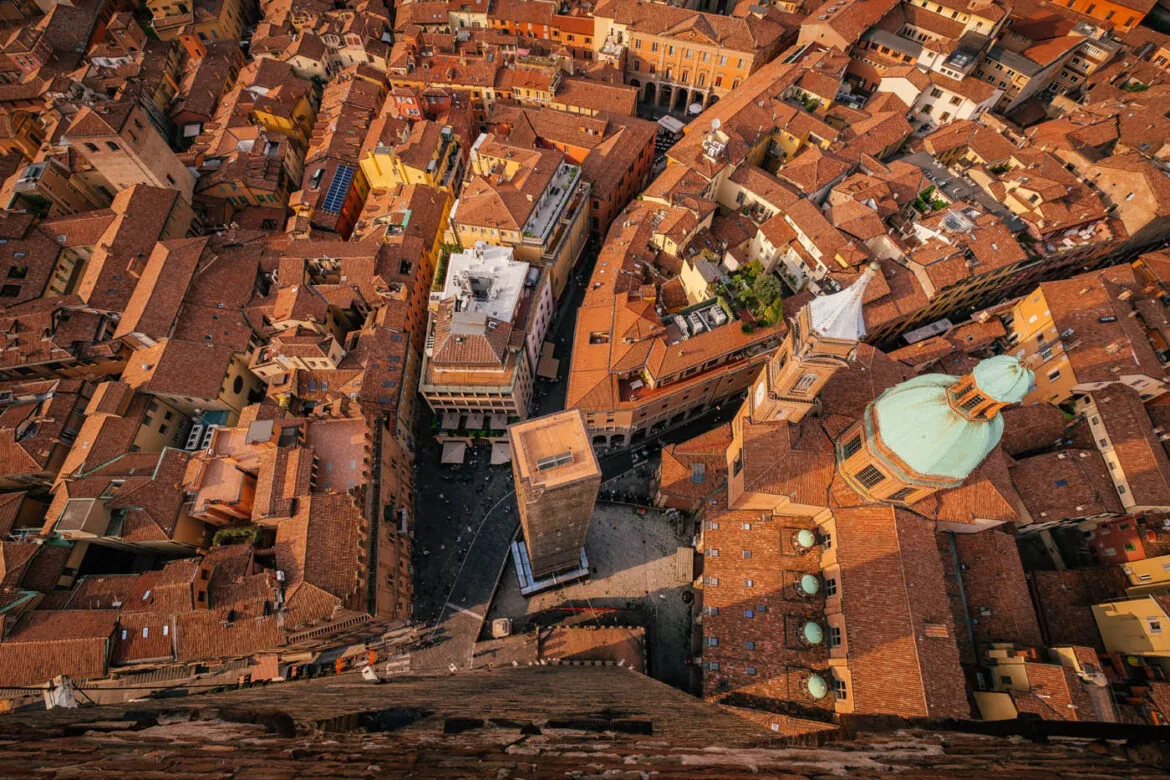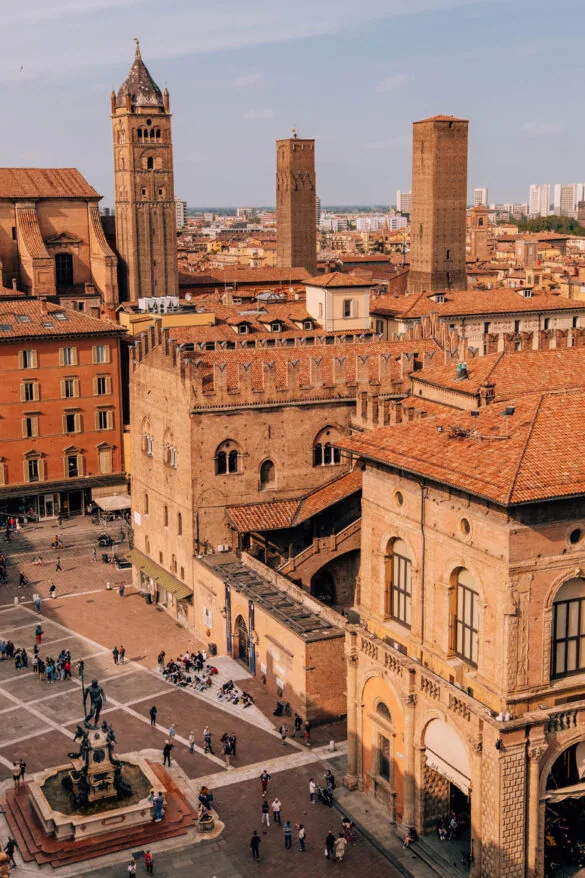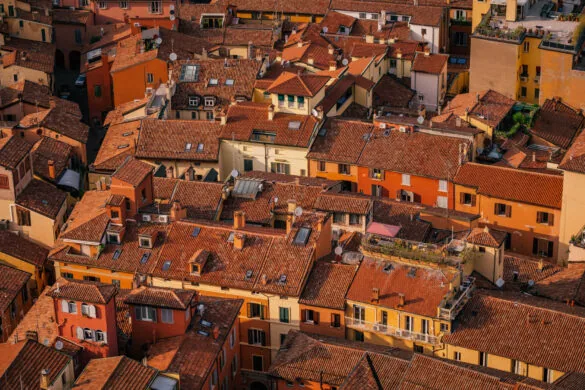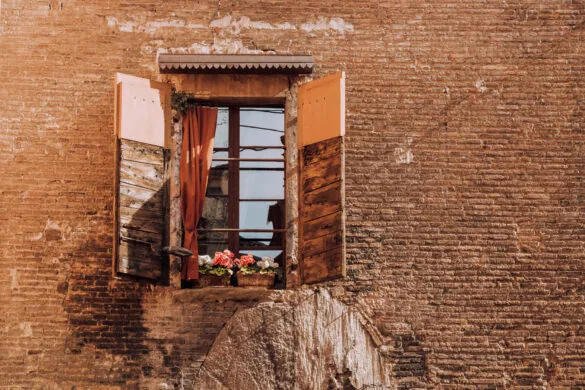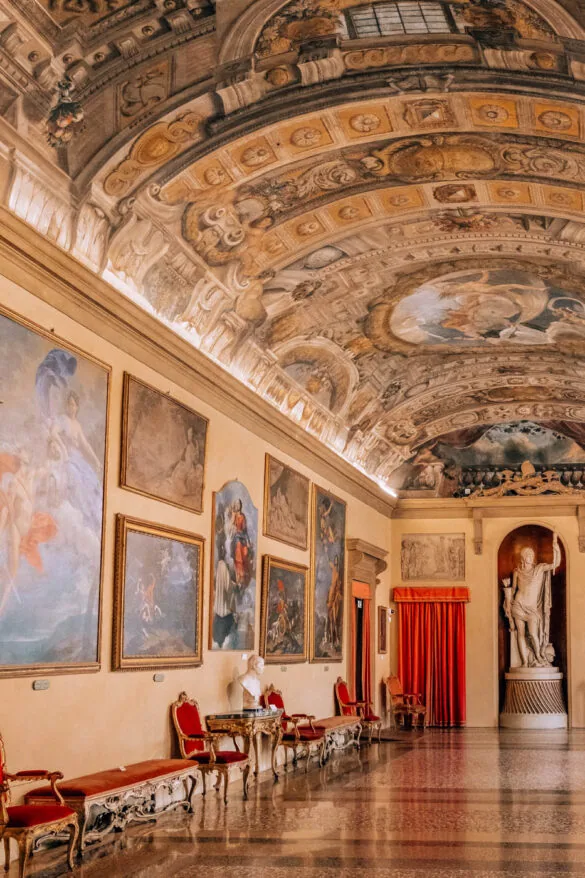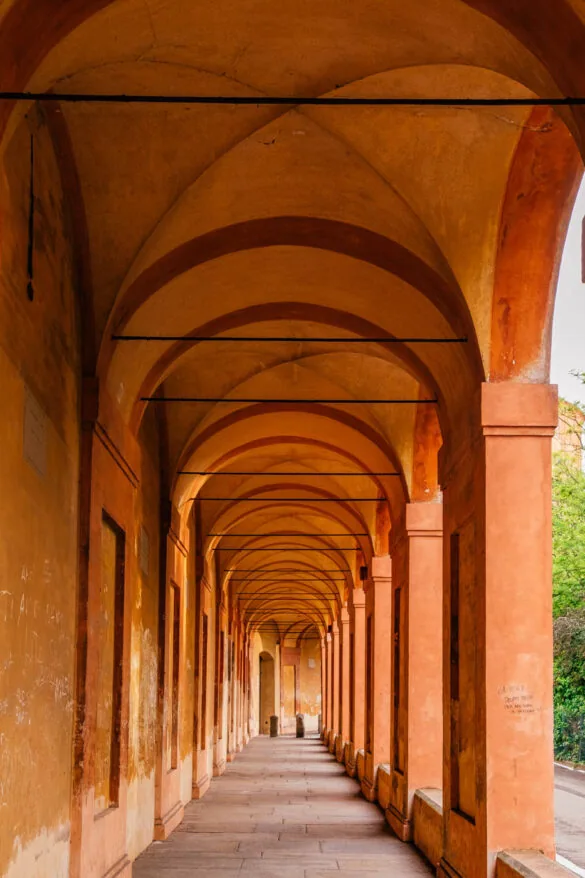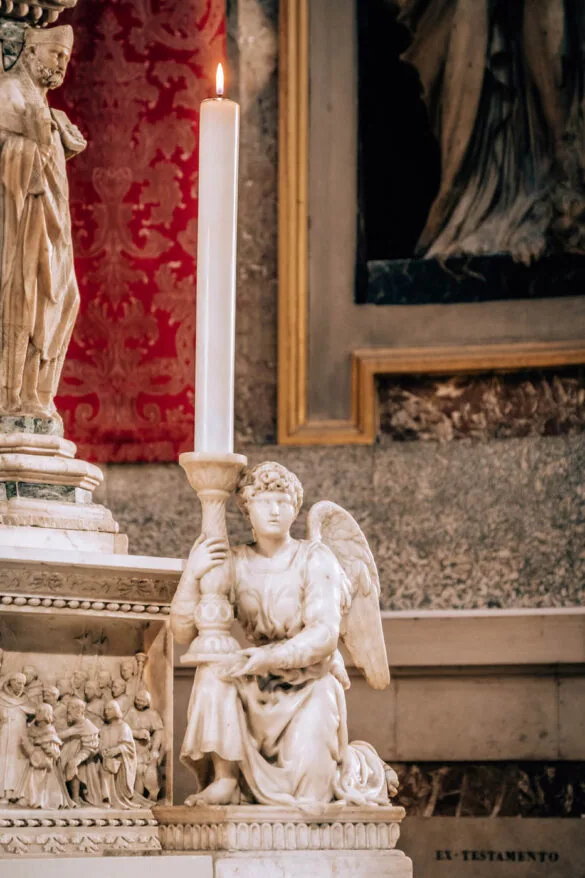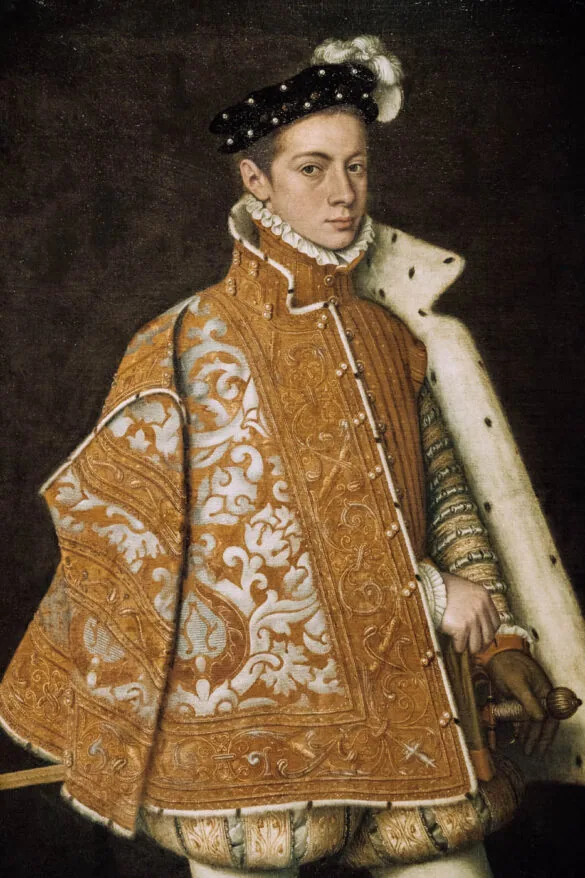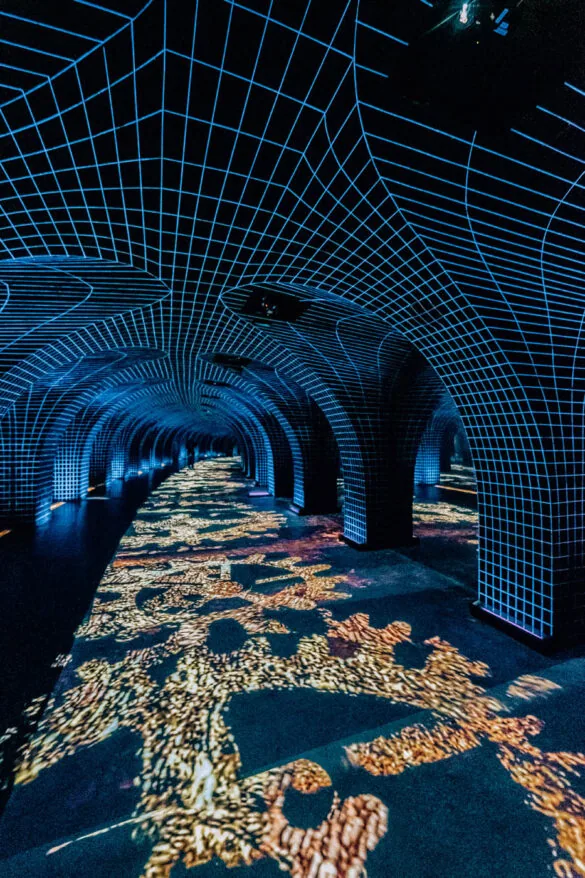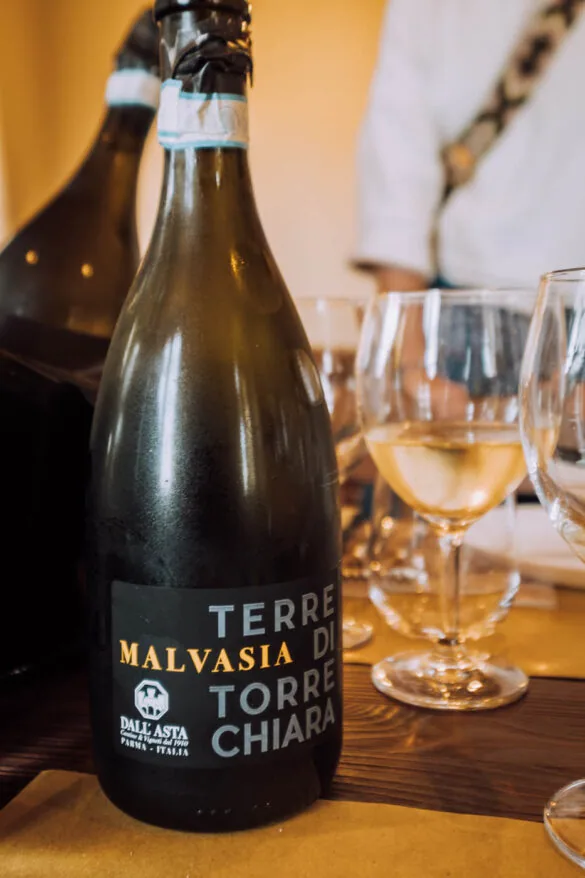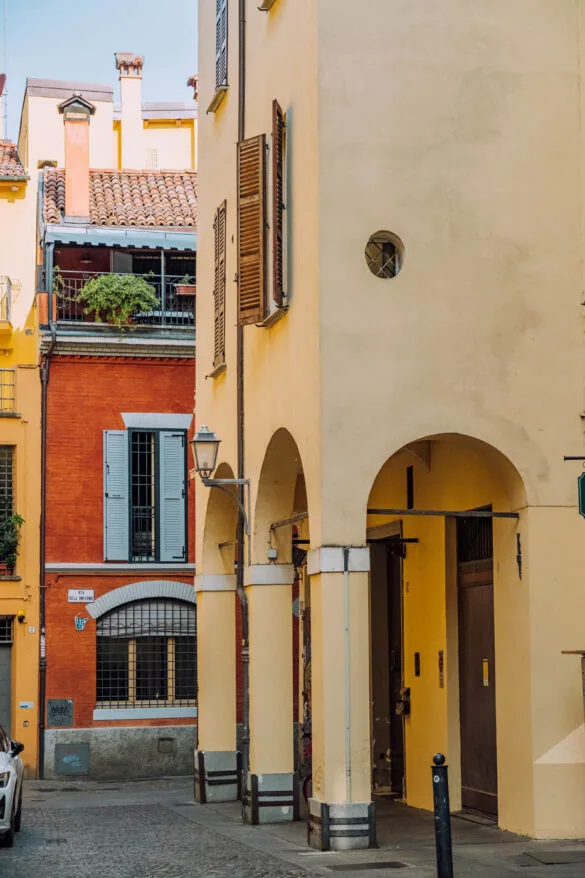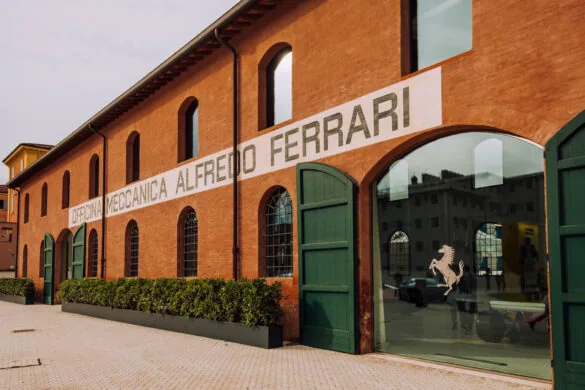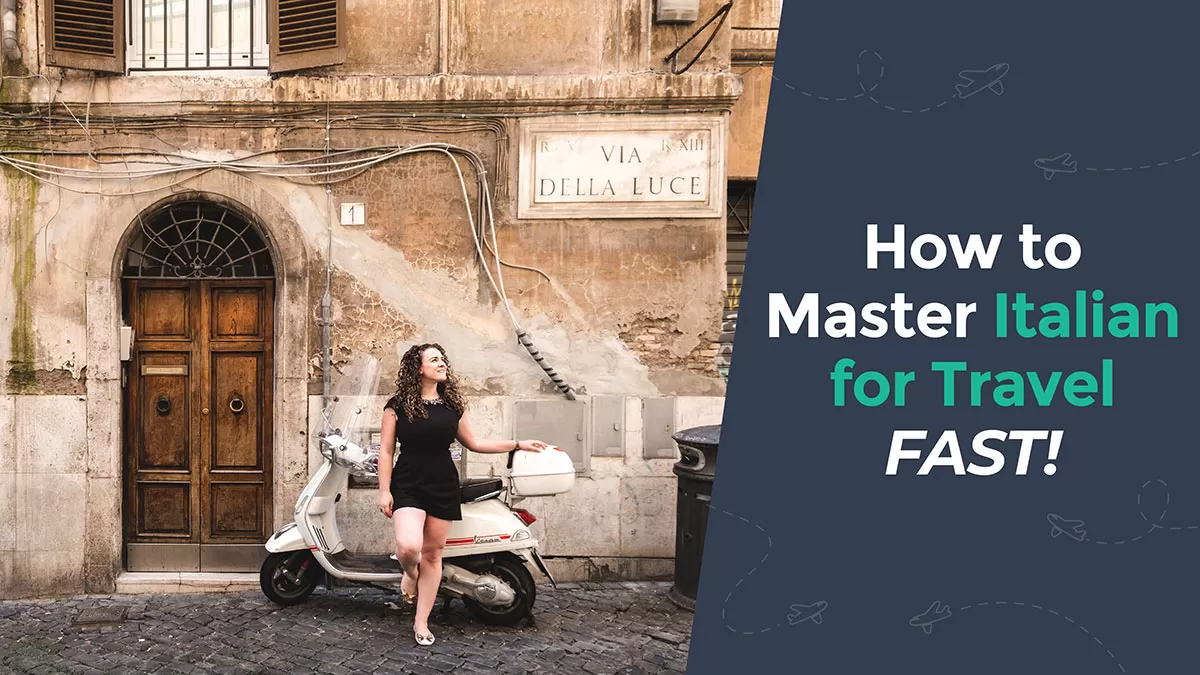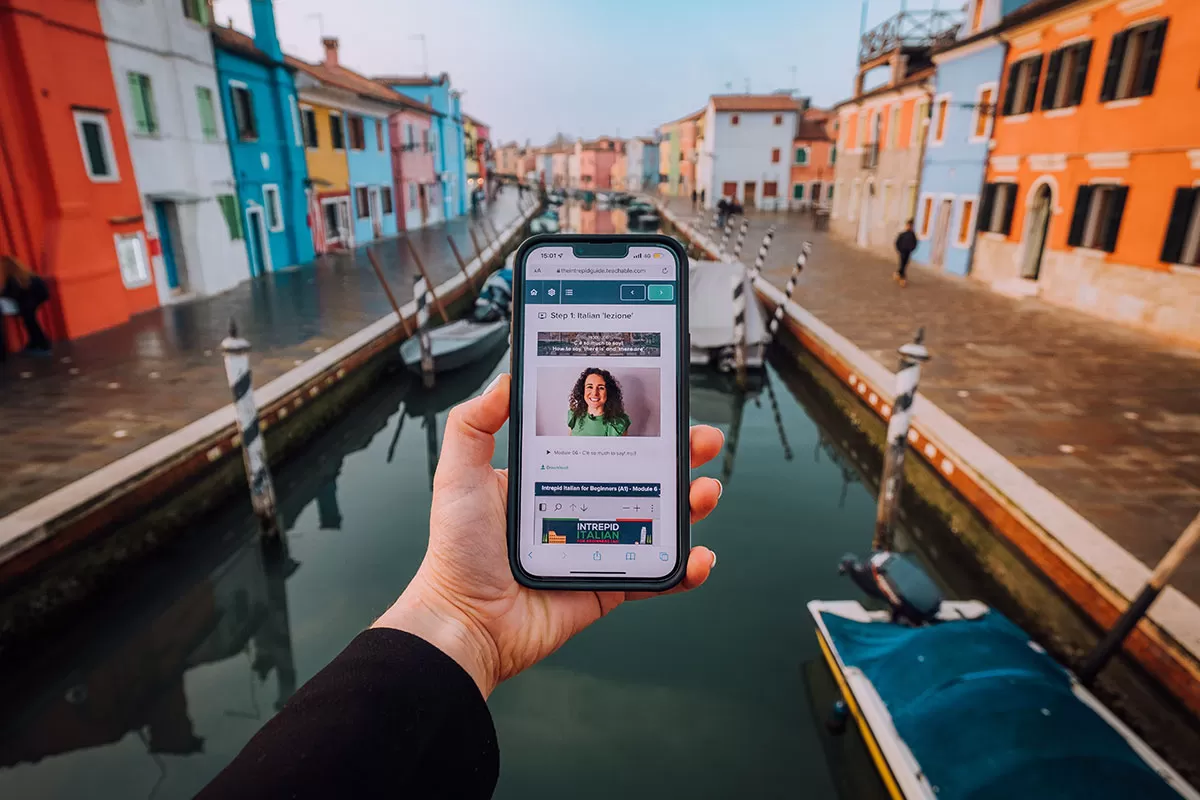Bologna, the capital of the Emilia-Romagna region, is the ideal destination as either a city getaway or part of a greater Italy trip. Strolling through its lively streets, you come across a charming mix of history, delicious flavors, and long-standing traditions, which create an ideal setting for enjoying life’s simple pleasures.
Table of contents
Here’s what we’ll cover in this Bologna guide:
- Bologna: La Grassa, La Dotta e La Rossa
- Bolognese dialect
- TOP THINGS to do in Bologna
- UNIQUE THINGS to do in Bologna
- Most Beautiful Churches in Bologna
- Best Museums in Bologna
- Best Food in Bologna
- Things to do in Bologna with Kids
- Where to stay in Bologna
Need to book accommodation? Don’t miss my detailed guide to the best hotels in Bologna for all budgets, including apartments and family options.
Bologna: La Grassa, La Dotta e La Rossa
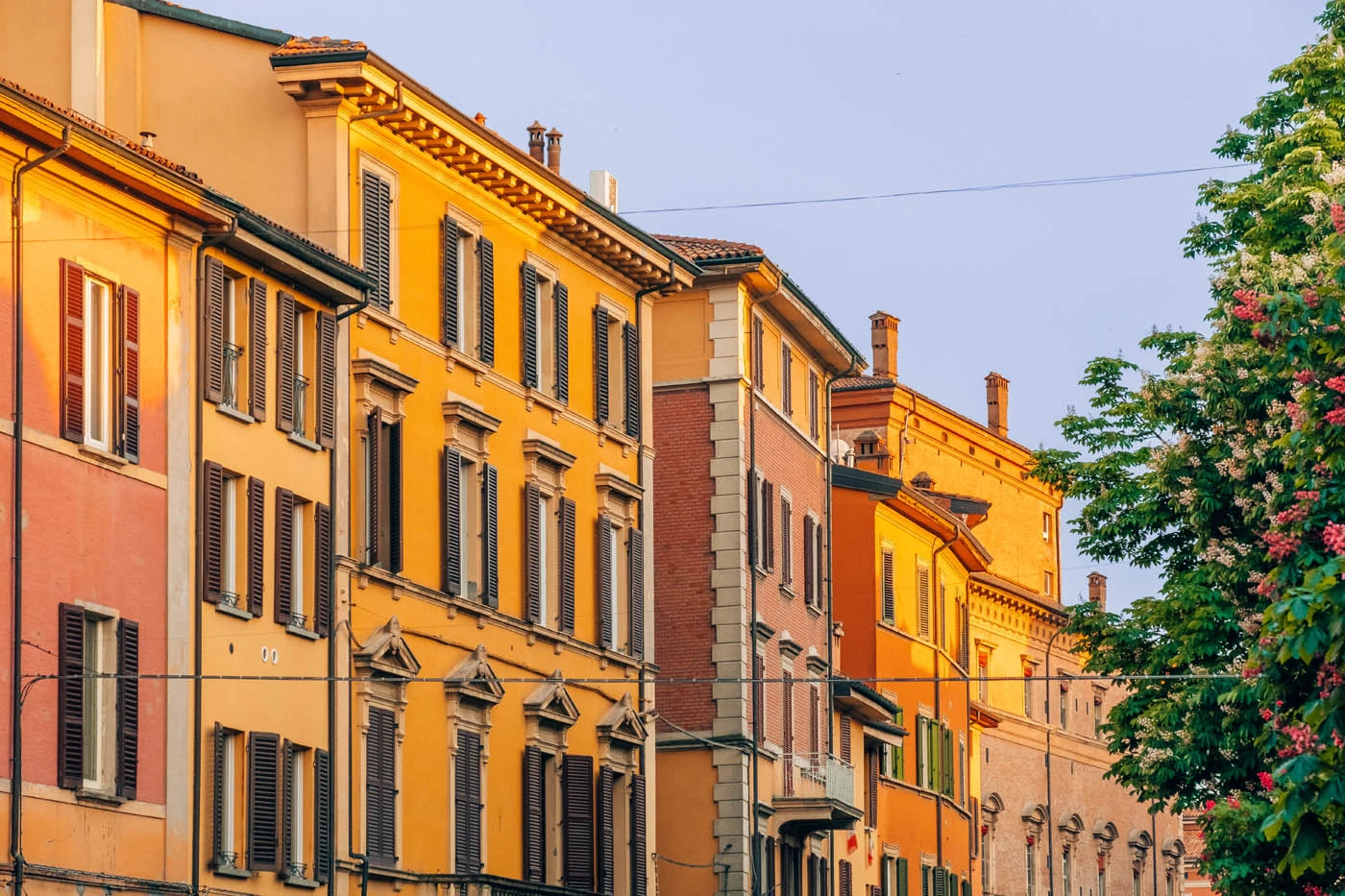 This delightful Italian destination goes by a trio of fascinating nicknames, each revealing a unique aspect of its charm. “La Dotta” (the learned) salutes Bologna’s brilliant intellect as host to the Western world’s oldest university. “La Grassa” (the fat) celebrates the city’s status as a gastronomic haven and “La Rossa” (the red) beckons with the city’s warm, welcoming terracotta buildings and nods to its left-leaning politics.
This delightful Italian destination goes by a trio of fascinating nicknames, each revealing a unique aspect of its charm. “La Dotta” (the learned) salutes Bologna’s brilliant intellect as host to the Western world’s oldest university. “La Grassa” (the fat) celebrates the city’s status as a gastronomic haven and “La Rossa” (the red) beckons with the city’s warm, welcoming terracotta buildings and nods to its left-leaning politics.
Bolognese dialect
 Bologna’s vivacious spirit shines through in its local dialect, Bolognese. This linguistic treasure is peppered with charming quirks like the unique ‘z’ sound. Unlike the standard Italian “z” sound, which is a simple fricative, the Bolognese ‘z’ has a unique hissing quality, similar to the “zh” sound in English. This is because the tongue is slightly more relaxed and the opening between the tongue and ridge is wider, creating a vibration as the air passes through. To hear this sound in action, listen to a Bolognese speaker say “pizza” or “piazza”!
Bologna’s vivacious spirit shines through in its local dialect, Bolognese. This linguistic treasure is peppered with charming quirks like the unique ‘z’ sound. Unlike the standard Italian “z” sound, which is a simple fricative, the Bolognese ‘z’ has a unique hissing quality, similar to the “zh” sound in English. This is because the tongue is slightly more relaxed and the opening between the tongue and ridge is wider, creating a vibration as the air passes through. To hear this sound in action, listen to a Bolognese speaker say “pizza” or “piazza”!
The local dialect is also filled with unique terms. Among the most emblematic Bolognese words is “Soccia” (literally, “suck it”), a versatile interjection used for emphasis or exclamation. For instance, locals might say “Soccia, che storia!” when enthralled by a fascinating tale. Another great one is “Vèz”, which literally means “old” and is commonly used in the sense of “buddy”.
If you’re unsure about which area to choose for your stay, check out this guide for recommendations on where to stay in Bologna.
TOP Things to do in Bologna
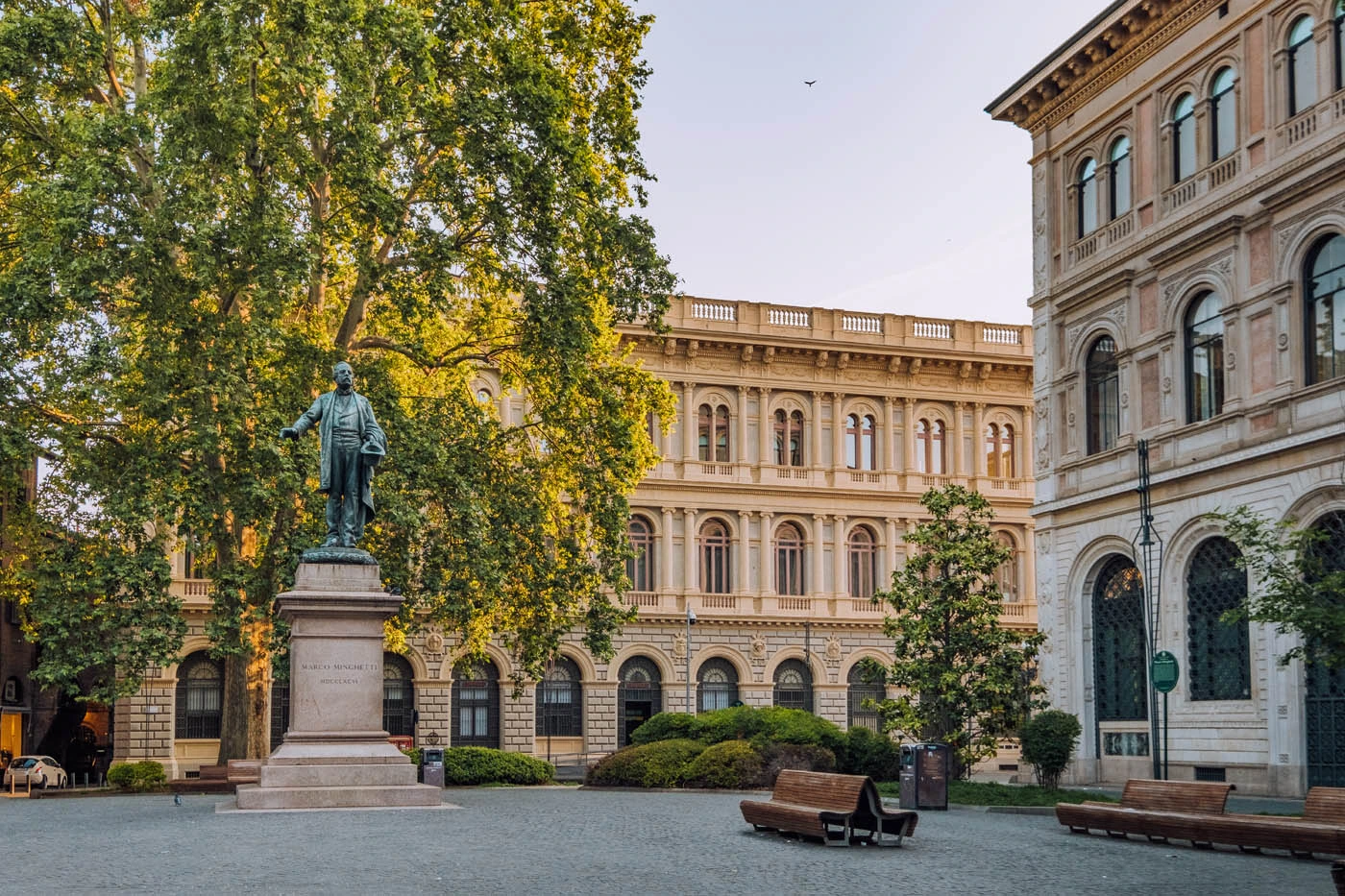
Piazza Minghetti
Bologna, with its amazing assortment of historical gems and lively trattorias, doesn’t just satisfy expectations – it easily surpasses them.
Joining a Bologna walking tour is a great way to explore the city and its top attractions, especially since it boasts one of Europe’s largest historical centers. You should also explore its intriguing history, and by participating in a history-focused tour of Bologna, you will discover the captivating stories and events that shaped this amazing city.
To catch the city at its liveliest, plan a visit in spring or fall when the weather is perfect for exploring and the university is buzzing with activity. On the other hand, be cautious about visiting in the summer, as the intense heat and humidity can ruin your adventure.
For the best times of the year and when to visit Italy, don’t miss my guide.
1. Roam Piazza Maggiore
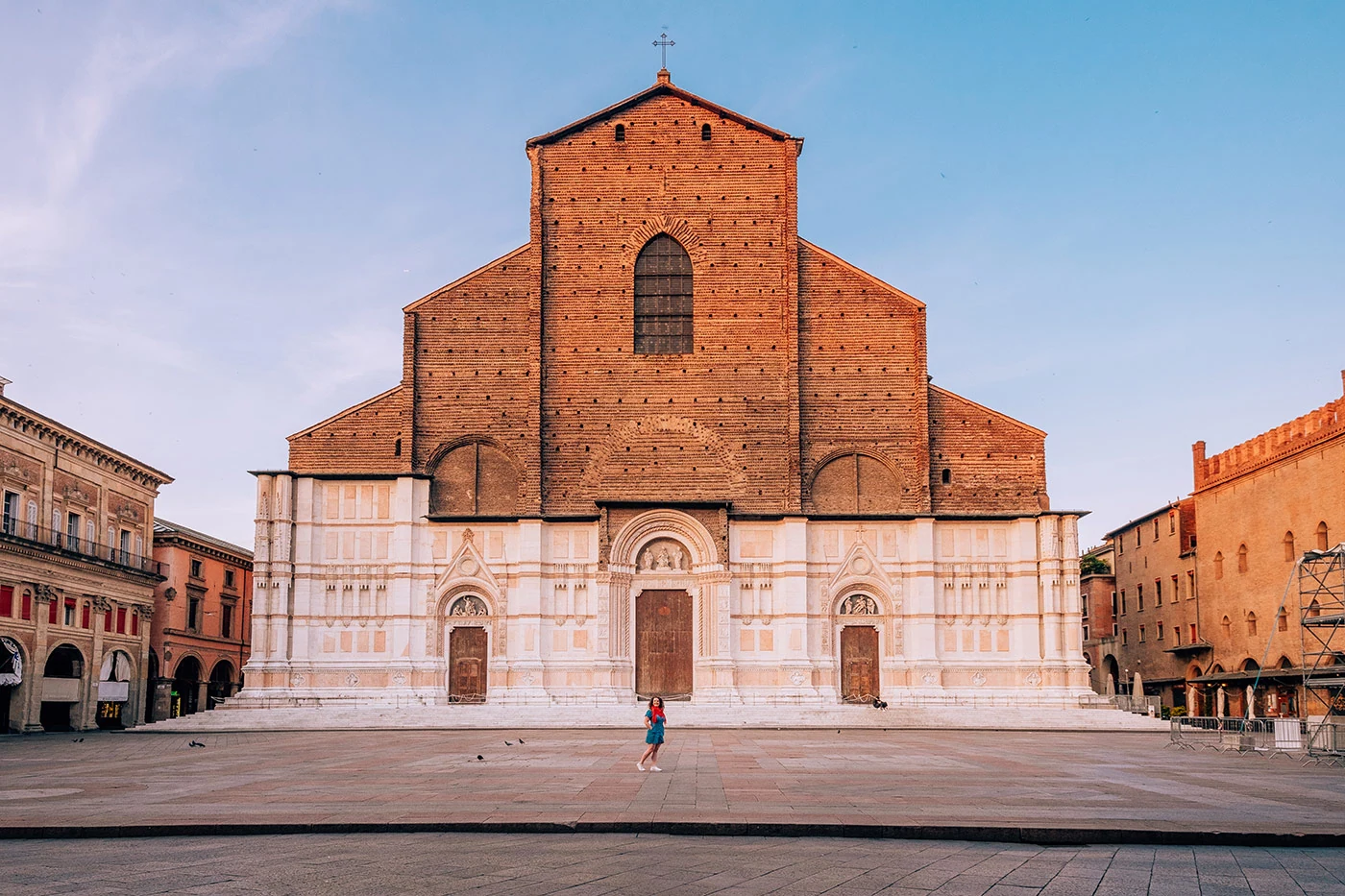
Piazza Maggiore is the city’s central square and a testament to its rich history and vibrant culture. This square was among the first of its kind constructed since the fall of the legendary Roman Empire, predating famous examples in Florence and Siena! It was built in the 1200s when the forward-thinking municipality developed this land into a shared space for market days and a meeting space for residents. Today, you’ll find yourself surrounded by iconic structures such as the Basilica di San Petronio, Palazzo dei Banchi, and Palazzo d’Accursio.
This walking tour of Bologna is perfect for an in-depth exploration of Piazza Maggiore and all the top sights in the historic city center.
2. See the charming Fountain of Neptune
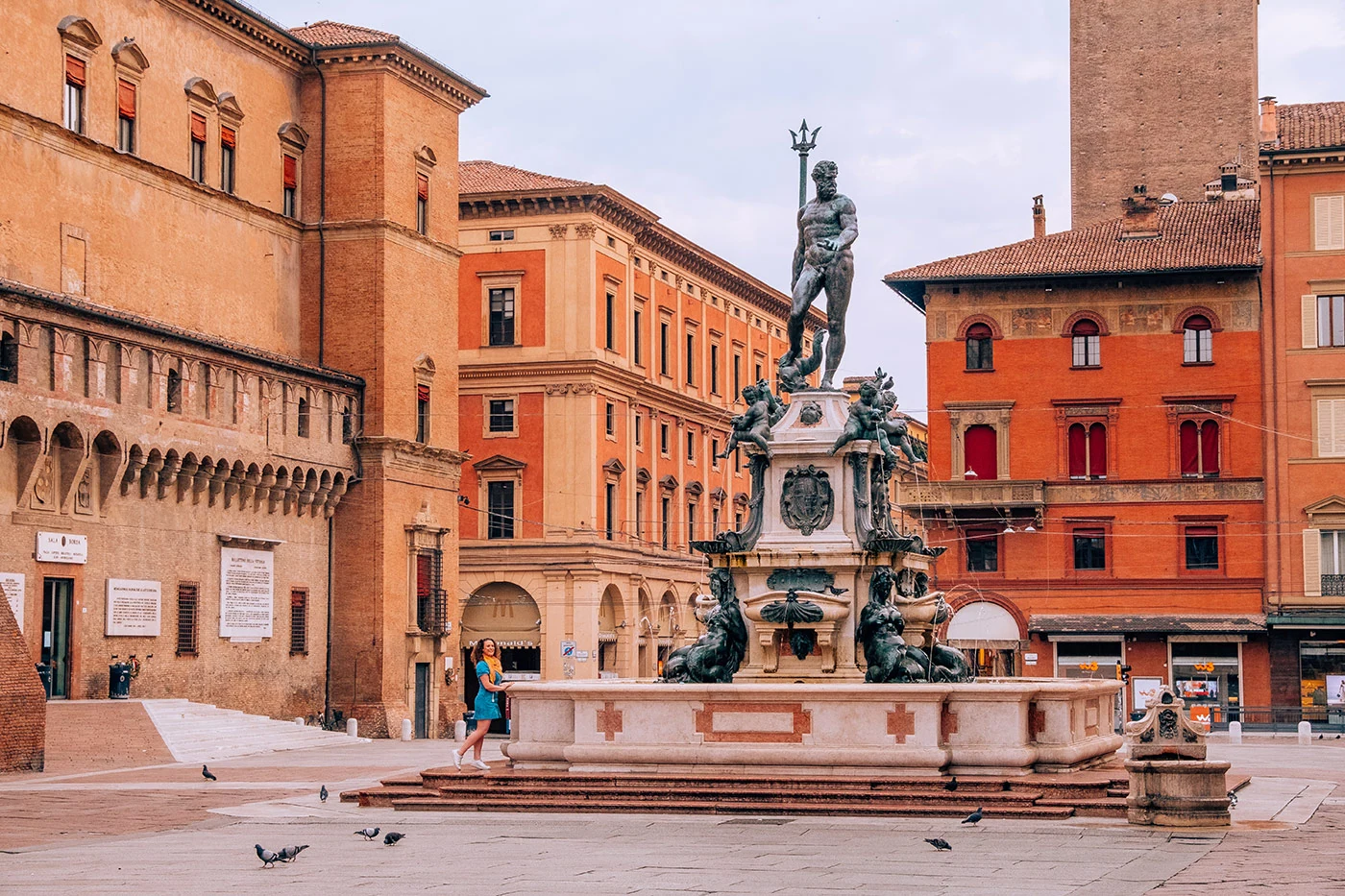
Located just off Piazza Maggiore, Bologna’s cherished Fountain of Neptune was commissioned by Pope Pius VI in the 16th century and created by Giambologna. An intriguing rumor suggests that the Pope was embarrassed by Neptune’s ample proportions “down there” and requested a reduction. Although Giambologna agreed, it is believed that he secretly incorporated a visual surprise from a certain angle! Apparently, if you gaze upon the statue from the corner of the Sala Borsa, with your eyes pointed directly at Neptune, something quite surprising will catch your eye…yep, it appears that the statue is sporting a bit of an erection! How? Well, it seems that Giambologna used some clever perspective tricks with one of Neptune’s fingers to create the illusion.
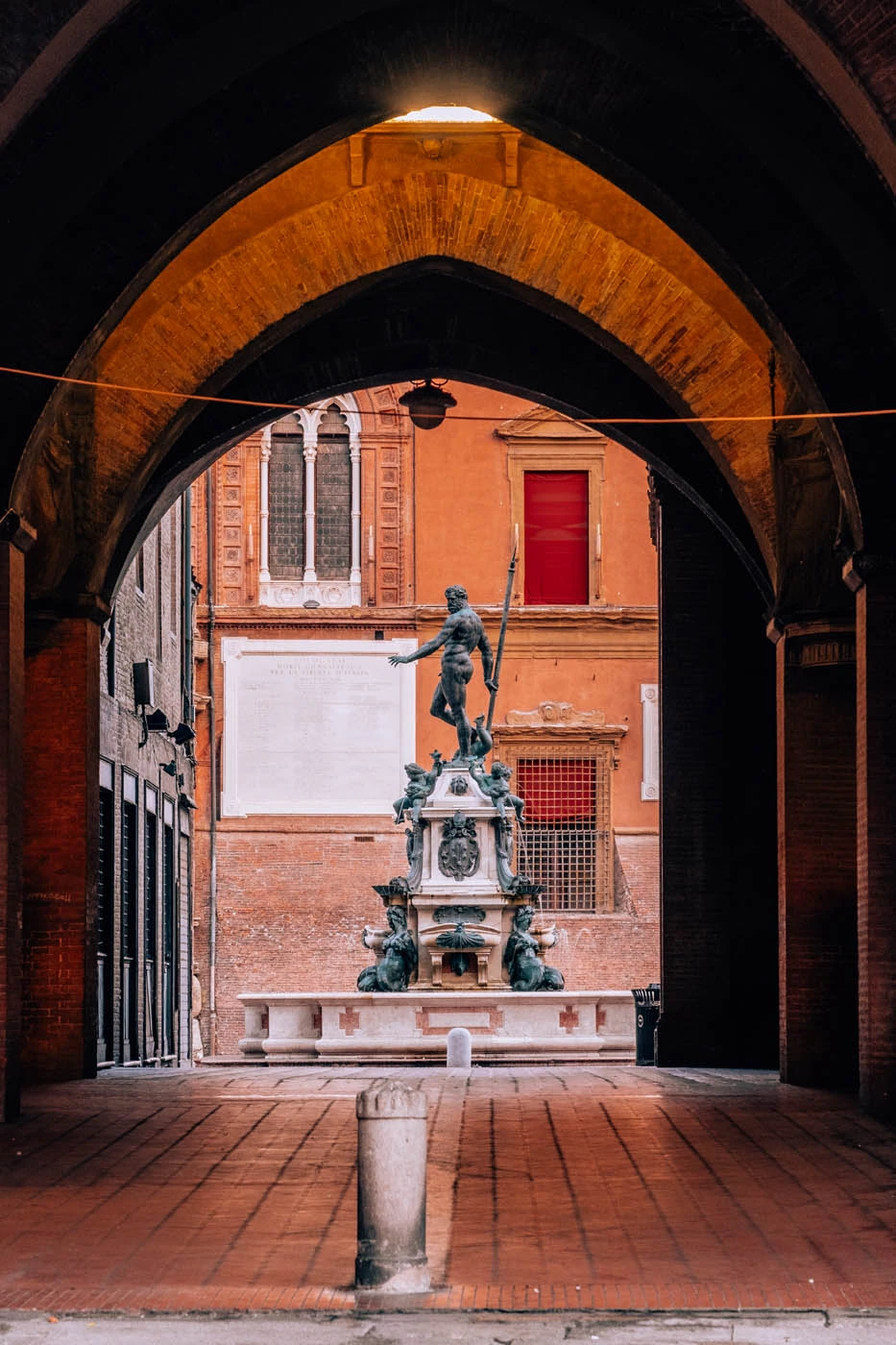
3. San Petronio, one of Italy’s biggest churches
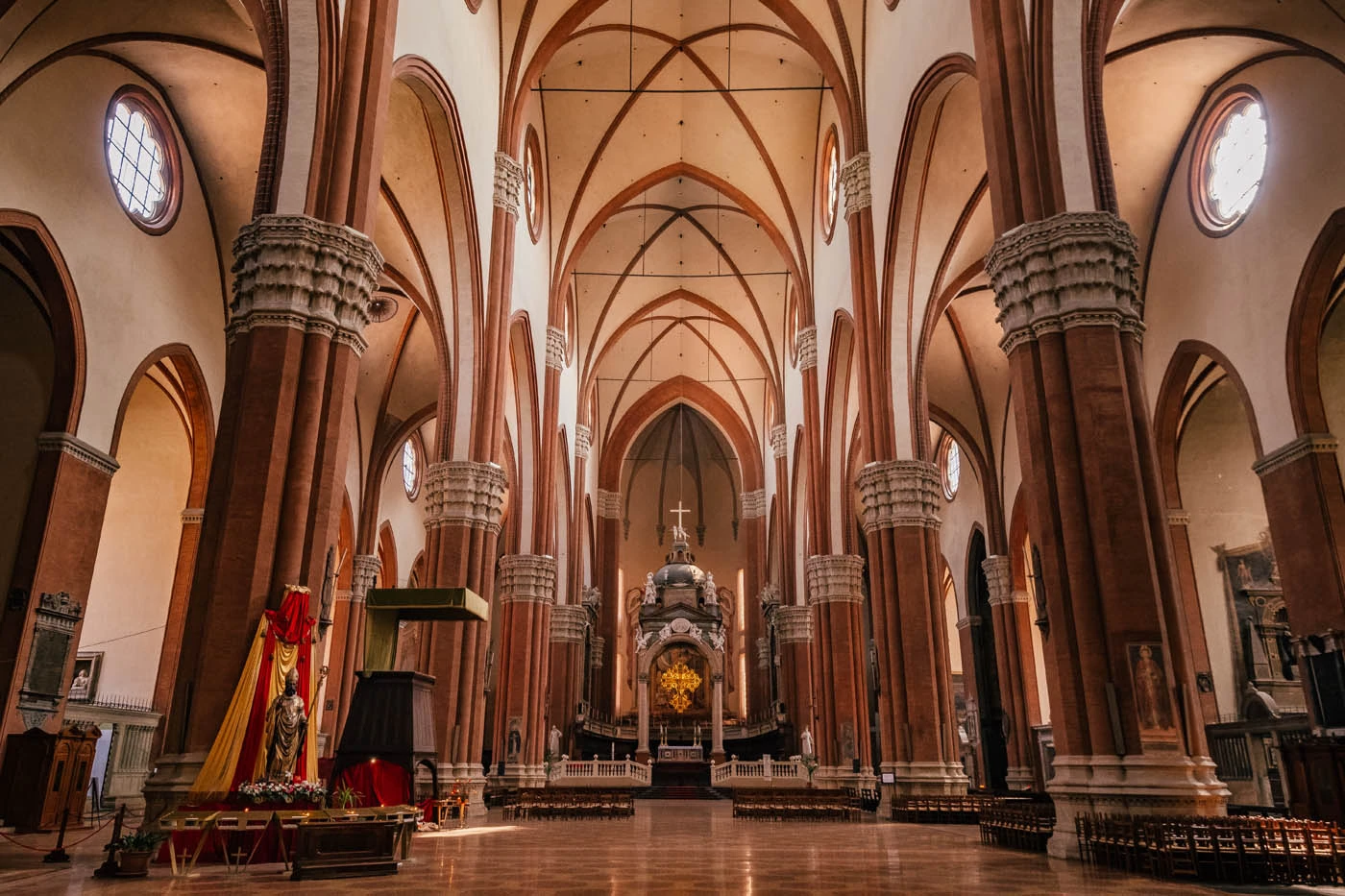
The Basilica of San Petronio is the highlight of Piazza Maggiore, featuring a captivating unfinished facade. Originally designed to surpass St. Peter’s Basilica in grandeur, Pope Pius IV halted these ambitions. Inside, marvel at the world’s oldest functioning organ from 1470 and the charming Music Chapel. Be sure to visit the splendid Bolognini Chapel, home to Giovanni da Modena’s impressive frescoes of “Heaven” and “Hell.” Don’t forget to admire Cassini’s extraordinary 67.27-meter sundial during your visit!
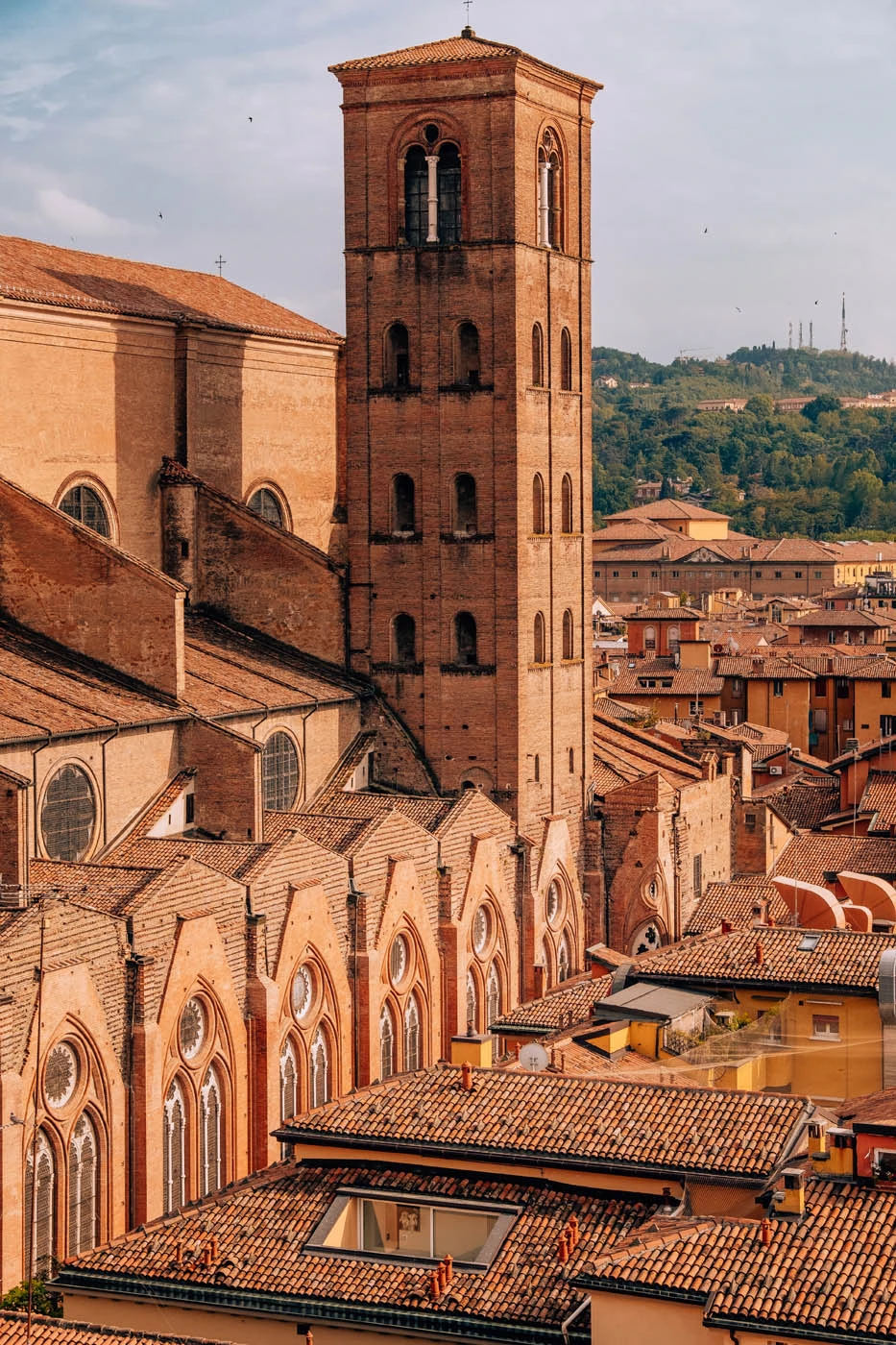

Bolognini Chapel by Giovanni da Modena
4. Asinelli and Garisenda: The two leaning towers of Bologna
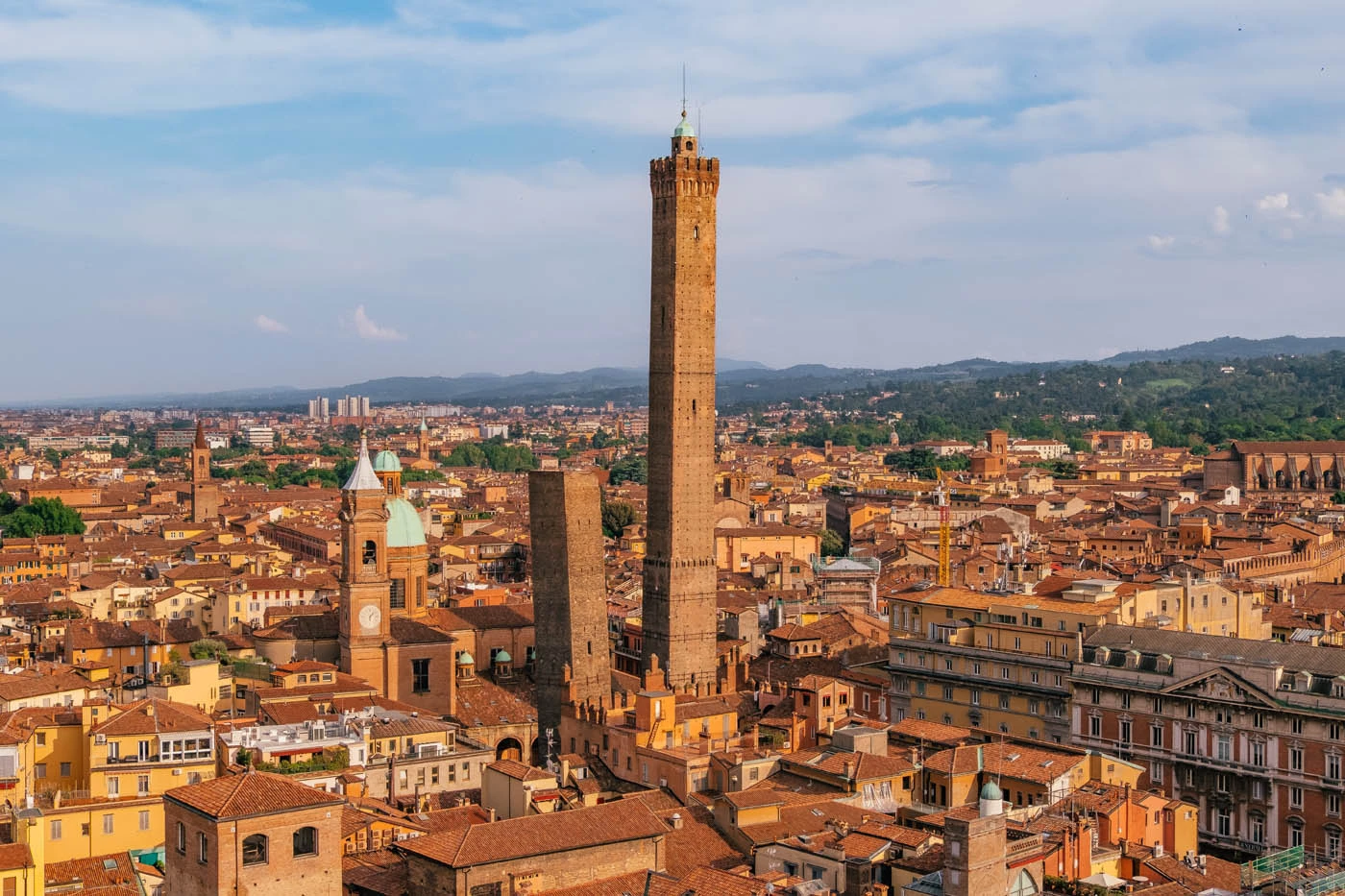
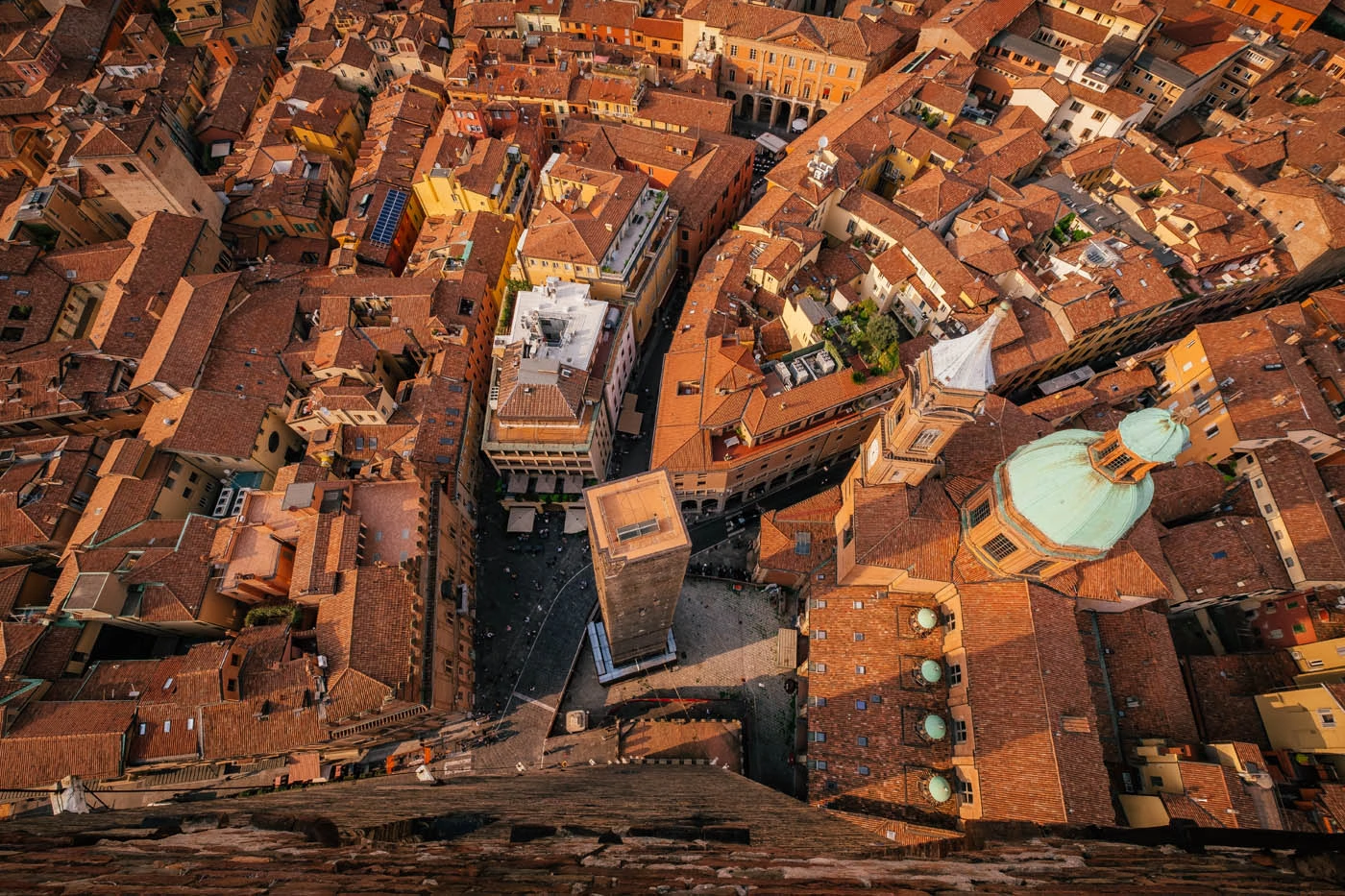 Did you know that Italy has more leaning towers than just the iconic one in Pisa? Take Bologna, for instance, where you’ll find not one, but two remarkable leaning towers. The taller of the two even surpasses the height of Pisa’s famous bell tower! Located in Piazza di Porta Ravegnana, the Asinelli and Garisenda towers stand as a symbol of competition during the Middle Ages between Bologna’s affluent families, each striving to construct the loftiest tower to showcase their power.
Did you know that Italy has more leaning towers than just the iconic one in Pisa? Take Bologna, for instance, where you’ll find not one, but two remarkable leaning towers. The taller of the two even surpasses the height of Pisa’s famous bell tower! Located in Piazza di Porta Ravegnana, the Asinelli and Garisenda towers stand as a symbol of competition during the Middle Ages between Bologna’s affluent families, each striving to construct the loftiest tower to showcase their power.
Their inclination, caused by unstable soil and foundation problems, is carefully managed. One of the towers, the Asinelli Tower, is open to visitors who can climb its 498 steps for a breathtaking birds-eye view of Bologna. Booking is essential as tickets sell out in advance.

5. Torre Prendiparte
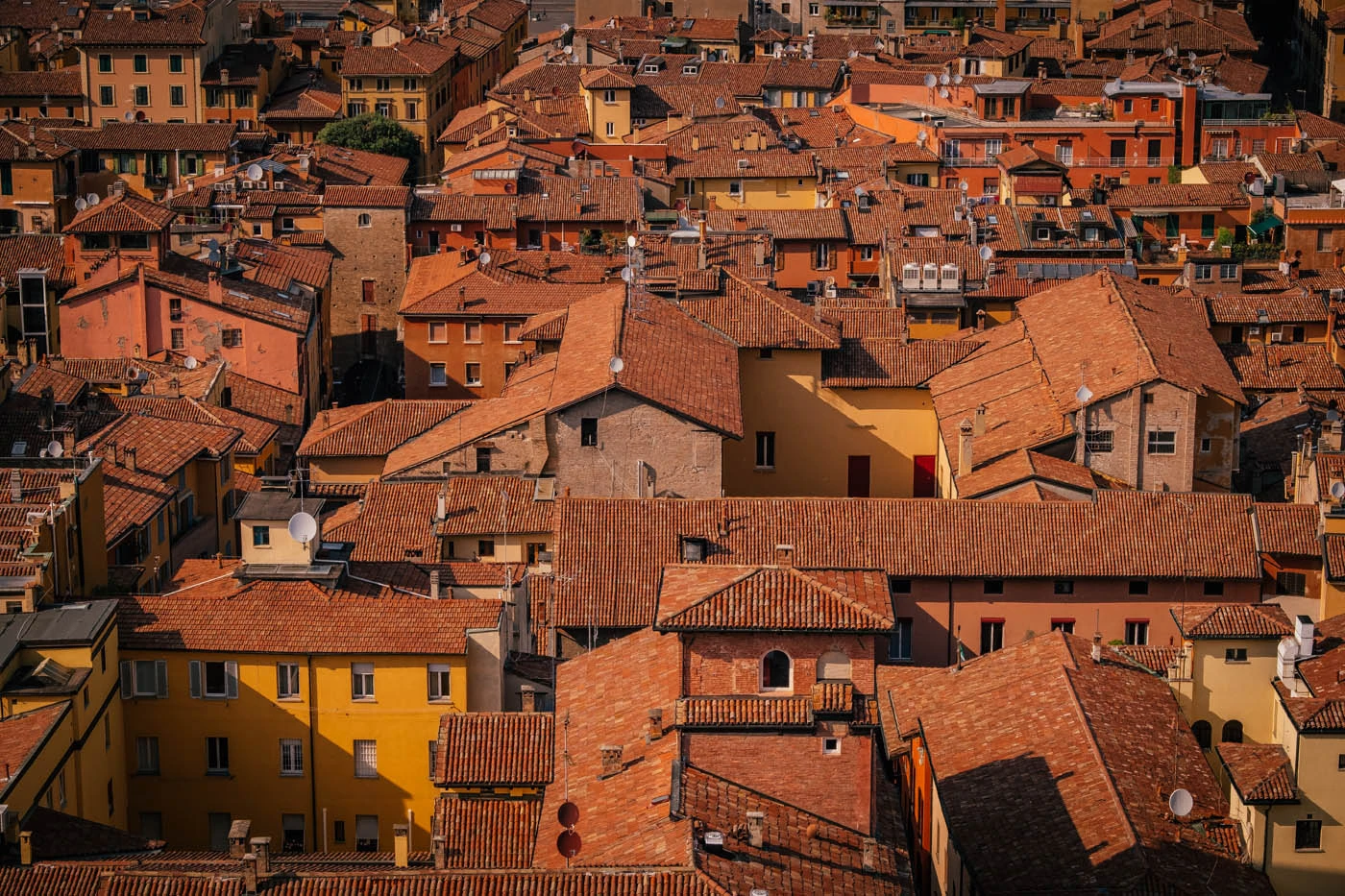
View from Torre Prendiparte
The Torre Prendiparte is another majestic tower that’s withstood the test of time. This tower once served as a stronghold for the influential Prendiparte clan and has functioned as a defensive fortress, a somber prison (with inscriptions from prisoners still visible), and currently operates as an exclusive bed & breakfast (though overnight stays are temporarily suspended). Standing at an impressive 60 meters tall, it is the second tallest tower in Bologna after Asinelli. Climbing the 12 floors to the panoramic terrace rewards you with stunning views of the city.
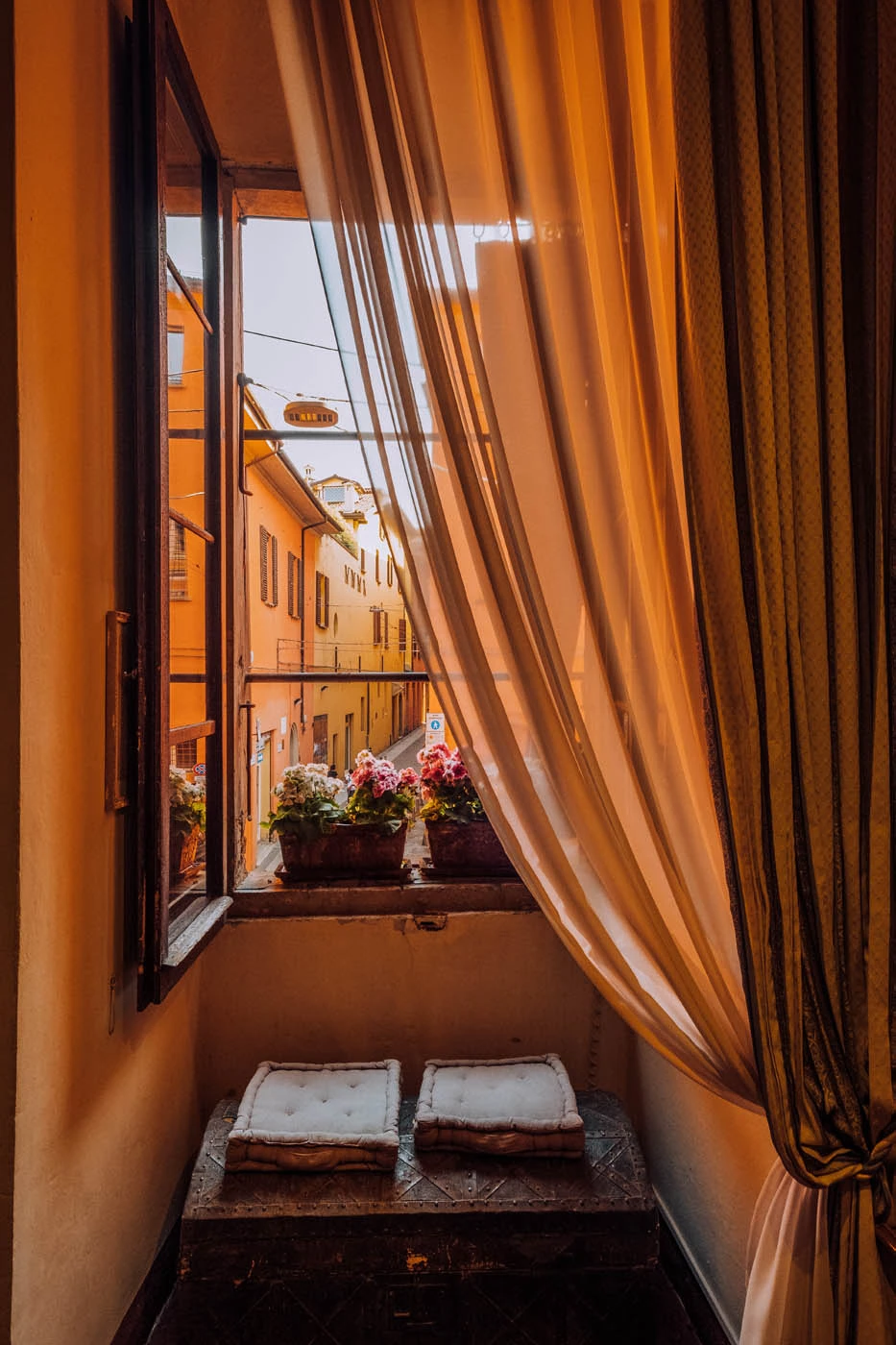
6. The world’s oldest university
The University of Bologna, established in 1088, is the oldest university in the Western world, and its historical landmarks offer a wealth of discoveries for inquisitive minds. Over nine centuries, it has amassed numerous valuable artifacts, including the world’s oldest Torah, written between 1155 and 1225. The University has also attracted notable Italian cultural figures such as Francesco Petrarca, Giosuè Carducci, Laura Bassi (the first woman to hold a university chair), and the renowned Umberto Eco, who taught Semiotics here.
7. The Archiginnasio’s Anatomical Theater
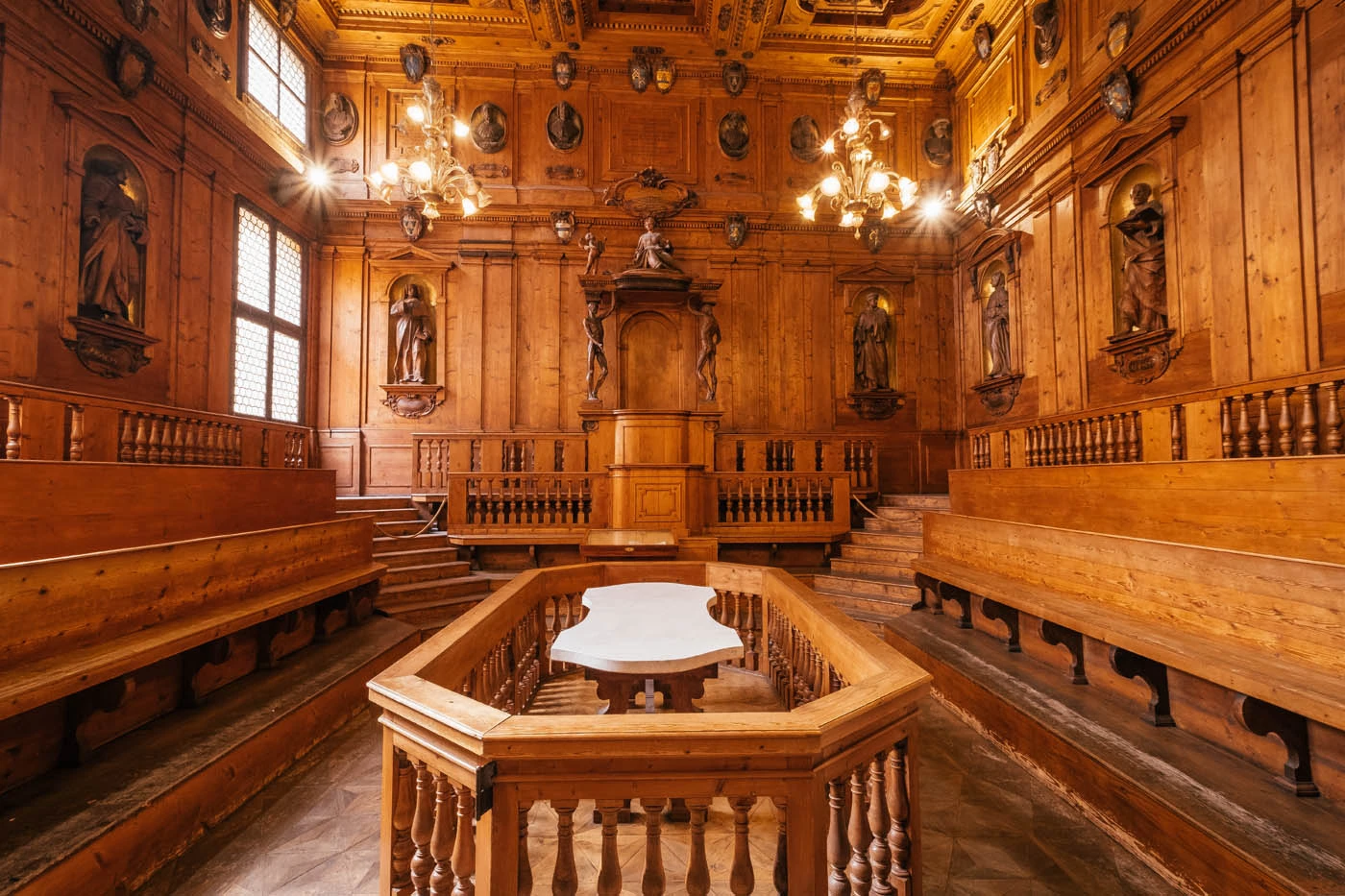
 In the 16th century, Pope Pius consolidated various faculties throughout Bologna into a single intellectual hub: the Archiginnasio. This became the University of Bologna’s first permanent seat. Today, it hosts numerous historical gems, such as a library containing over 800,000 volumes. The crowning jewel, however, is the Anatomical Theater, a wooden, horseshoe-shaped amphitheater where human dissections and surgical demonstrations were held for medical education. Absolutely captivating!
In the 16th century, Pope Pius consolidated various faculties throughout Bologna into a single intellectual hub: the Archiginnasio. This became the University of Bologna’s first permanent seat. Today, it hosts numerous historical gems, such as a library containing over 800,000 volumes. The crowning jewel, however, is the Anatomical Theater, a wooden, horseshoe-shaped amphitheater where human dissections and surgical demonstrations were held for medical education. Absolutely captivating!
8. The Botanical Garden and Herbarium
Established in the 1500s, the University’s Botanical Garden and Herbarium is a serene haven dedicated to the study of plant medicine. Spanning 2 hectares, this captivating sanctuary houses 5,000 plant species, such as unique succulents and fascinating carnivorous plants. Additionally, it features two greenhouses, expertly recreated natural habitats and a herbarium with an invaluable assortment of 16th-century dried plants.
9. Explore Palazzo Re Enzo
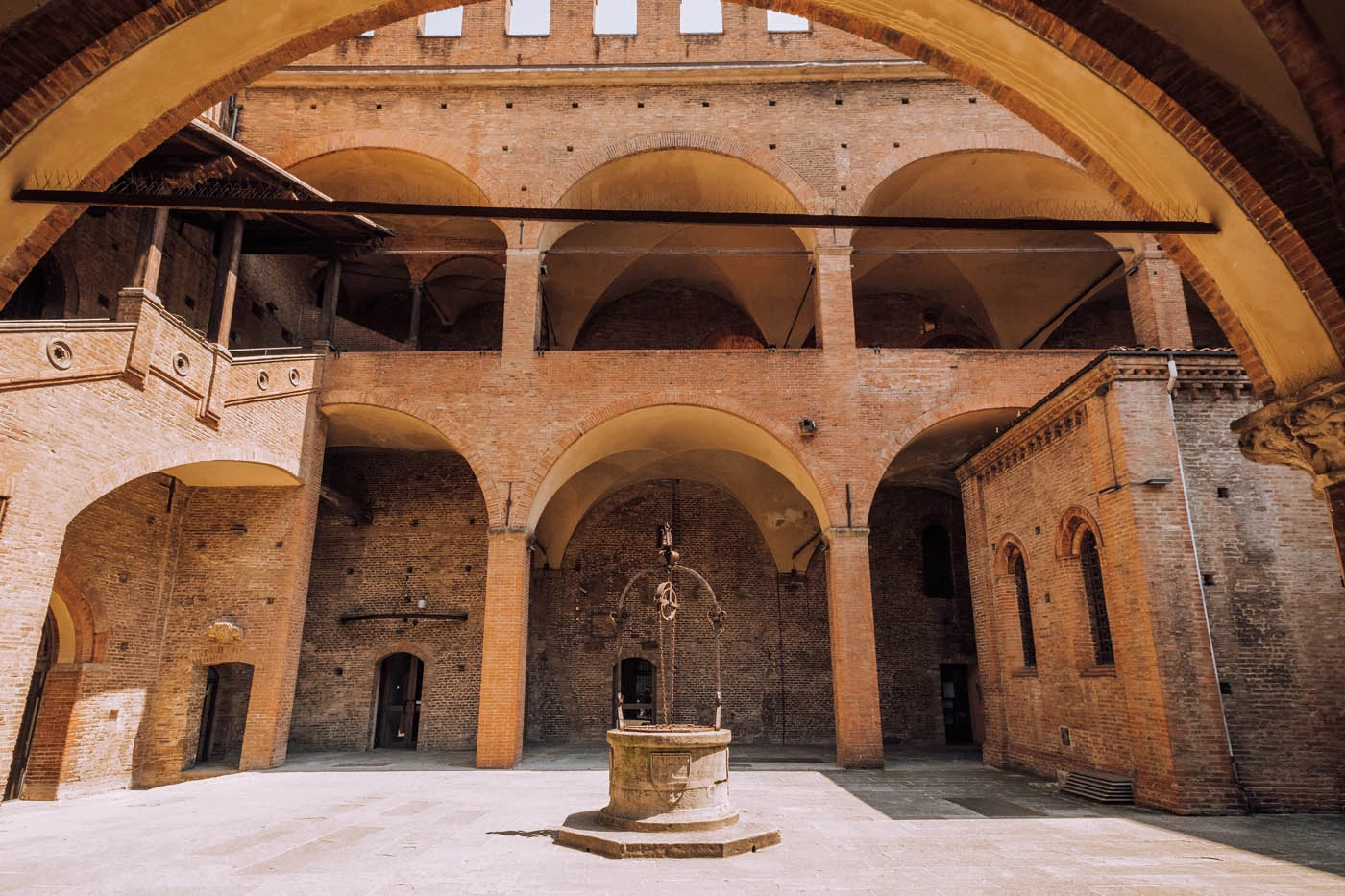 The 13th-century Palazzo Re Enzo, a medieval masterpiece, was initially constructed to expand the city’s government offices. It’s named after its most captivating prisoner, King Enzo of Sardinia (son of Emperor Frederick II), who found himself residing in this “lavish jail” following the Battle of Fossalta. For 23 years, King Enzo indulged in a luxurious lifestyle with gold chains, delicious food, and charming company. Today, Palazzo Re Enzo serves as a venue for cultural events, but its enthralling past continues to captivate.
The 13th-century Palazzo Re Enzo, a medieval masterpiece, was initially constructed to expand the city’s government offices. It’s named after its most captivating prisoner, King Enzo of Sardinia (son of Emperor Frederick II), who found himself residing in this “lavish jail” following the Battle of Fossalta. For 23 years, King Enzo indulged in a luxurious lifestyle with gold chains, delicious food, and charming company. Today, Palazzo Re Enzo serves as a venue for cultural events, but its enthralling past continues to captivate.
10. The old town hall at Palazzo d’Accursio
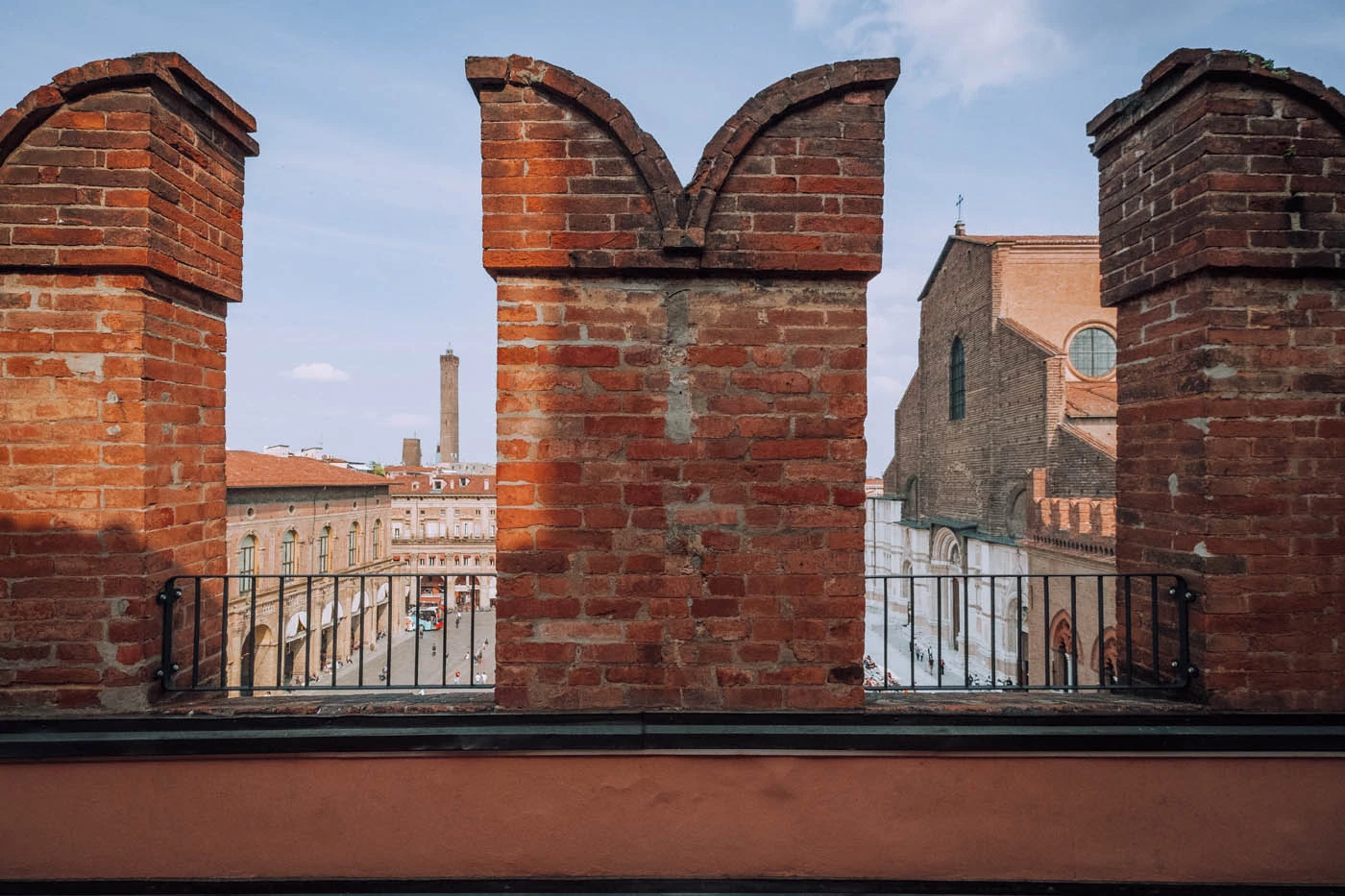
View from Torre dell’Orologio terrace at Palazzo d’Accursio
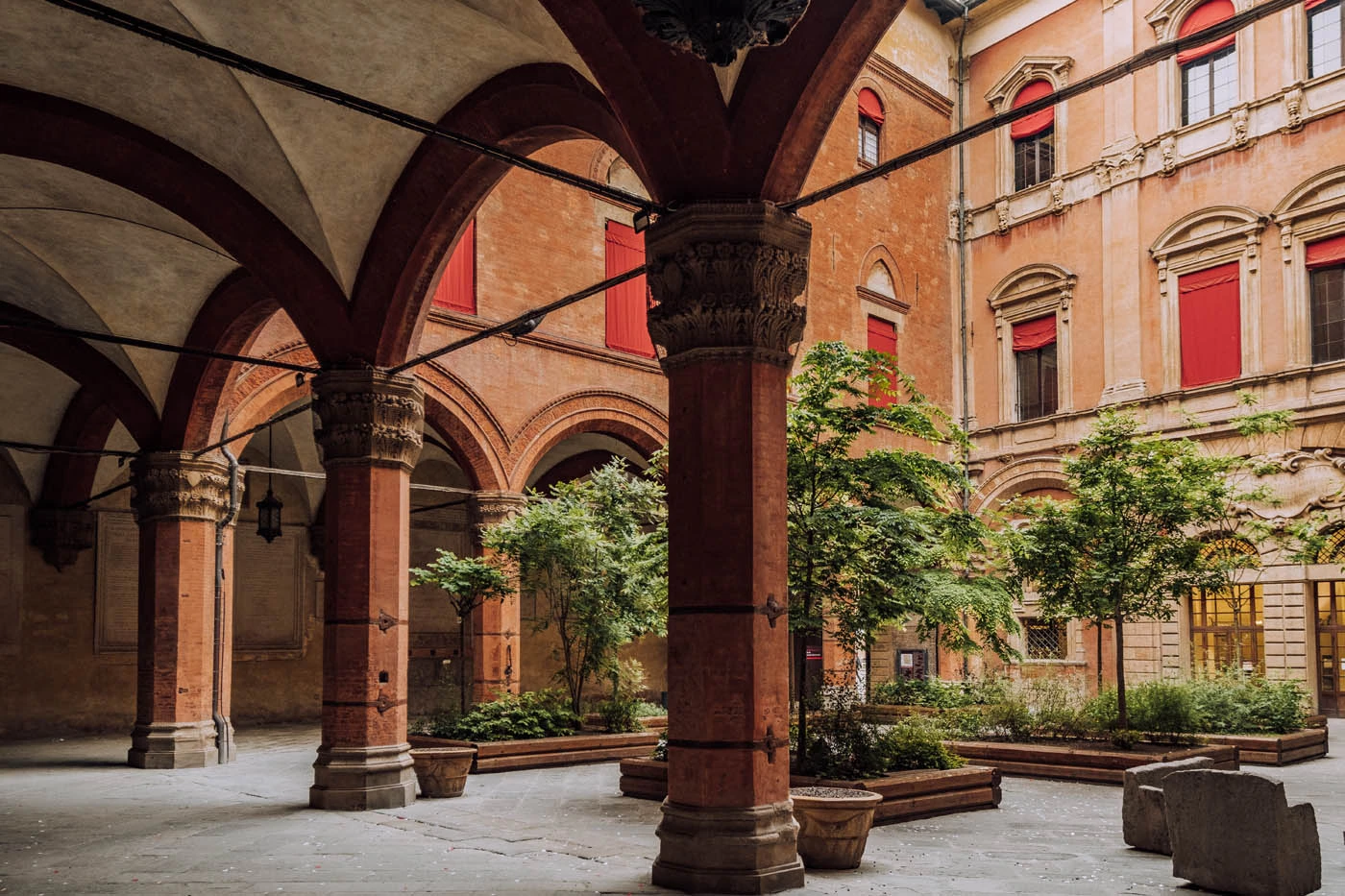 Located in the heart of Piazza Maggiore, the historic Palazzo D’Accursio is a true treasure. Serving as Bologna’s city government center since 1336, this architectural marvel combines buildings from various centuries into one magnificent masterpiece. Named after Accursio, a renowned law master who once resided here, the palace boasts must-see features such as the Sala Urbana with its frescoed coats of arms representing legendary Bolognese figures, and the Farnese Chapel, where vibrant frescoes vividly depict the city’s rich history.
Located in the heart of Piazza Maggiore, the historic Palazzo D’Accursio is a true treasure. Serving as Bologna’s city government center since 1336, this architectural marvel combines buildings from various centuries into one magnificent masterpiece. Named after Accursio, a renowned law master who once resided here, the palace boasts must-see features such as the Sala Urbana with its frescoed coats of arms representing legendary Bolognese figures, and the Farnese Chapel, where vibrant frescoes vividly depict the city’s rich history.
It’s also from Palazzo D’Accursio that you’ll get one of the best views of Piazza Maggiore and Bologna. Don’t miss the Torre dell’Orologio (Clock Tower). The tower was added to Francesco Accursio’s house, and after his death, it was bought by the growing Municipality of Bologna. In 1444, it was turned into a bell tower with the installation of the first mechanical clock connected to a bell that rang every hour on the hour. From this moment on, the tower became a true point of reference for the entire city, as it not only marked the passing of time but also represented a reference marker for the regulation of clocks all over Bologna! To visit the Municipal Art Collections and Clock Tower, booking is essential. Get your skip-the-line tickets for the Clock Tower and Art Collections here.

Civic Art Collection at Palazzo d’Accursio
11. The famous porticoes of Bologna
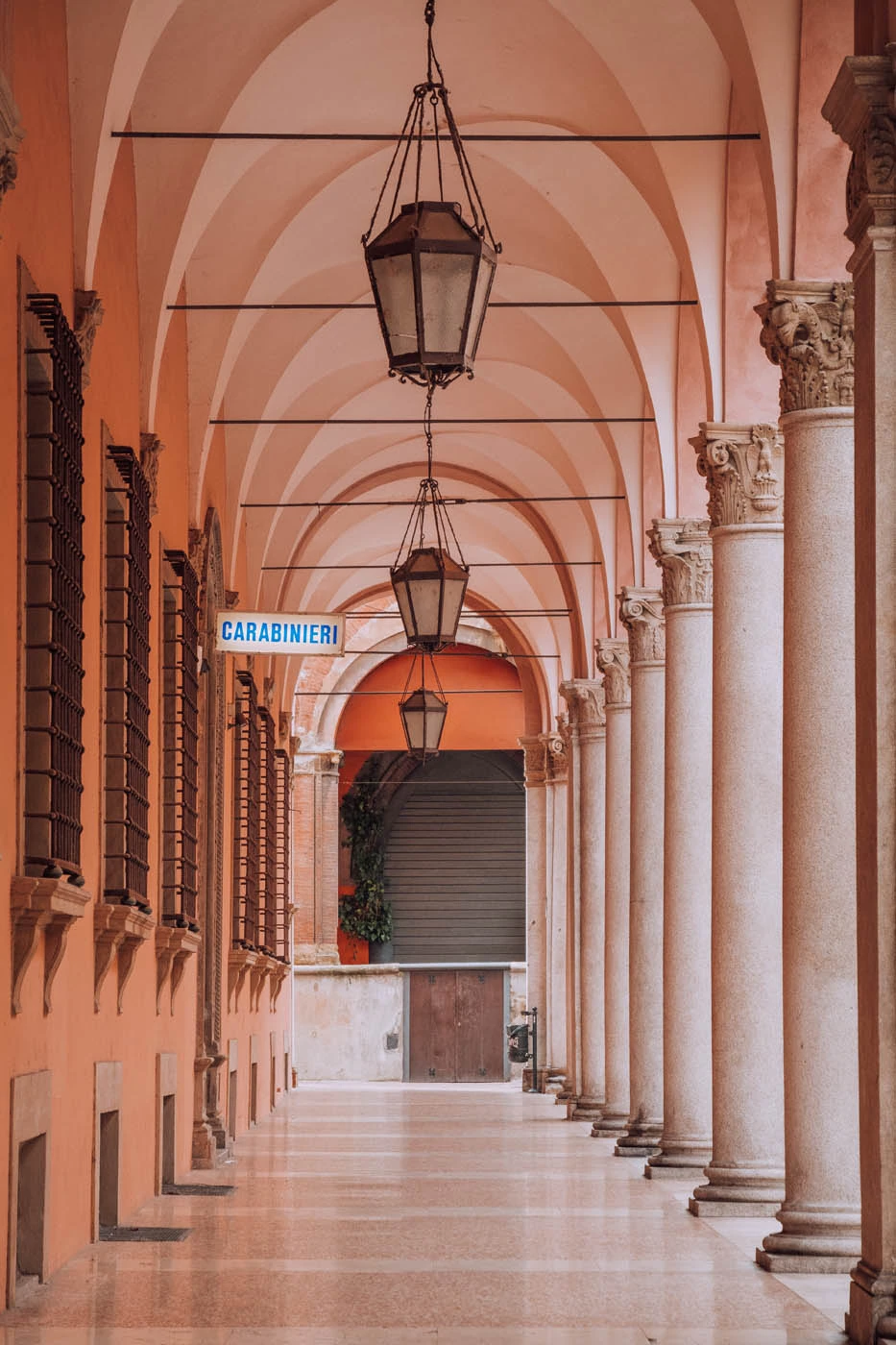
Portico in front of Carabinieri office
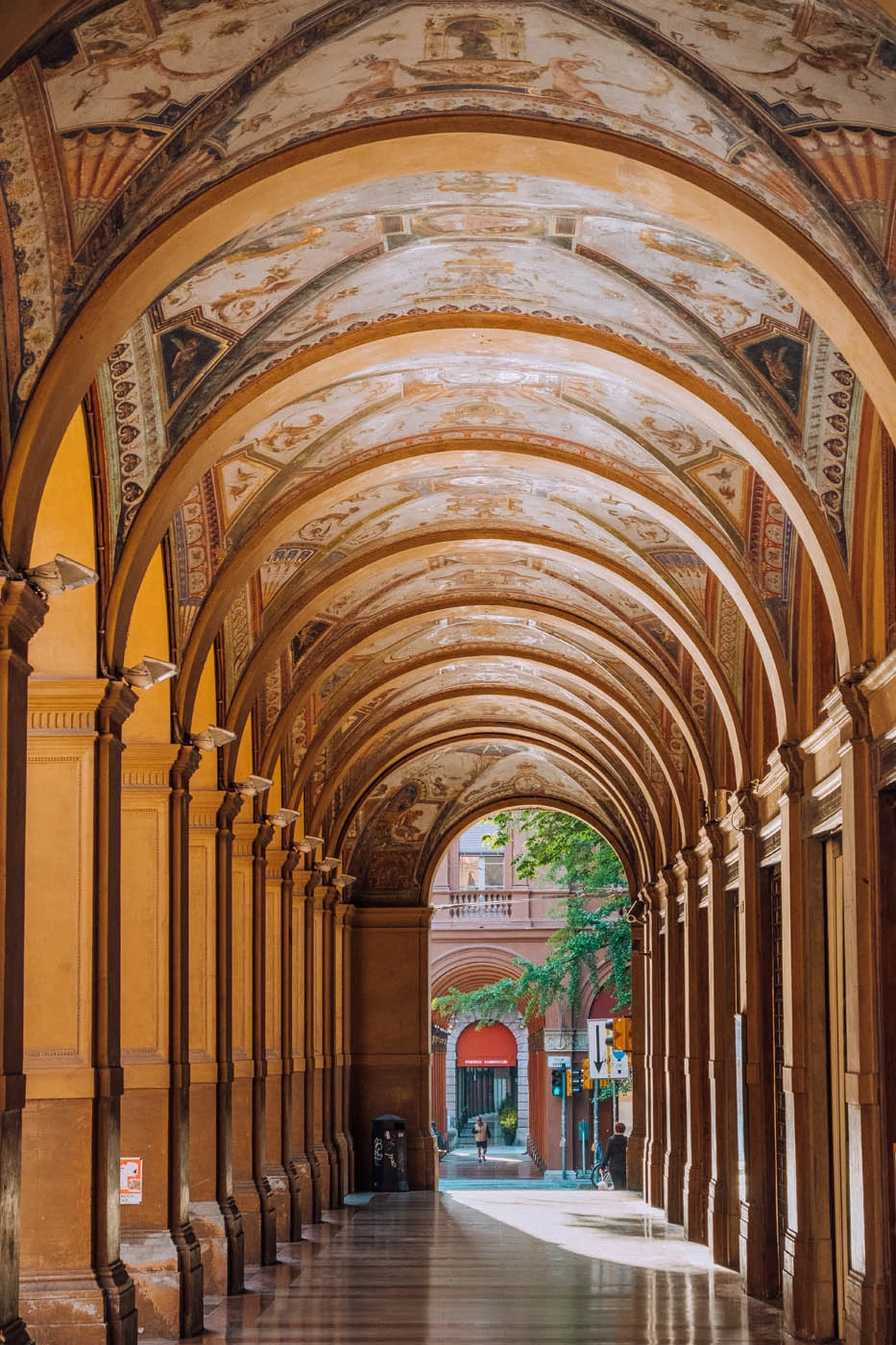
Portico at Piazza Cavour
Bologna’s iconic porticoes define the city’s identity, spanning 62 kilometers and dating back to the 11th century. Ingenious builders, challenged by confined city walls, extended upper floors beyond their ground-level counterparts using attractive wooden or stone columns, creating inviting, covered walkways. These architectural wonders, now a UNESCO World Heritage Site, display a variety of styles and eras. The crowning glory is the 3.8-kilometer walkway to the Madonna di San Luca Sanctuary, which holds a world record.
12. The city’s historic shops
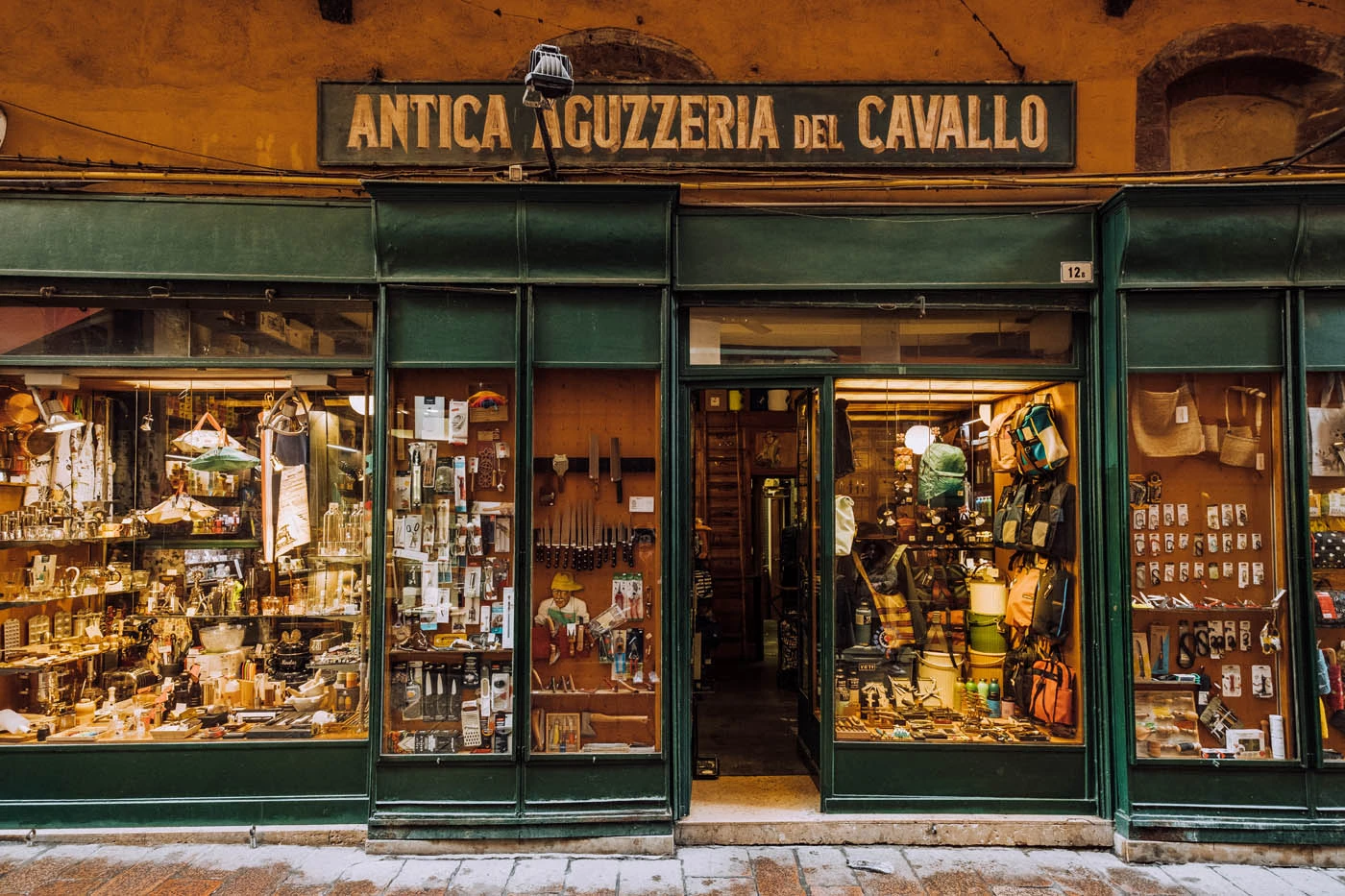 As you wander through the ancient porticos of Bologna, the city’s history comes alive in its historic shops, showcasing its rich culture and treasured traditions. Time-honored craftsmanship, handed down through generations, endures in places like Antica Aguzzeria del Cavallo, a shop established in 1783, and Libreria A.Nanni, the city’s oldest bookstore. These enchanting establishments radiate a nostalgic allure, transporting you back in time.
As you wander through the ancient porticos of Bologna, the city’s history comes alive in its historic shops, showcasing its rich culture and treasured traditions. Time-honored craftsmanship, handed down through generations, endures in places like Antica Aguzzeria del Cavallo, a shop established in 1783, and Libreria A.Nanni, the city’s oldest bookstore. These enchanting establishments radiate a nostalgic allure, transporting you back in time.

13. Bologna’s Little Venice
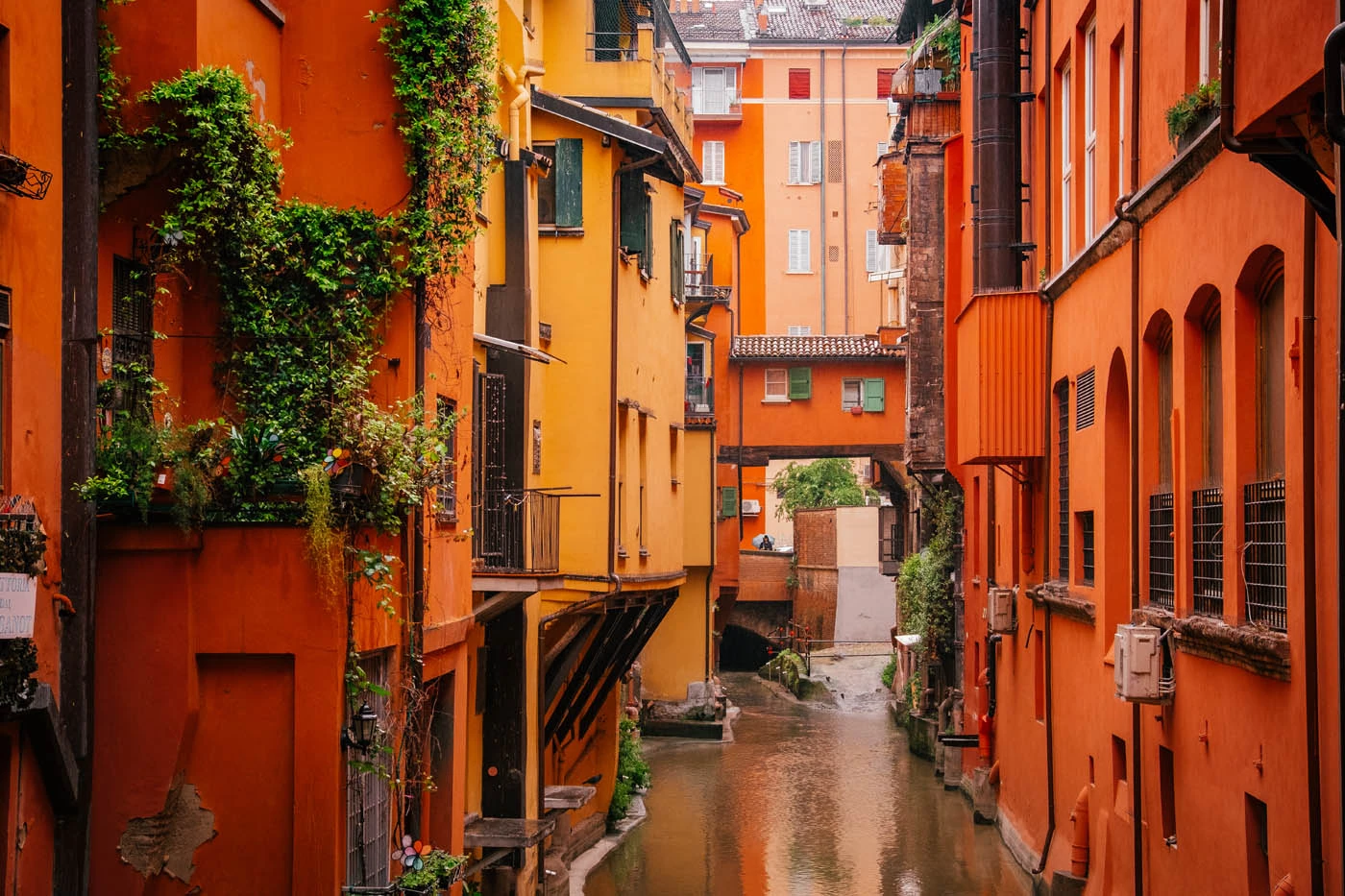
 It may be hard to imagine, but Bologna was once a bustling center of canals and waterways. In medieval times, ingenious residents designed a complex network of canals, drawing from the Reno and Savena rivers. These waterways powered mills and factories while providing water to the populace. To catch a glimpse of this historical marvel, visit Finestrella di Via Piella, which offers a view of the Moline Canal. The enchanting atmosphere here has earned it the charming moniker “Little Venice.”
It may be hard to imagine, but Bologna was once a bustling center of canals and waterways. In medieval times, ingenious residents designed a complex network of canals, drawing from the Reno and Savena rivers. These waterways powered mills and factories while providing water to the populace. To catch a glimpse of this historical marvel, visit Finestrella di Via Piella, which offers a view of the Moline Canal. The enchanting atmosphere here has earned it the charming moniker “Little Venice.”
Explore the most beautiful churches in Bologna
Bologna boasts a fascinating array of historic churches, all permeated by rich artistry, cultural significance, and serene spirituality.
14. Basilica of San Domenico
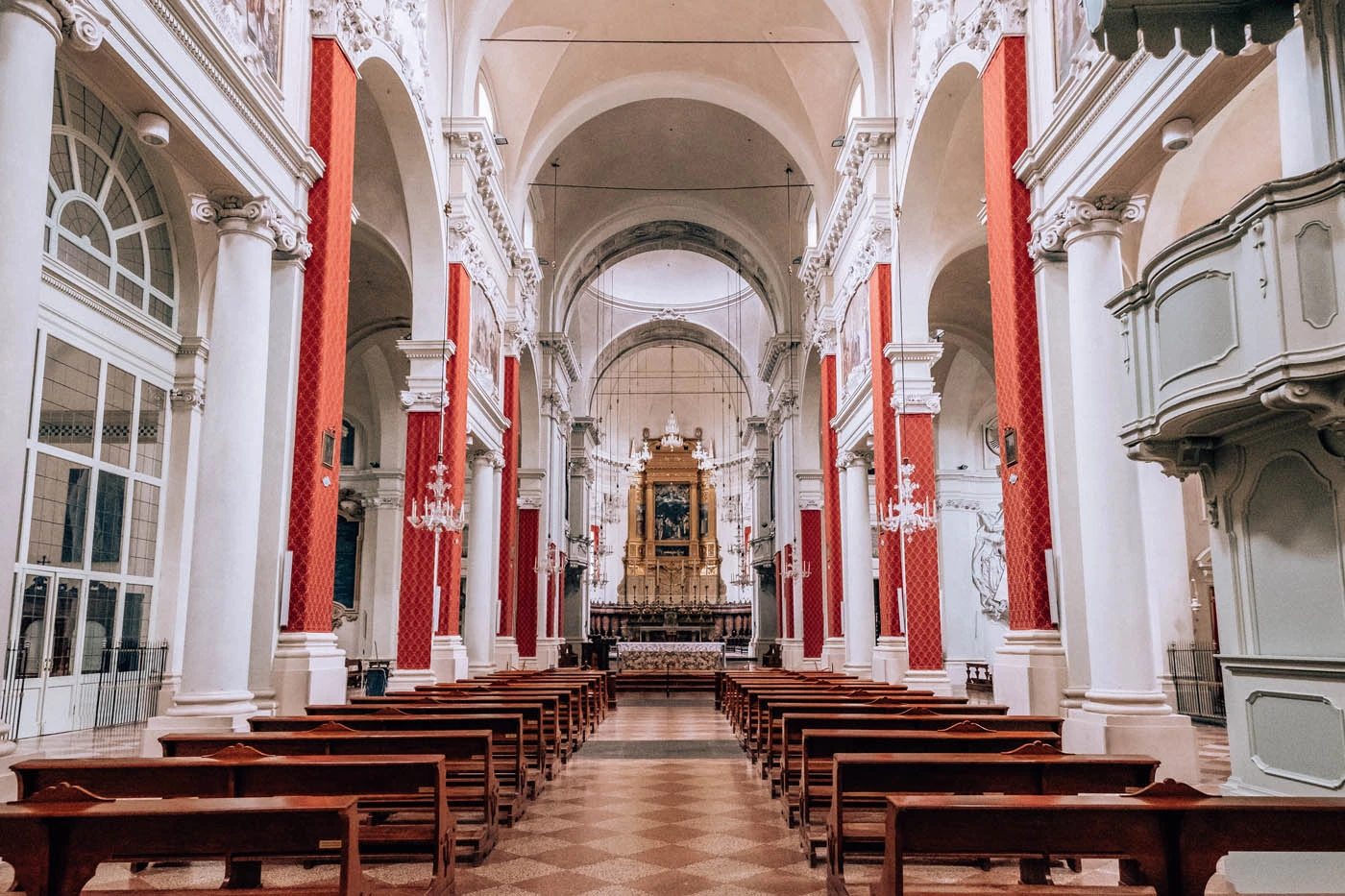
 The Basilica of San Domenico, one of Bologna’s most opulent churches, overflows with artistic history and marvels. Constructed by the Dominican Friars to enshrine their founder, San Domenico di Guzman, who came to Bologna in the 13th century, the basilica houses numerous invaluable artworks. Among these are three statues by Michelangelo and the exquisitely ornamented ark containing the Saint’s remains. The basilica also features the organ on which Wolfgang Amadeus Mozart practiced during his time in Bologna.
The Basilica of San Domenico, one of Bologna’s most opulent churches, overflows with artistic history and marvels. Constructed by the Dominican Friars to enshrine their founder, San Domenico di Guzman, who came to Bologna in the 13th century, the basilica houses numerous invaluable artworks. Among these are three statues by Michelangelo and the exquisitely ornamented ark containing the Saint’s remains. The basilica also features the organ on which Wolfgang Amadeus Mozart practiced during his time in Bologna.

Organs used by Mozart
15. Church of Santo Stefano
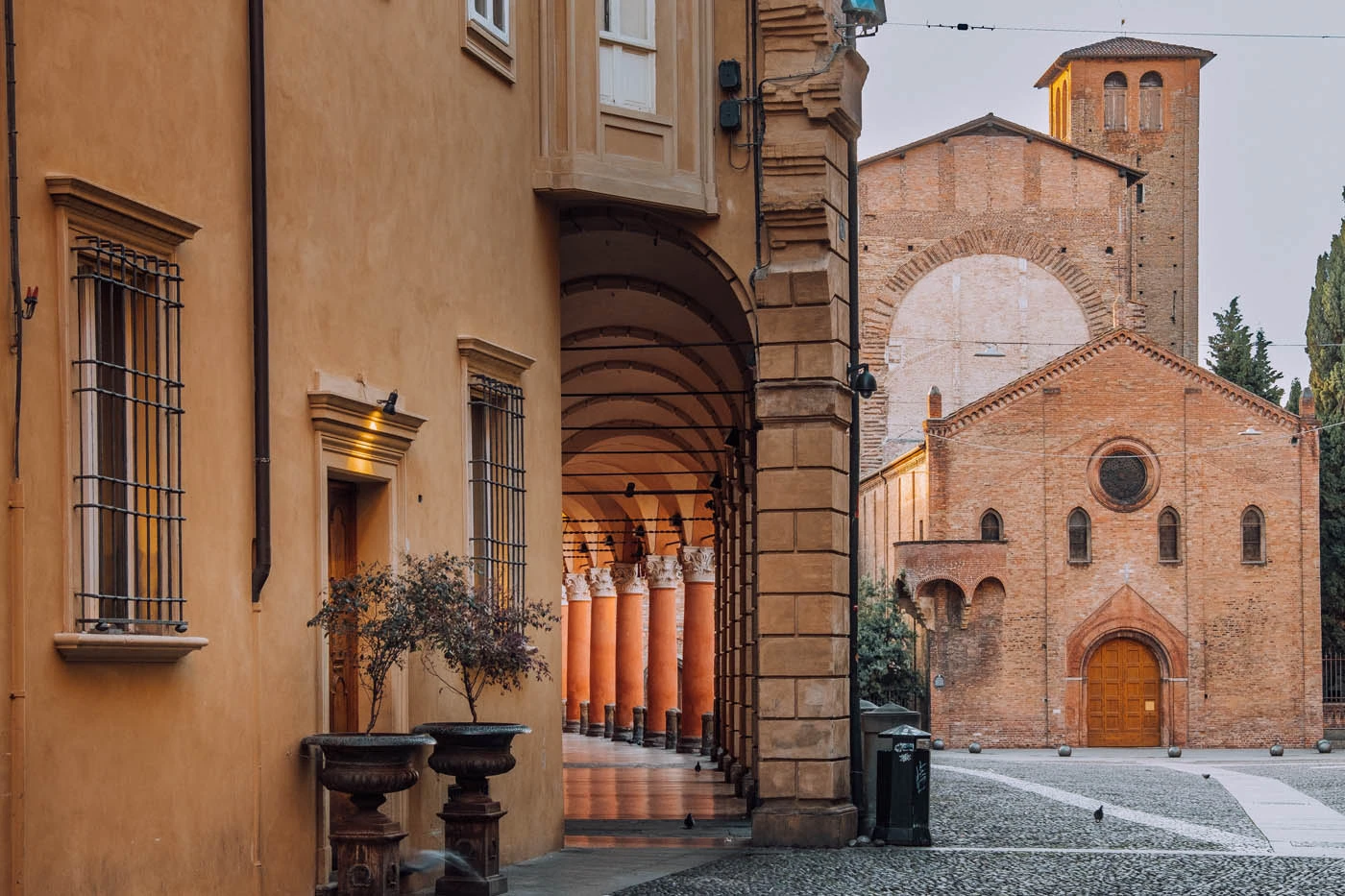
The Church of Santo Stefano, fondly known as “sette chiese” (seven churches), is a fascinating architectural collage of various structures assembled over time. It is said that in the 5th century, Petronius, the city’s bishop at the time, initiated its construction to resemble Jerusalem’s Holy Sepulchre. Over the years, it evolved into a vast interconnected network of buildings, making it one of Bologna’s most intriguing attractions.
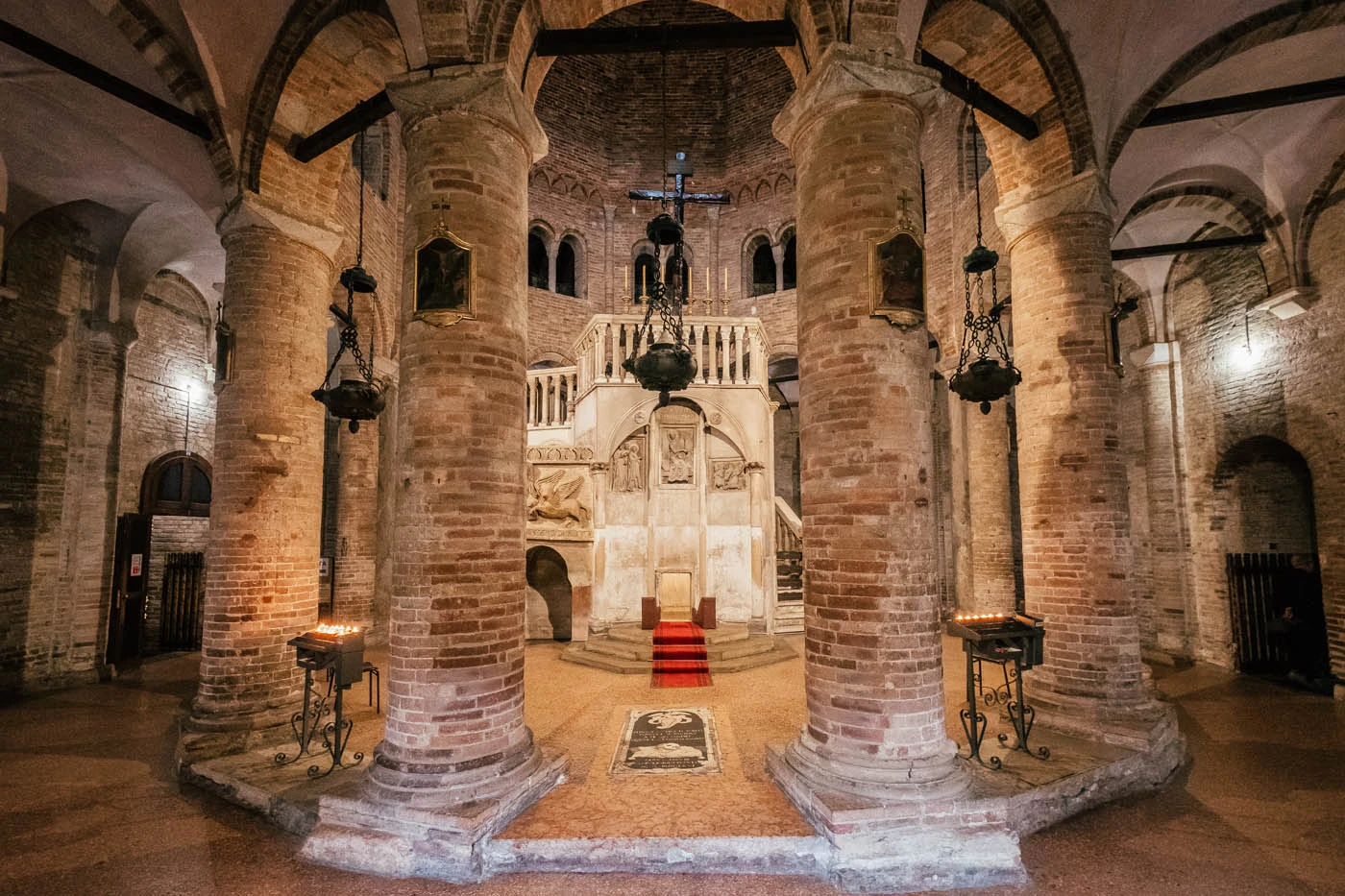

16. Church of Santa Maria della Vita
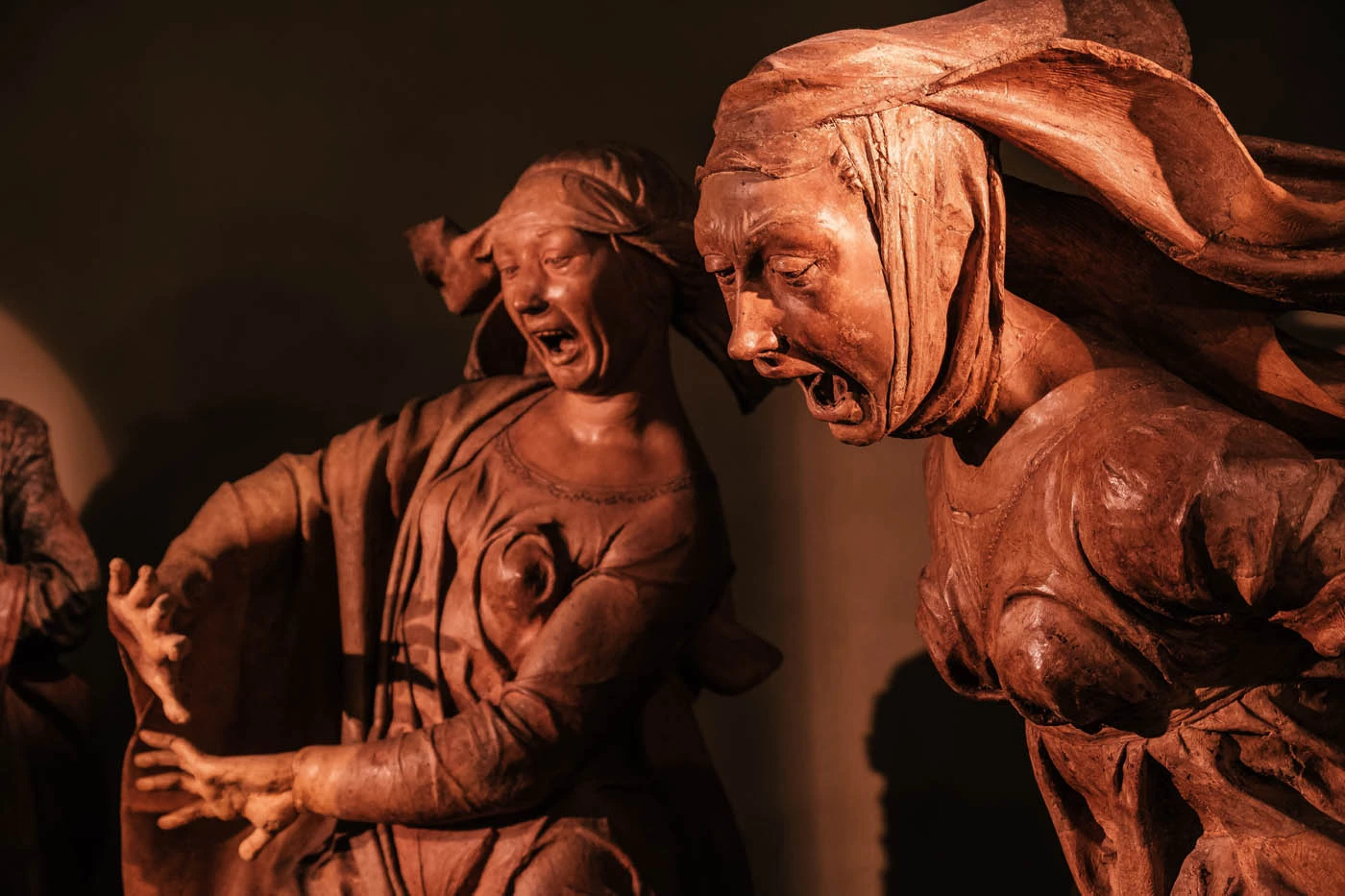 The Church of Santa Maria della Vita, a masterpiece of Baroque architecture, was originally built in the 13th century and later reconstructed after a devastating earthquake in 1686. Its most captivating feature is Niccolò dell’Arca’s 15th-century “Lamentation over the Dead Christ,” consisting of life-sized terracotta figures that vividly express the sorrow and despair of Christ’s followers. This moving depiction was so compelling that D’Annunzio referred to it as the “stone scream.” Once part of a hospital complex, the church now belongs to the Museum of Health and Assistance, which highlights Bologna’s medical history.
The Church of Santa Maria della Vita, a masterpiece of Baroque architecture, was originally built in the 13th century and later reconstructed after a devastating earthquake in 1686. Its most captivating feature is Niccolò dell’Arca’s 15th-century “Lamentation over the Dead Christ,” consisting of life-sized terracotta figures that vividly express the sorrow and despair of Christ’s followers. This moving depiction was so compelling that D’Annunzio referred to it as the “stone scream.” Once part of a hospital complex, the church now belongs to the Museum of Health and Assistance, which highlights Bologna’s medical history.

L’oratorio dei Battuti
17. Cathedral of San Pietro
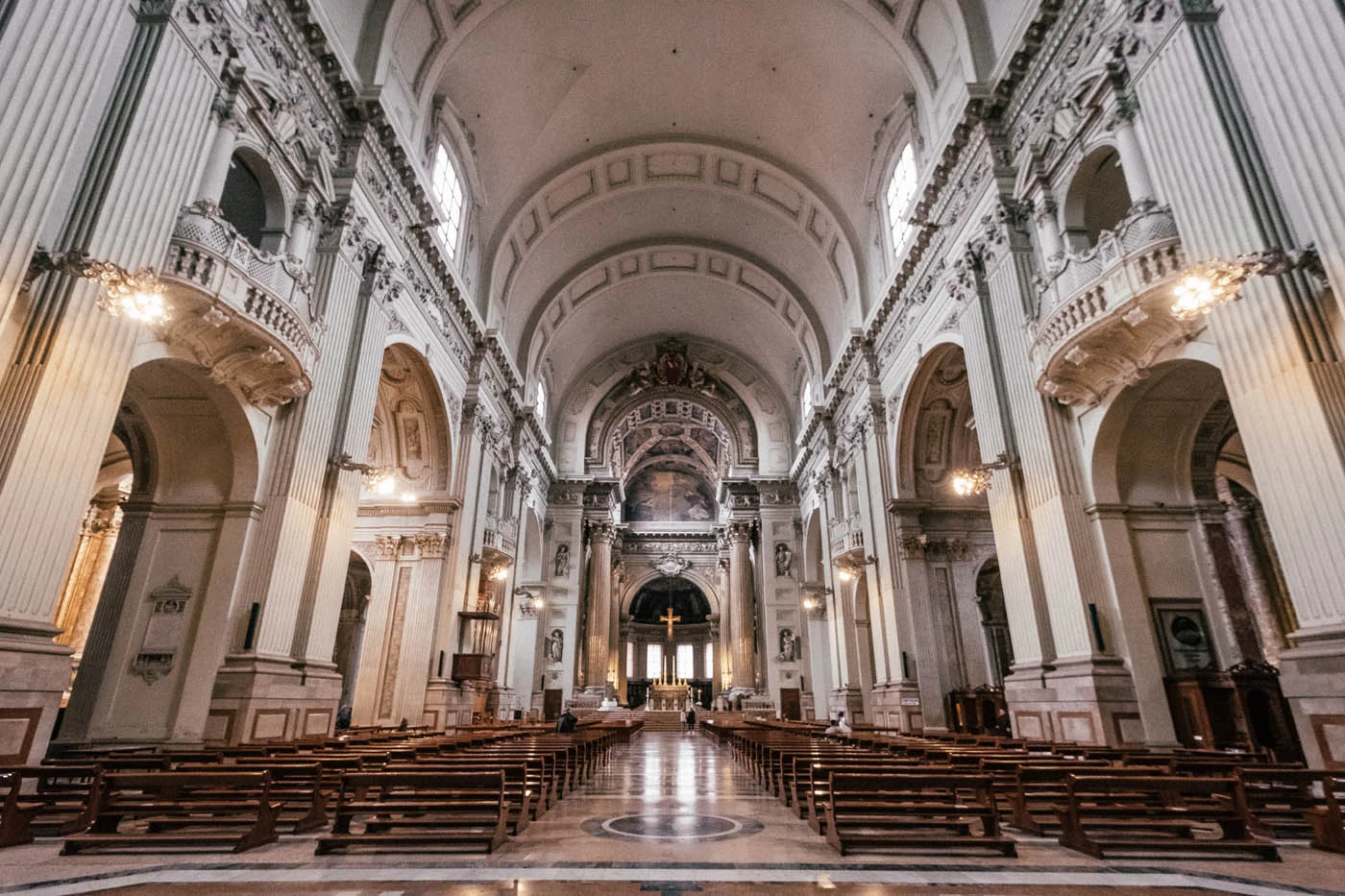 The Church of San Pietro is actually Bologna’s main cathedral, rather than the Basilica of San Petronio in Piazza Maggiore. This charming 12th-century church houses a wealth of artwork, such as Ludovico Carracci’s Annunciation. Don’t miss out on the chance to ascend the towering 70-meter Torre dei Campanacci bell tower to see “la nonna,” the world’s largest manually operated bell weighing over three tons, and relish the stunning vista of the city!
The Church of San Pietro is actually Bologna’s main cathedral, rather than the Basilica of San Petronio in Piazza Maggiore. This charming 12th-century church houses a wealth of artwork, such as Ludovico Carracci’s Annunciation. Don’t miss out on the chance to ascend the towering 70-meter Torre dei Campanacci bell tower to see “la nonna,” the world’s largest manually operated bell weighing over three tons, and relish the stunning vista of the city!
18. Sanctuary of Madonna di San Luca
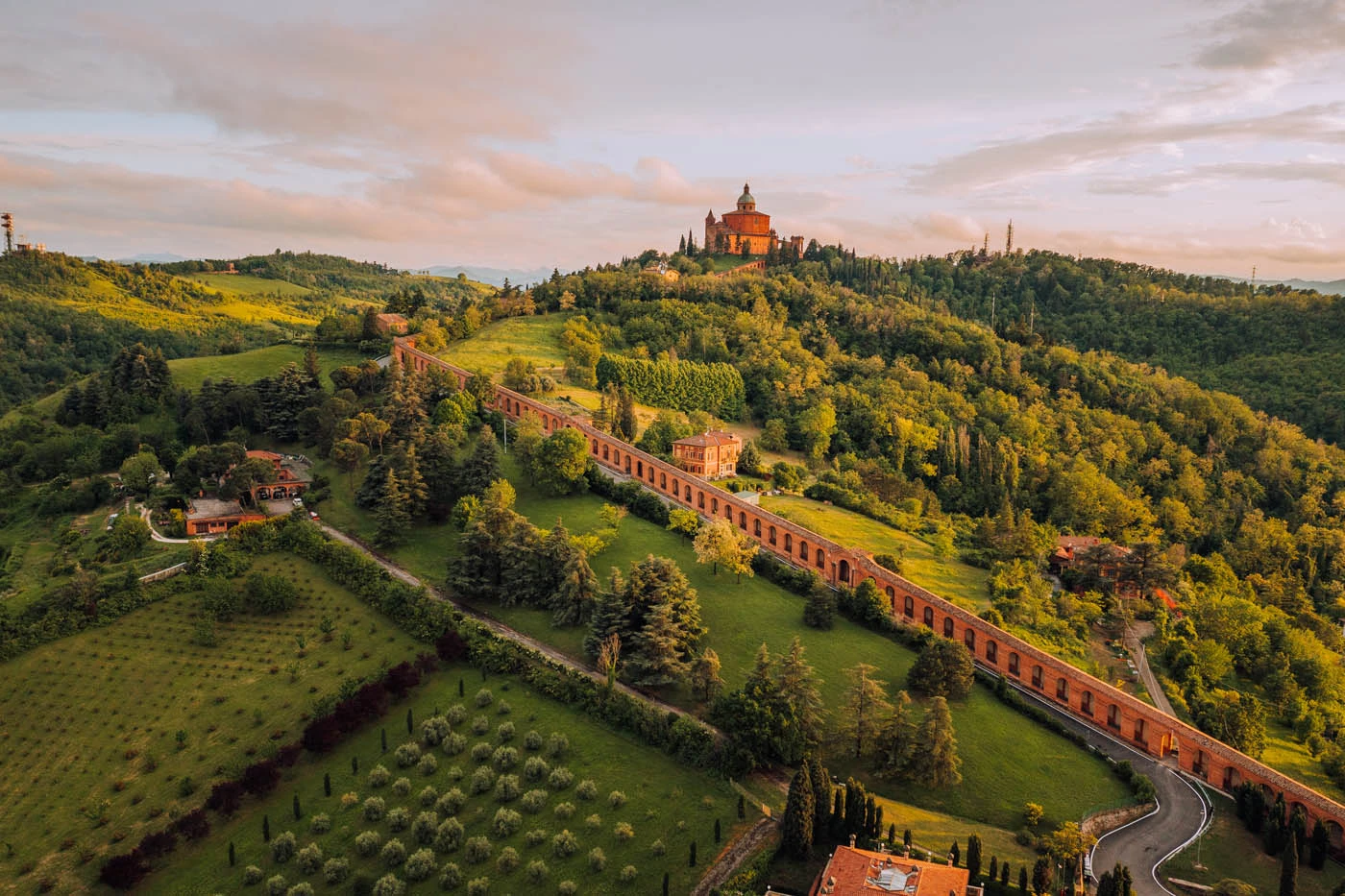
 The Sanctuary della Madonna di San Luca, a revered religious site dedicated to the Virgin Mary and home to a venerated Byzantine icon, is situated on Bologna’s Colle della Guardia. Dating back to the 18th century, it’s linked to the city center by the picturesque Portico di San Luca, the world’s longest portico with 666 arches. This stunning pathway offers a peaceful pilgrimage route with panoramic views of Bologna’s beautiful landscape.
The Sanctuary della Madonna di San Luca, a revered religious site dedicated to the Virgin Mary and home to a venerated Byzantine icon, is situated on Bologna’s Colle della Guardia. Dating back to the 18th century, it’s linked to the city center by the picturesque Portico di San Luca, the world’s longest portico with 666 arches. This stunning pathway offers a peaceful pilgrimage route with panoramic views of Bologna’s beautiful landscape.


Discover the Best Museums in Bologna
If exploring museums is your thing, Bologna won’t let you down. The city is home to various museums featuring captivating exhibits on multiple subjects, from art to communication.
19. MAMbo – Modern Art Museum
Looking for a dose of contemporary art? Make sure you visit MAMbo, the Museum of Modern Art in Bologna! This museum, which was once an industrial site, has been exhibiting a wide variety of Italian and international artists from the post-World War II era up to the present day since 2007. In addition, it presents a lively series of temporary exhibitions featuring art-world stars such as Marina Abramović and Ulay.
20. Palazzo Fava
Palazzo Fava is a stunning Renaissance mansion decorated with exquisite frescoes by the Carracci brothers. Within its walls, you’ll find the epic tales of Jason and Medea intermingled with that of Aeneas. This former palace is now an art haven, bursting with lively exhibitions and cultural events, as well as a collection of permanent pieces. Be sure not to miss the Caffè Letterario, a stylish café, and bookshop that offers tantalizing refreshments and captivating reads to complement your Palazzo Fava experience.
21. Museo Pelagalli – Museum of Communication
The Museum of Communication in Bologna is a fascinating institution that displays the evolution of communication technologies and their impact on society. Housed in a stunning historic building, the museum boasts 2000 authentic exhibits that showcase how humanity has evolved alongside technology. One exhibit that you shouldn’t miss is the special tribute to Guglielmo Marconi, the Bolognese superstar who invented the radio, which includes his personal belongings, scribbles, and photos.
22. Civic Archaeological Museum
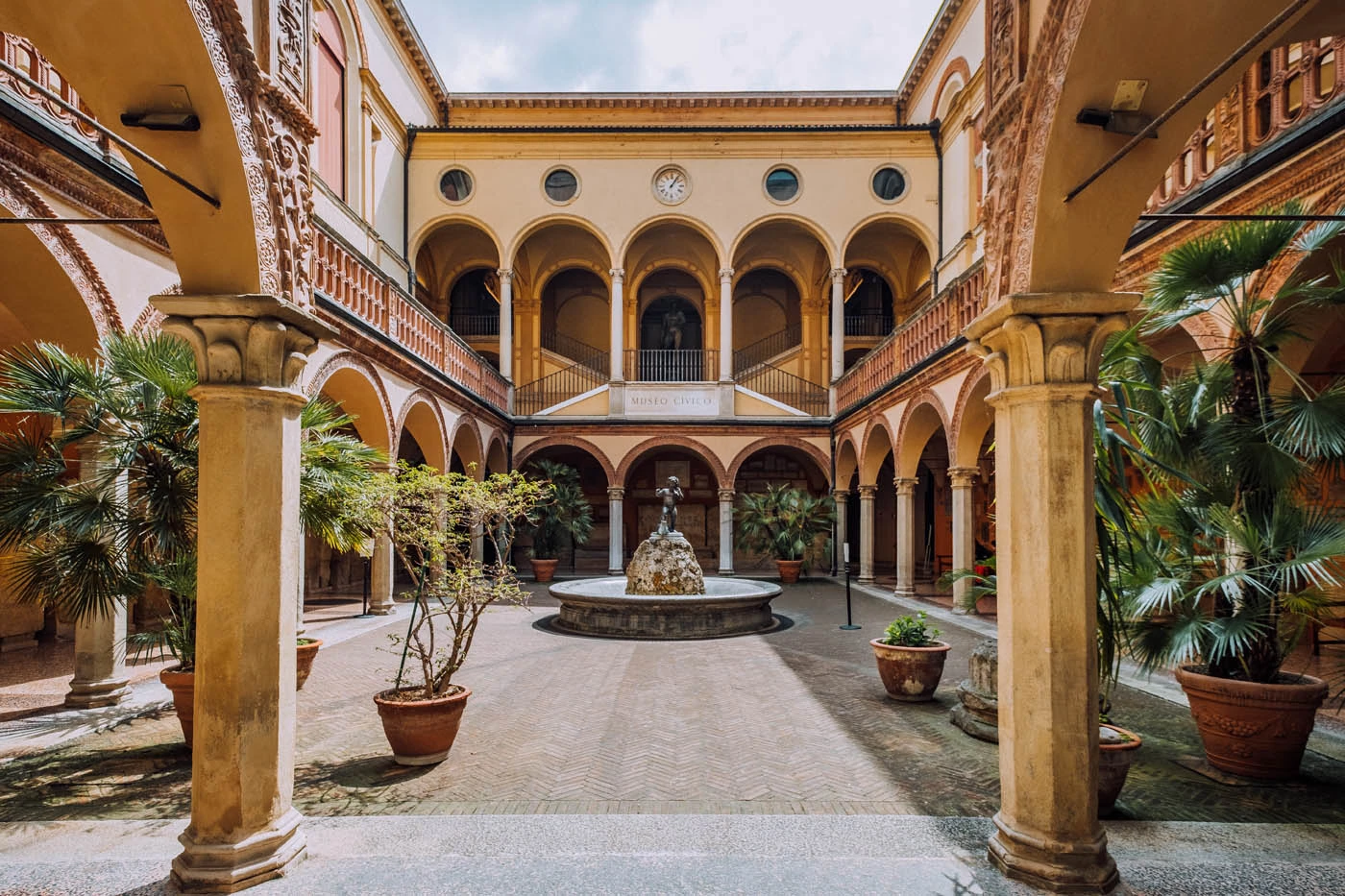
The Civic Archaeological Museum in Bologna is located within the beautiful 15th-century Palazzo Galvani. It provides a delightful escape into ancient history with an extensive collection of artifacts from prehistoric to Egyptian civilizations. The museum’s collection is one of Italy’s most important archaeological collections, thanks to meticulous excavations in the area spanning the 19th and 20th centuries.
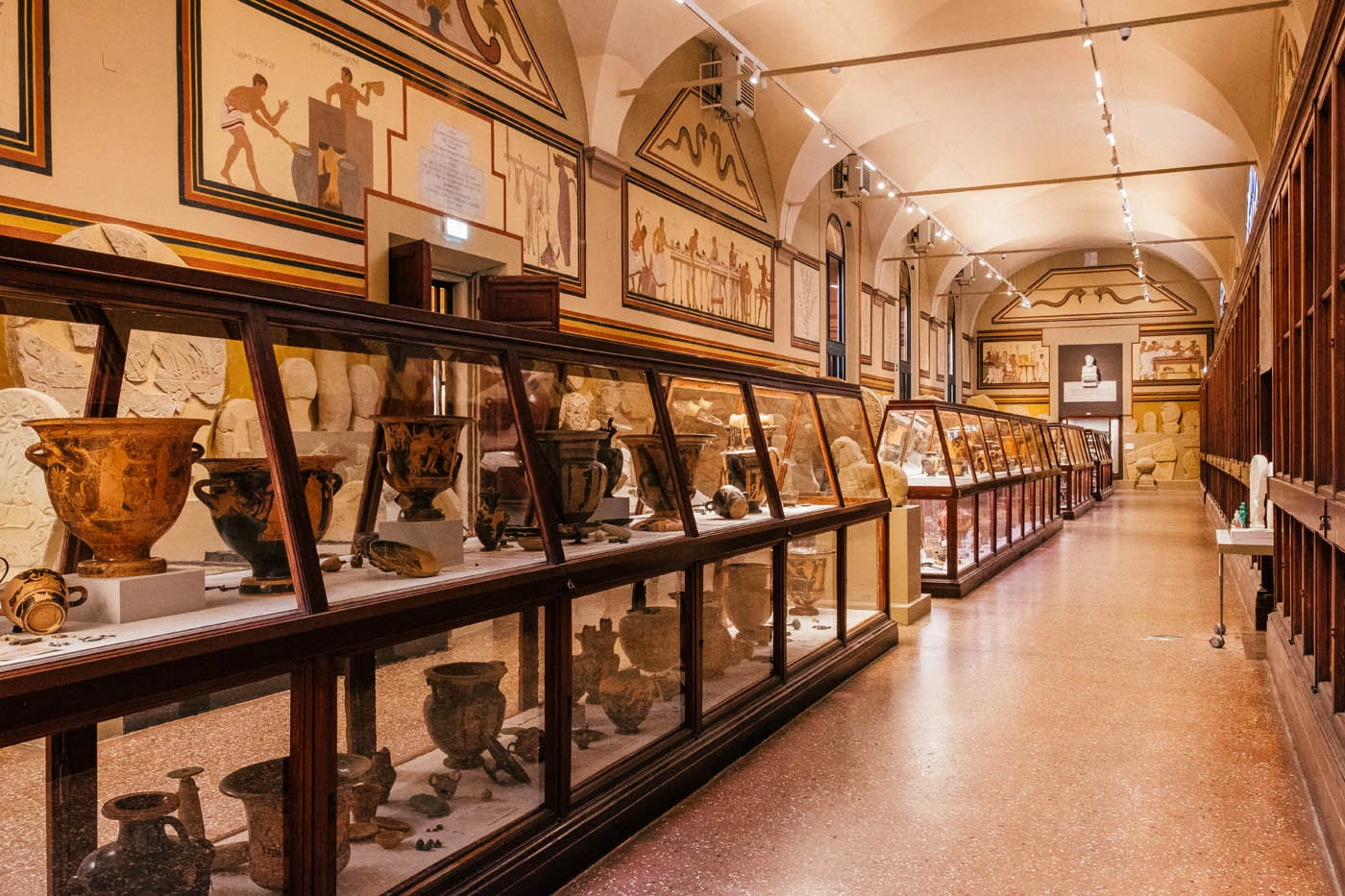


23. Museum of Palazzo Poggi
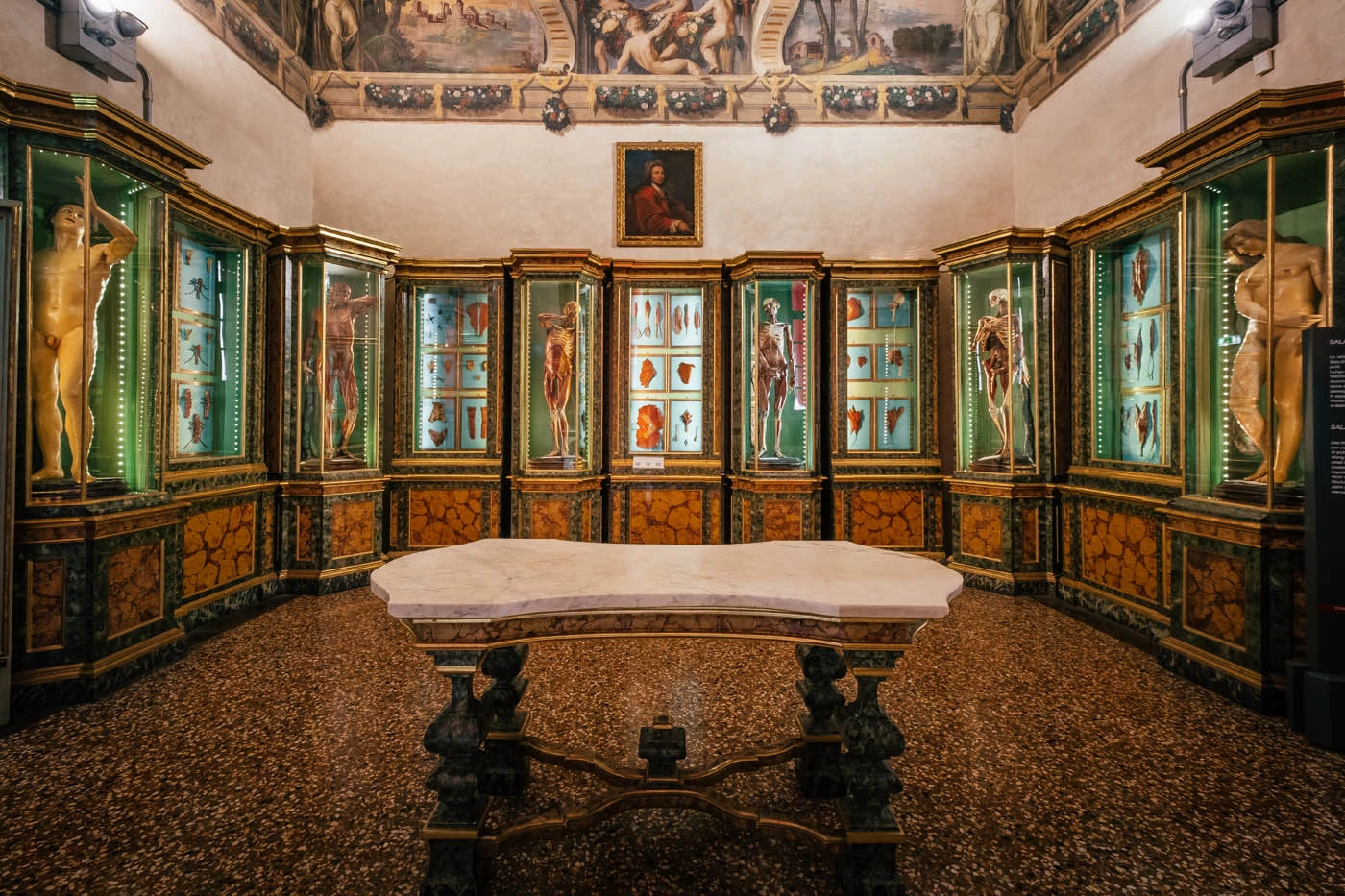
 Palazzo Poggi, located at the heart of the University of Bologna, is a fascinating treasure trove that any curious soul would enjoy exploring. This magical place contains an incredible variety of collections that showcase the University’s rich scientific heritage from centuries past. You can discover ancient physics, natural history, chemistry, geography, boating, and intriguing anatomical waxes that were once used for university training. Moreover, ascending to the Specola provides a chance to stand where Copernicus once observed the stars, making it the cherry on top of this incredible experience.
Palazzo Poggi, located at the heart of the University of Bologna, is a fascinating treasure trove that any curious soul would enjoy exploring. This magical place contains an incredible variety of collections that showcase the University’s rich scientific heritage from centuries past. You can discover ancient physics, natural history, chemistry, geography, boating, and intriguing anatomical waxes that were once used for university training. Moreover, ascending to the Specola provides a chance to stand where Copernicus once observed the stars, making it the cherry on top of this incredible experience.

Museo della Specola
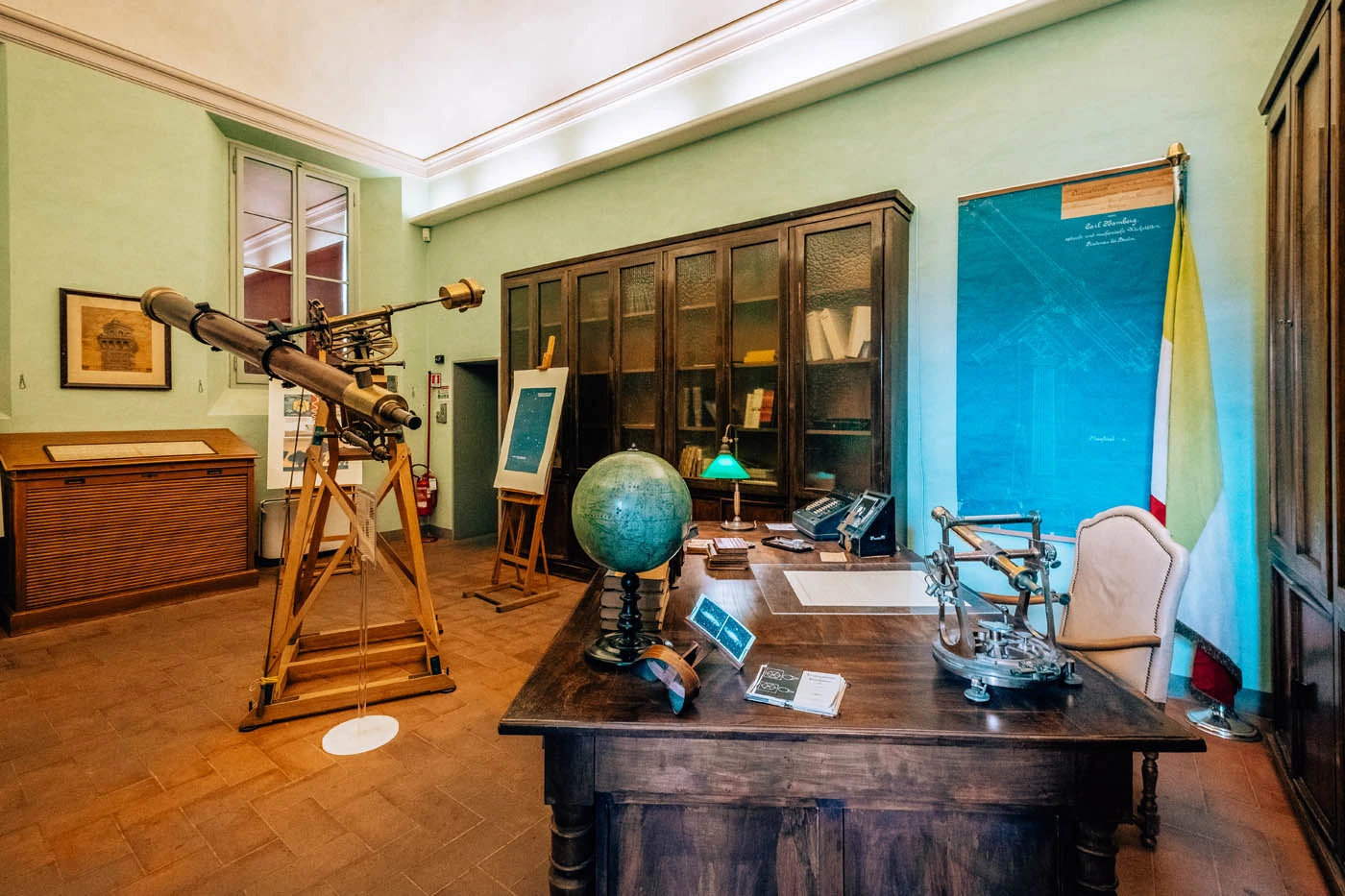
24. Museum for the Memory of Ustica
The Museum for the Memory of Ustica is a touching tribute to the tragic Ustica Disaster. On June 27, 1980, a civilian airplane mysteriously crashed into the Tyrrhenian Sea near Ustica island, killing all 81 passengers and crew members. The museum displays the aircraft’s wreckage, which has been transformed into a compelling installation by the renowned artist Christian Boltanski. You can engage with the memories of the victims through evocative art, emotional testimonies, and thought-provoking exhibitions which encourage deep empathy and reflection. You’re sure to be moved during your visit here.
25. Industrial Heritage Museum
Bologna was already a hub of innovation even prior to the Industrial Revolution. Its silk-throwing machines propelled the city to the forefront of Europe’s silk production. Although these machines have been lost to history, a half-sized working replica can still be viewed at the Industrial Heritage Museum. The museum not only exhibits the replica but also highlights Bologna’s recent history and how its industries continue to innovate and push the boundaries of engineering. From machines that make tortellini to those that gave birth to iconic brands like Ducati and Lamborghini, the museum showcases it all.
26. Museum of San Colombano
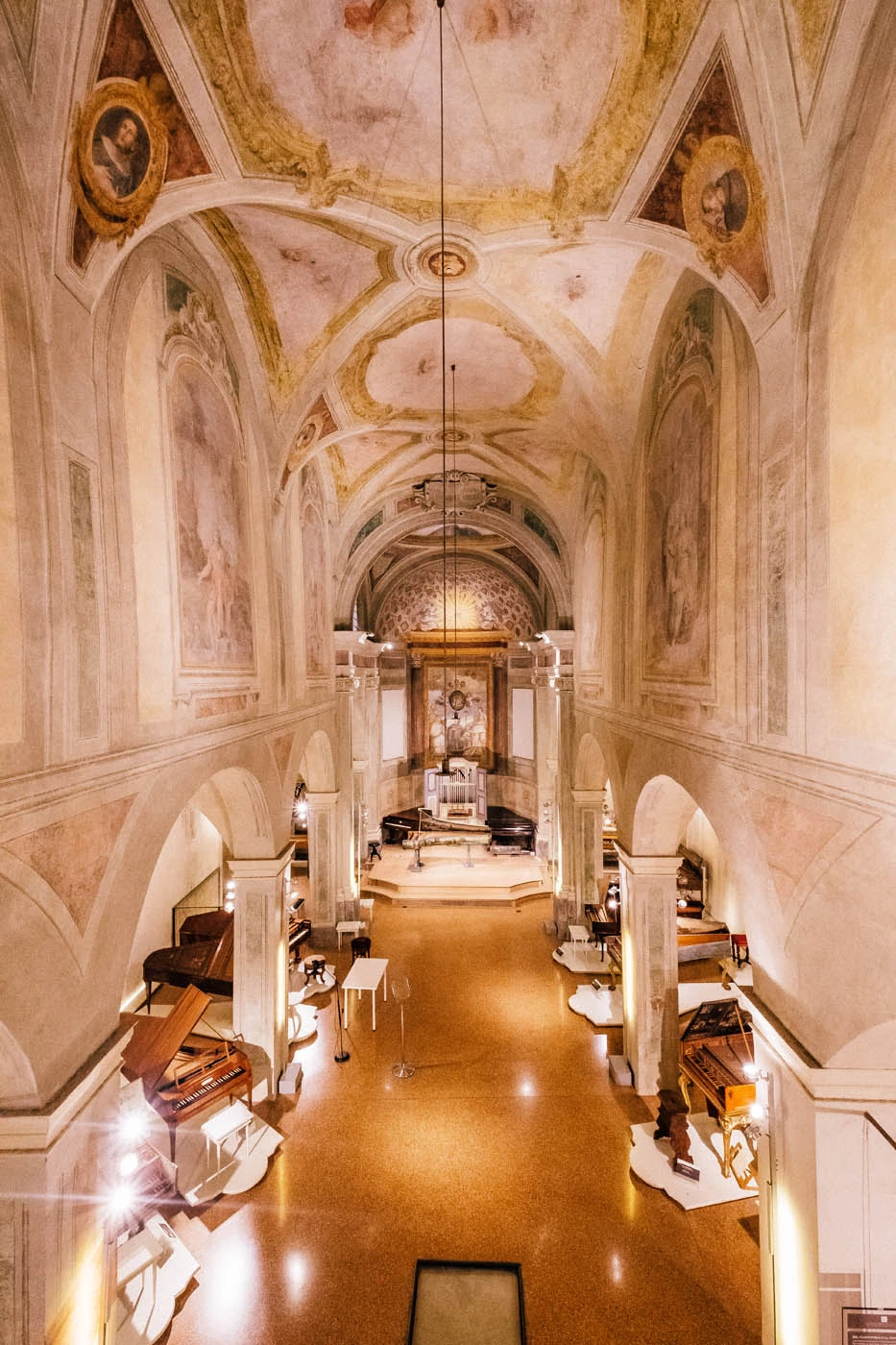
 The Church of San Colombano, established in 616 and now no longer in use, is famous among music enthusiasts for its rare and exquisite collection of instruments from various Italian and European schools. The collection, consisting of approximately seventy beautifully restored instruments such as harpsichords, clavichords, and organs, among others, is in impeccable working condition and comes to life during concerts. In addition to the instrument collection, the complex also features a specialized library belonging to Oscar Mischiati, a renowned musicologist from Bologna, and the Oratory of San Colombano, which boasts a stunning cycle of frescoes.
The Church of San Colombano, established in 616 and now no longer in use, is famous among music enthusiasts for its rare and exquisite collection of instruments from various Italian and European schools. The collection, consisting of approximately seventy beautifully restored instruments such as harpsichords, clavichords, and organs, among others, is in impeccable working condition and comes to life during concerts. In addition to the instrument collection, the complex also features a specialized library belonging to Oscar Mischiati, a renowned musicologist from Bologna, and the Oratory of San Colombano, which boasts a stunning cycle of frescoes.
27. MAST
Located in Bologna, MAST (Manifattura di Arti, Sperimentazione e Tecnologia) is a contemporary art museum that showcases a diverse array of exhibitions and events. Housed in a converted industrial space, it offers a fascinating exploration of the interplay between art, science, and technology, making it a must-visit destination for culture enthusiasts.
28. Civic Medieval Museum
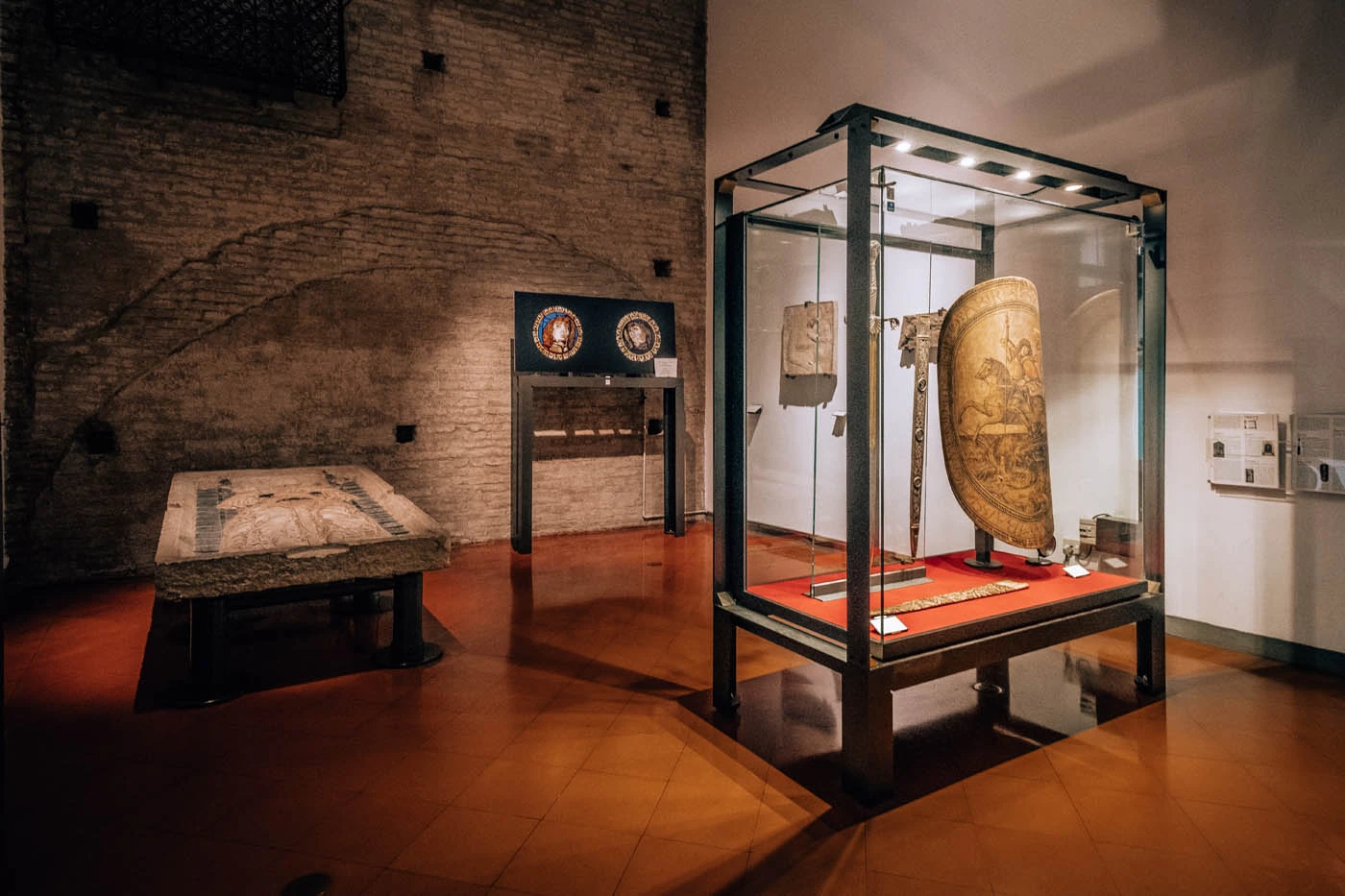
 In a city as charmingly medieval as Bologna, it’s only fitting to have a museum that pays homage to this fascinating era. The Civic Medieval Museum showcases a remarkable collection of ancient artifacts, paintings, sculptures, and manuscripts that allow you to delve into the daily lives of the people who once walked along these cobblestone streets. Additionally, the museum features Giambologna’s preliminary study for the iconic Fountain of Neptune, completed in 1564 and praised by Pope Pius IV.
In a city as charmingly medieval as Bologna, it’s only fitting to have a museum that pays homage to this fascinating era. The Civic Medieval Museum showcases a remarkable collection of ancient artifacts, paintings, sculptures, and manuscripts that allow you to delve into the daily lives of the people who once walked along these cobblestone streets. Additionally, the museum features Giambologna’s preliminary study for the iconic Fountain of Neptune, completed in 1564 and praised by Pope Pius IV.

29. Bologna National Art Gallery
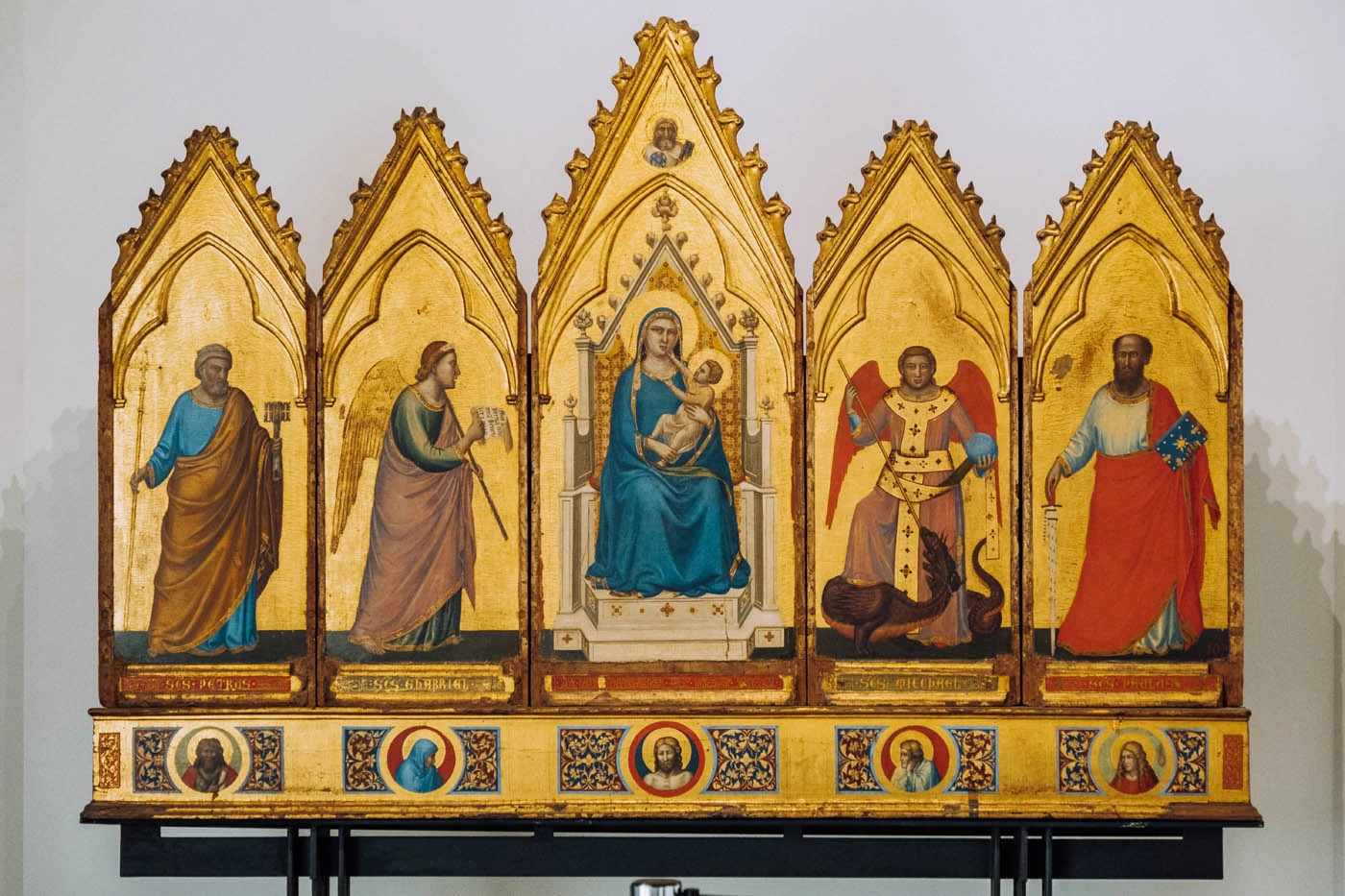
Giotto Polyptych
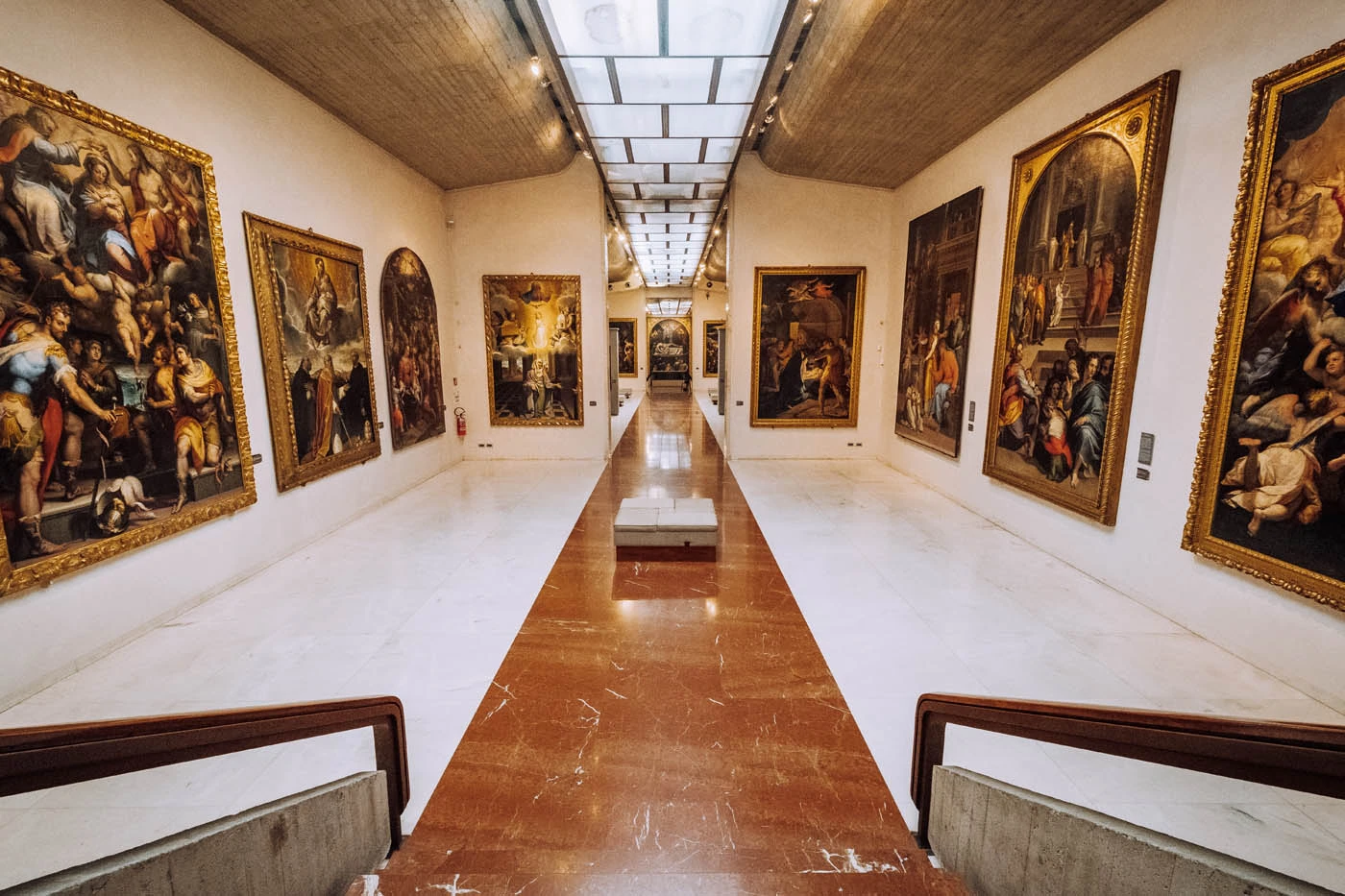
The Bologna National Art Gallery is situated in the old university complex and showcases an impressive collection of nearly 1000 artworks that celebrate the city’s artistic heritage. The paintings date from the 13th to the 18th century and include works by both local painters and renowned Italian artists such as Raphael, Titian, Parmigianino, Guido Reni, and Giotto.

30. Museo Memoriale della Libertà
The Museo Memoriale della Libertà is a moving museum that recounts the tale of the city’s resistance movement in World War II. It provides a compelling and engaging experience through the reconstruction of events such as bombing raids and the rounding up of civilians. Additionally, the museum boasts a captivating collection of personal narratives, photographs, documents, and artifacts that offer valuable insights into the lives of the brave freedom fighters of that era. For military vehicle enthusiasts, the museum also houses over 50 tanks, planes, and trains you can explore.
31. Davia Bargellini Museum
The Davia Bargellini Museum, located in a charming 17th-century palace, is a hidden gem in Bologna. Upon entering, you will discover a remarkable collection of beautiful paintings, elegant sculptures, intricately crafted decorative objects, and furniture. The museum’s exhibit, “Curiosities from Old Bologna,” is particularly captivating, showcasing an intriguing assortment of puppets, ceramics, and other delightful oddities.
32. International Museum and Library of Music
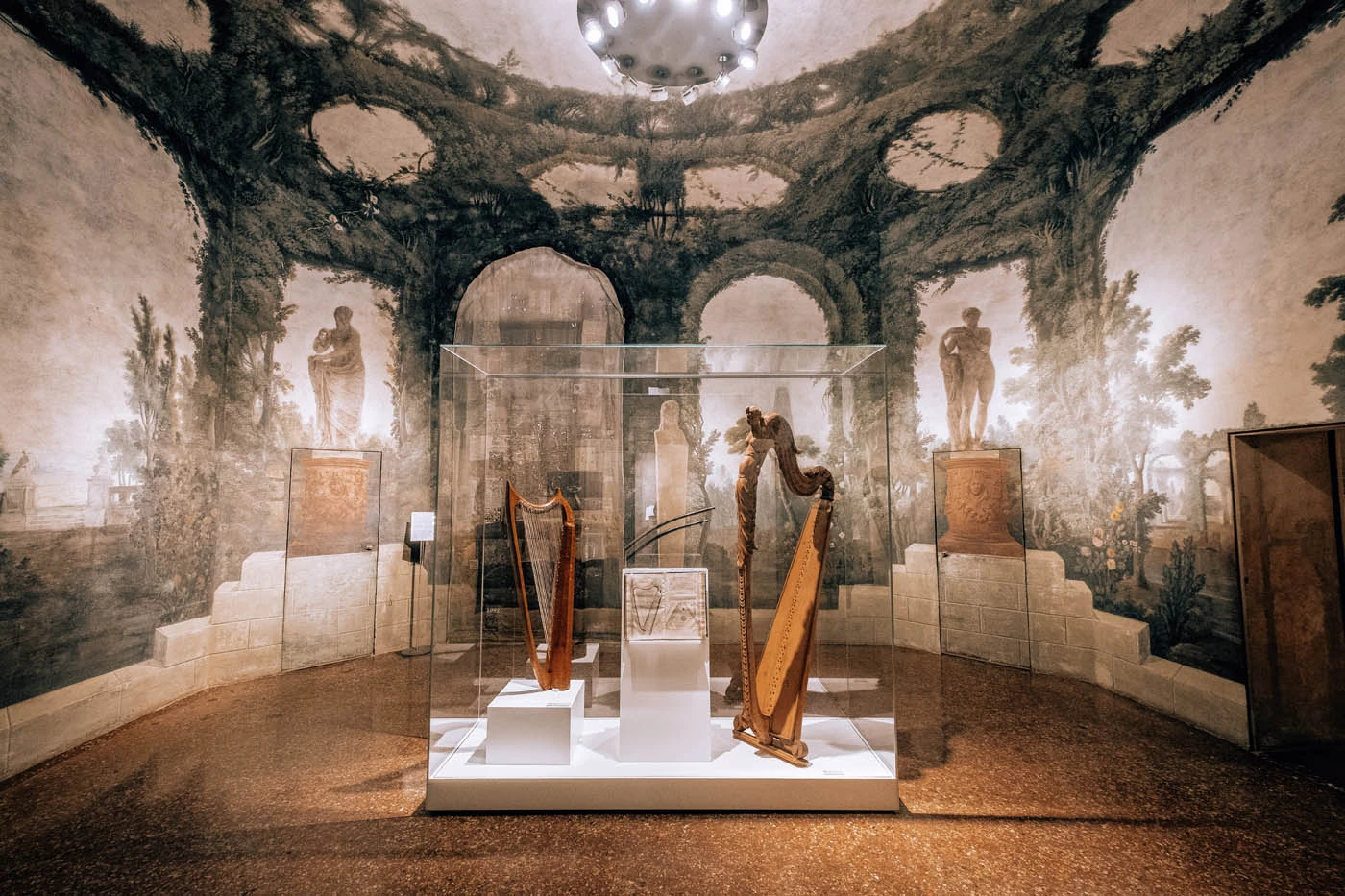
 For music enthusiasts, the International Museum and Library of Music is a treasure trove in Bologna. Located within the stunning Palazzo Sanguinetti, the museum has an esteemed collection of printed music from the 16th to the 18th centuries, along with a remarkable assortment of musical instruments and artworks that trace the evolution of music over time. The museum also has a meticulously recreated workshop of the renowned Bolognese luthier Otello Bignami, providing an intriguing glimpse into his craftsmanship.
For music enthusiasts, the International Museum and Library of Music is a treasure trove in Bologna. Located within the stunning Palazzo Sanguinetti, the museum has an esteemed collection of printed music from the 16th to the 18th centuries, along with a remarkable assortment of musical instruments and artworks that trace the evolution of music over time. The museum also has a meticulously recreated workshop of the renowned Bolognese luthier Otello Bignami, providing an intriguing glimpse into his craftsmanship.

33. Museo della Storia di Bologna at Palazzo Pepoli
The Museo della Storia di Bologna, housed in the historic Palazzo Pepoli, is a captivating museum that offers a rich and immersive experience of the city’s fascinating history from its evolution from its Etruscan and Roman roots to its medieval and Renaissance glory, and beyond.
The Etruscans called first named the area Velzna (or Felzna) which the Romans later tweaked to Felsina (which perhaps means “fertile land”).
Time flies as you wander this multi-level museum with multimedia displays, interactive exhibits, and a wealth of archival materials that provide a comprehensive understanding of Bologna’s cultural, social, and political heritage and development. Each room has a theme harmoniously connects modern design with historical artifacts. There is even an entire room dedicated to the Bolognese dialect. I’ve never seen anything like this in any other museum! È fantastico!
Palazzo Pepoli itself is a splendid example of medieval architecture, and it provides a fitting backdrop for the museum’s collection.
Enjoy all the Best Food in Bologna
Get ready to loosen your belt because Bologna has some serious food game. In fact, it’s widely recognized as Italy’s delicious food capital. For a deeper dive into the region’s culinary traditions, don’t miss this Bologna food tour.
34. Revel in the deliciousness of local cuisine
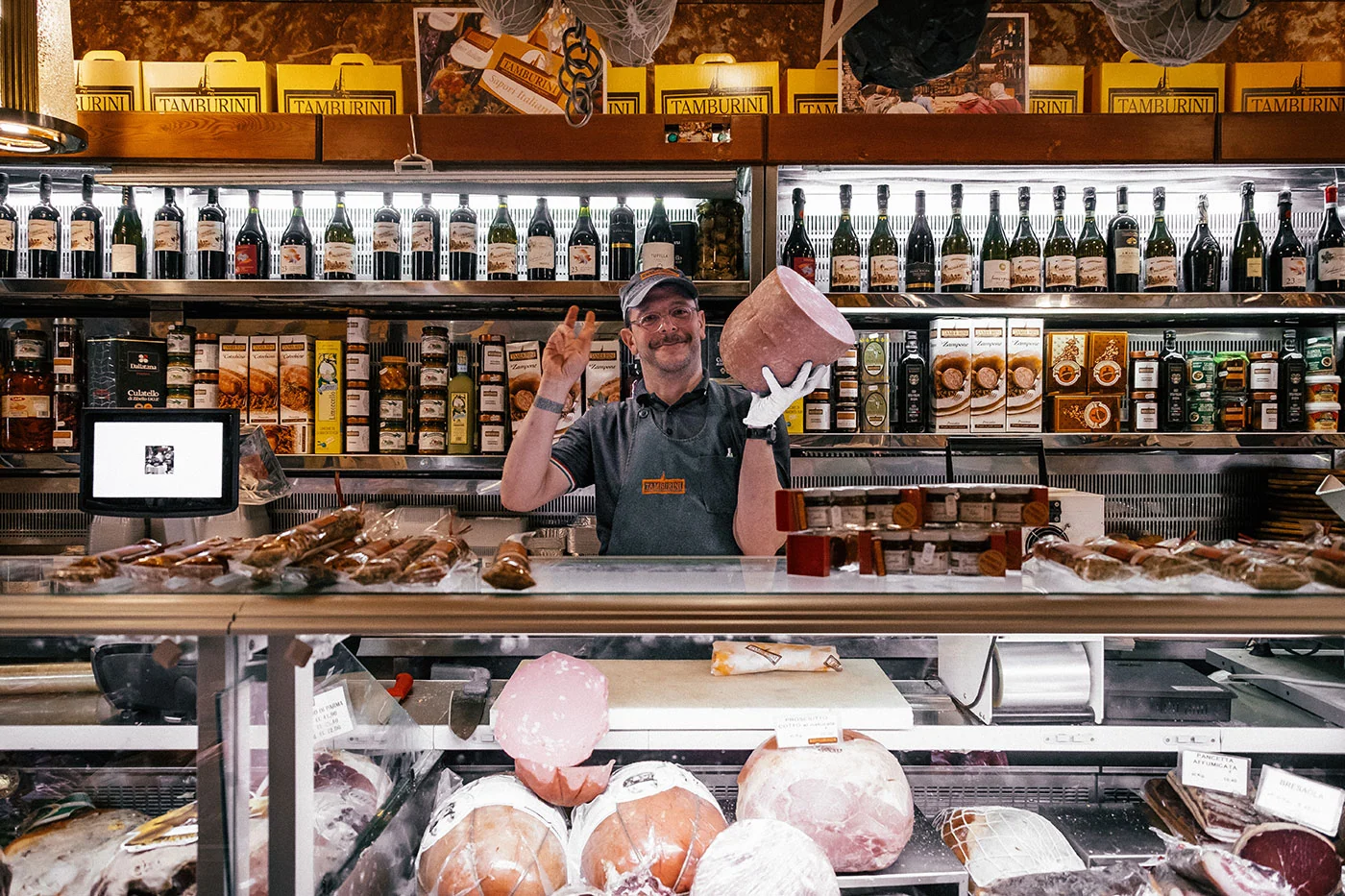
 One of the most beloved dishes in Bologna is ragù alla bolognese, a slow-cooked meat sauce served over heavenly tagliatelle pasta. Another classic is tortellini, small handmade pasta pockets filled with a flavorful mixture of meats, cheeses, and spices. And of course, no trip to Bologna would be complete without sampling the regional staples guaranteed to make any foodie weep with joy. These include the almighty Parmigiano Reggiano (seriously, it’s like cheese heaven), the exquisite Modena balsamic vinegar (Aceto balsamico di Modena) (Tip: the longer the aging, the better), and sandwiches loaded with local cured meats like the sweet Prosciutto di Parma ham and the irresistible Mortadella (also known as Bologna).
One of the most beloved dishes in Bologna is ragù alla bolognese, a slow-cooked meat sauce served over heavenly tagliatelle pasta. Another classic is tortellini, small handmade pasta pockets filled with a flavorful mixture of meats, cheeses, and spices. And of course, no trip to Bologna would be complete without sampling the regional staples guaranteed to make any foodie weep with joy. These include the almighty Parmigiano Reggiano (seriously, it’s like cheese heaven), the exquisite Modena balsamic vinegar (Aceto balsamico di Modena) (Tip: the longer the aging, the better), and sandwiches loaded with local cured meats like the sweet Prosciutto di Parma ham and the irresistible Mortadella (also known as Bologna).
Top travel tip: I spent 5 days traveling around Emilia-Romagna on this fantastic food tour with a local guide where not only did we eat and drink traditional culinary delights, but also got special access and private tastings not otherwise available to the public. Spots are limited, be sure to check availability and book your tour here. For more details on what to expect, here’s my experience on this Beyond Bologna food tour.
For a full-day culinary tour of Bologna’s famous foods and get an exclusive behind-the-scenes look at local factories and family-run producers.
Don’t miss my guide on what to eat in Emilia Romagna
35. Visit FICO World Eataly
In Bologna, where love for food knows no bounds, they even have a theme park dedicated to it: Fico Eataly World. This is a culinary wonderland just a stone’s throw from the city center, where the irresistible flavors of Italy come together in a grand, mouth-watering escapade. In this enchanting kingdom, food courts and cooking classes abound, with each step unveiling the secrets behind Italy’s finest food and wine.
36. Explore the Quadrilatero Old Market
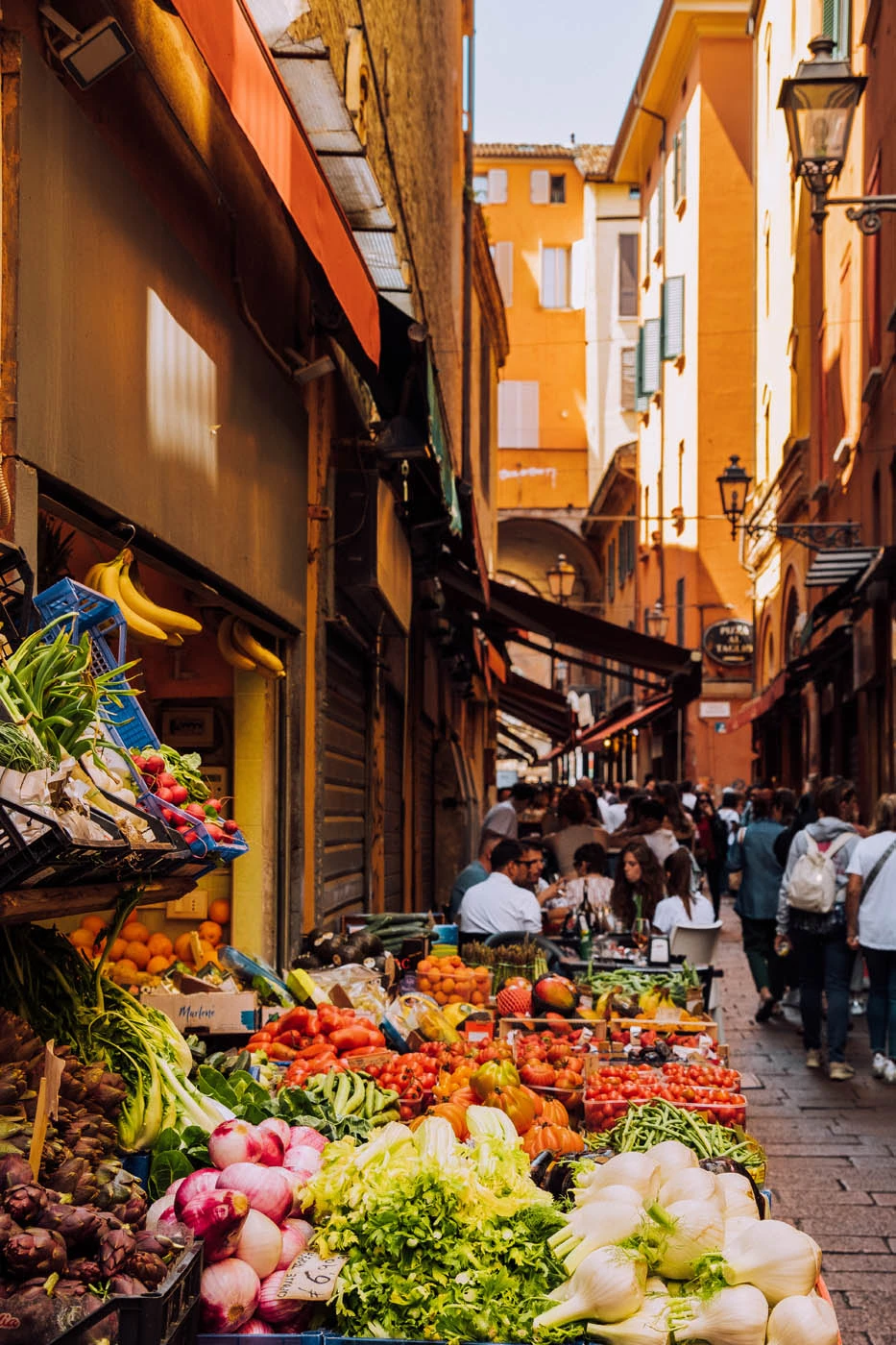
The Quadrilatero Market, an ancient marketplace with Medieval roots, is a lively and vibrant maze of narrow streets steeped in history and filled with mouth-watering culinary delights. Every turn brings you to a family-owned shop or a bustling café, eager to showcase their delectable creations. Additionally, this area is renowned for its specialized handicraft and commercial activities, with many being passed down through generations, adding to its rich tradition.
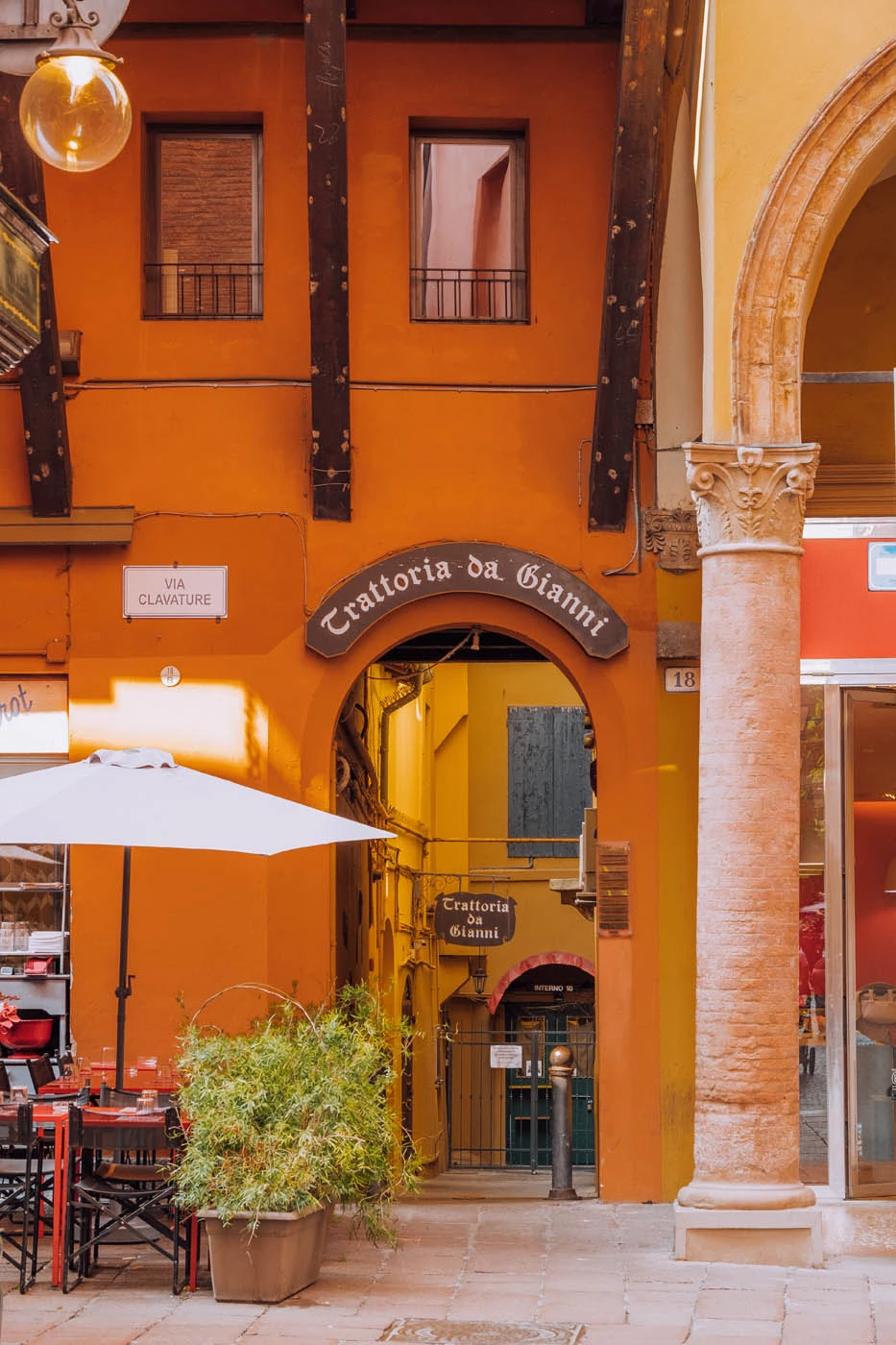
37. Learn local culinary secrets at a cooking class
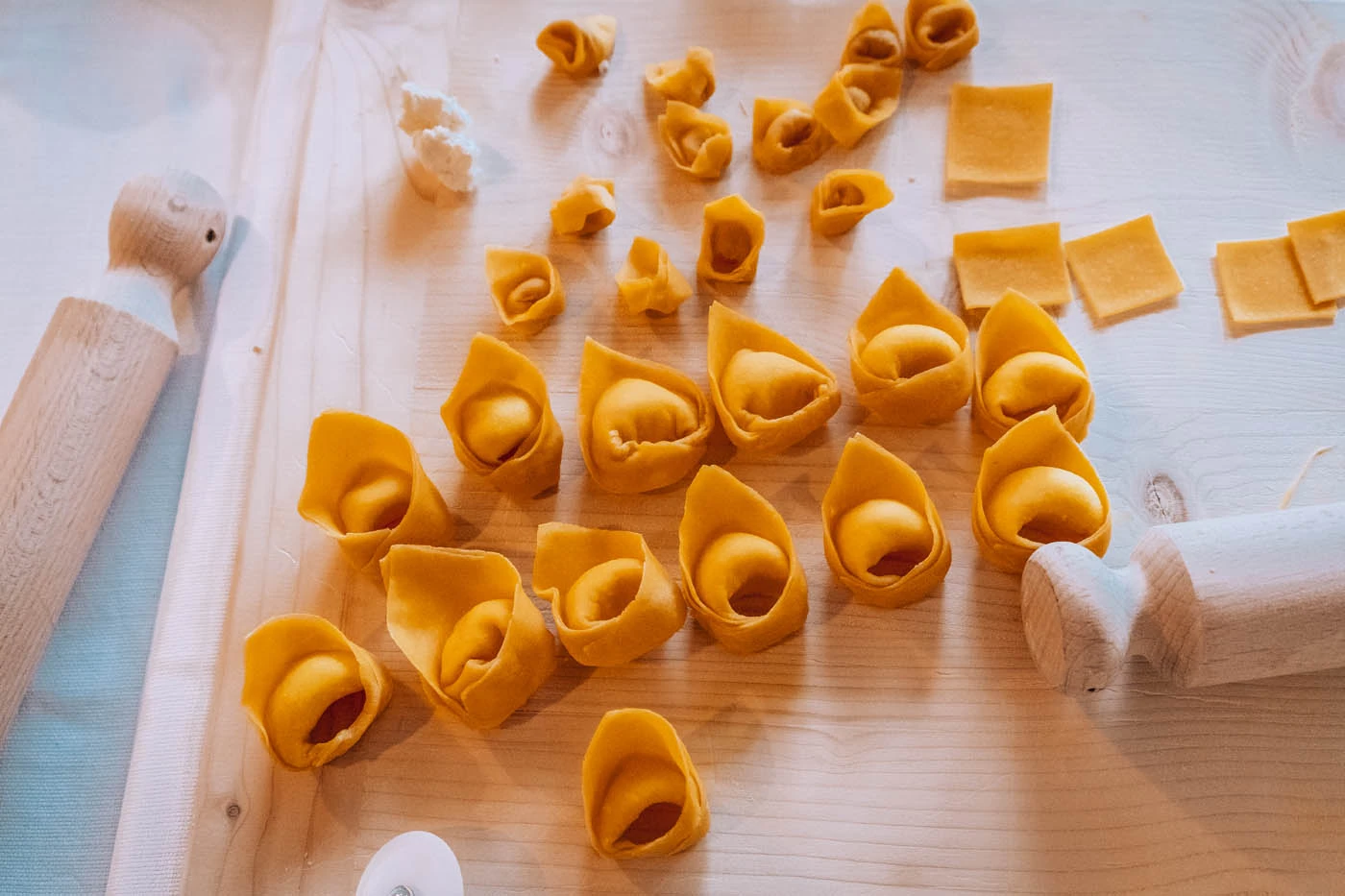 A cooking class in Bologna goes beyond a simple lesson; it’s an unforgettable journey into the very essence of Italian cuisine. Explore vibrant local markets to select fresh ingredients before immersing yourself in a local’s home for an intimate culinary experience, or attend a lively class at a cooking school. In no time, you’ll be mastering the art of making ragù alla bolognese like a true Italian nonna.
A cooking class in Bologna goes beyond a simple lesson; it’s an unforgettable journey into the very essence of Italian cuisine. Explore vibrant local markets to select fresh ingredients before immersing yourself in a local’s home for an intimate culinary experience, or attend a lively class at a cooking school. In no time, you’ll be mastering the art of making ragù alla bolognese like a true Italian nonna.
38. Join a food tour
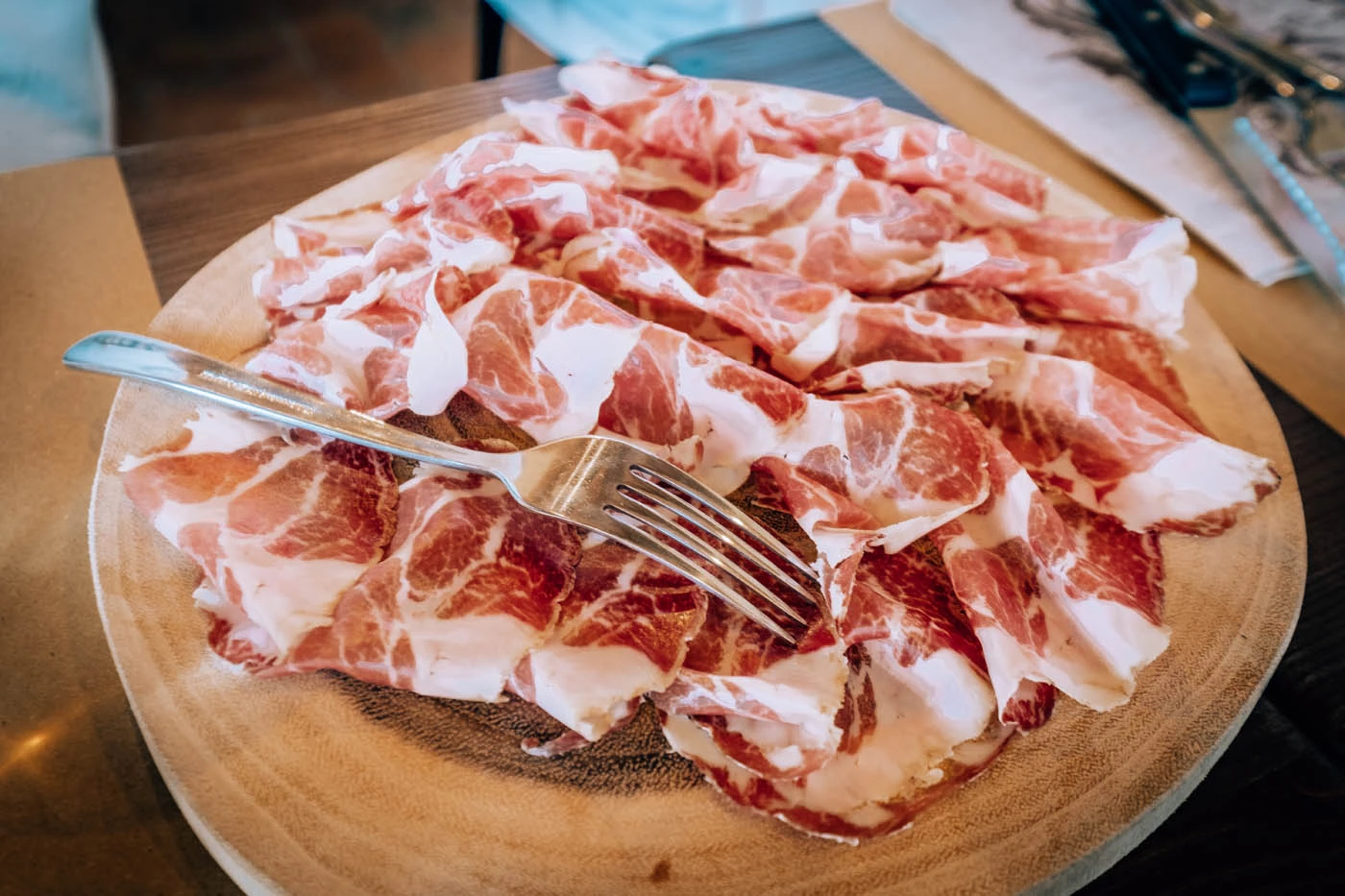
Food tours are another excellent way to savor the essence of Bologna. Alongside expert guides, you’ll uncover the secrets behind local delicacies, forging a special connection to the city’s vibrant food culture. Whether exploring Bologna food with a local, discovering the culinary heritage of Emilia Romagna, or exploring some of the secret culinary hotspots around town, the options are endless.
39. Sample all of the city’s best gelato
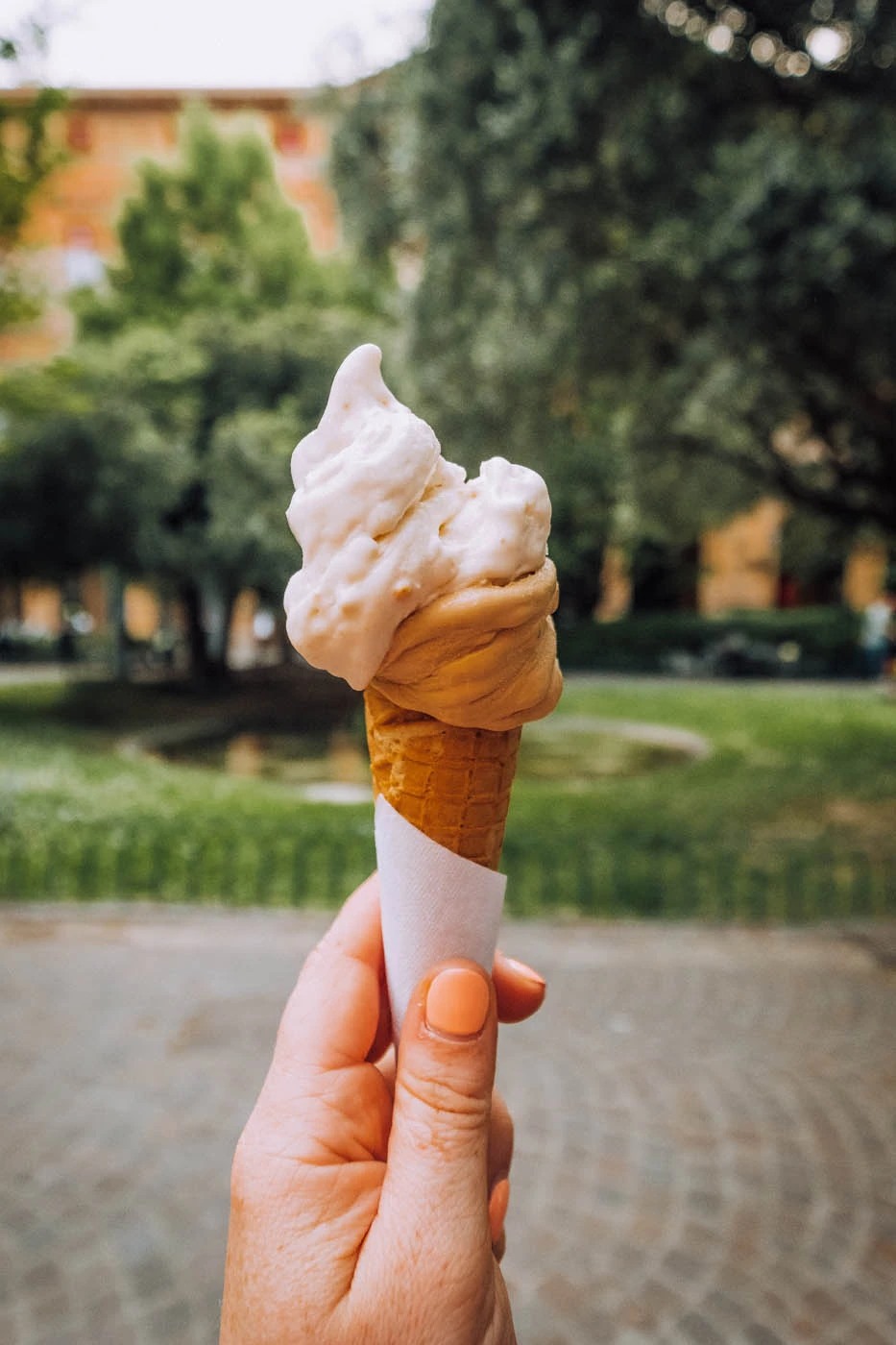 Eating lots of gelato is one of the top things to do in Bologna. The charming cobblestone streets are filled with gelaterias that offer unique and delicious flavors. For example Cremeria Santo Stefano is known for their all-natural ingredients such as baked sheep ricotta with lemon zest and chinotto cheesecake, while Gelateria Ugo is the perfect spot for those who enjoy classic flavors made with artisanal techniques and high-quality raw materials. My personal favourite is Cremeria Cavour with their signature Cavour flavor with Amalfi lemons, ricotta, and pasta Frolla. Buonissimo!
Eating lots of gelato is one of the top things to do in Bologna. The charming cobblestone streets are filled with gelaterias that offer unique and delicious flavors. For example Cremeria Santo Stefano is known for their all-natural ingredients such as baked sheep ricotta with lemon zest and chinotto cheesecake, while Gelateria Ugo is the perfect spot for those who enjoy classic flavors made with artisanal techniques and high-quality raw materials. My personal favourite is Cremeria Cavour with their signature Cavour flavor with Amalfi lemons, ricotta, and pasta Frolla. Buonissimo!
40. Take a wine-tasting tour
Bologna, a vibrant city for food enthusiasts, treats wine as an equally important component of its culinary scene. The region boasts a wide range of wines that tantalize the taste buds, including the vivacious sparkle of Lambrusco, the rich and velvety appeal of Sangiovese, and the subtle charm of Pignoletto. To truly immerse oneself in the captivating spirit of these wines, a wine tour with a local winemaker is a delightful experience that should not be missed.
Unique things to do in Bologna
41. Casa Isolani
Located on Bologna’s Strada Maggiore, Casa Isolani is a stunning 13th-century building that exhibits the grandeur of the medieval era. Its beautiful wooden portico, upheld by soaring oak beams, supports the third floor which extends gracefully over the street below. During your visit, keep an eye out for the three arrows embedded beneath the third floor, which have given rise to many legends. One goes that a noble gentleman once hired three assassins to kill his unfaithful wife. But when the beautiful (and sly) dame appeared at the window unclothed, the archers were so stunned that they completely missed their intended target! If you want to immerse yourself in the marvels of this ancient structure, you can even reserve a room at the cozy bed and breakfast located inside. Check availability and book your stay here.
42. La Piazzola Market
Experience the historic shopping extravaganza of Bologna at the Piazzola Market. Bursting to life every Friday and Saturday at Montagnola Park and Piazza VIII Agosto, this lively bazaar boasts over 400 diverse stalls featuring farm-fresh produce, handcrafted wonders, antique treasures, and trendy threads. Originally a humble cattle market dating back to 1251, the market has evolved into a bustling hub of activity attracting a mix of locals and visitors.
43. The places of Lucio Dalla
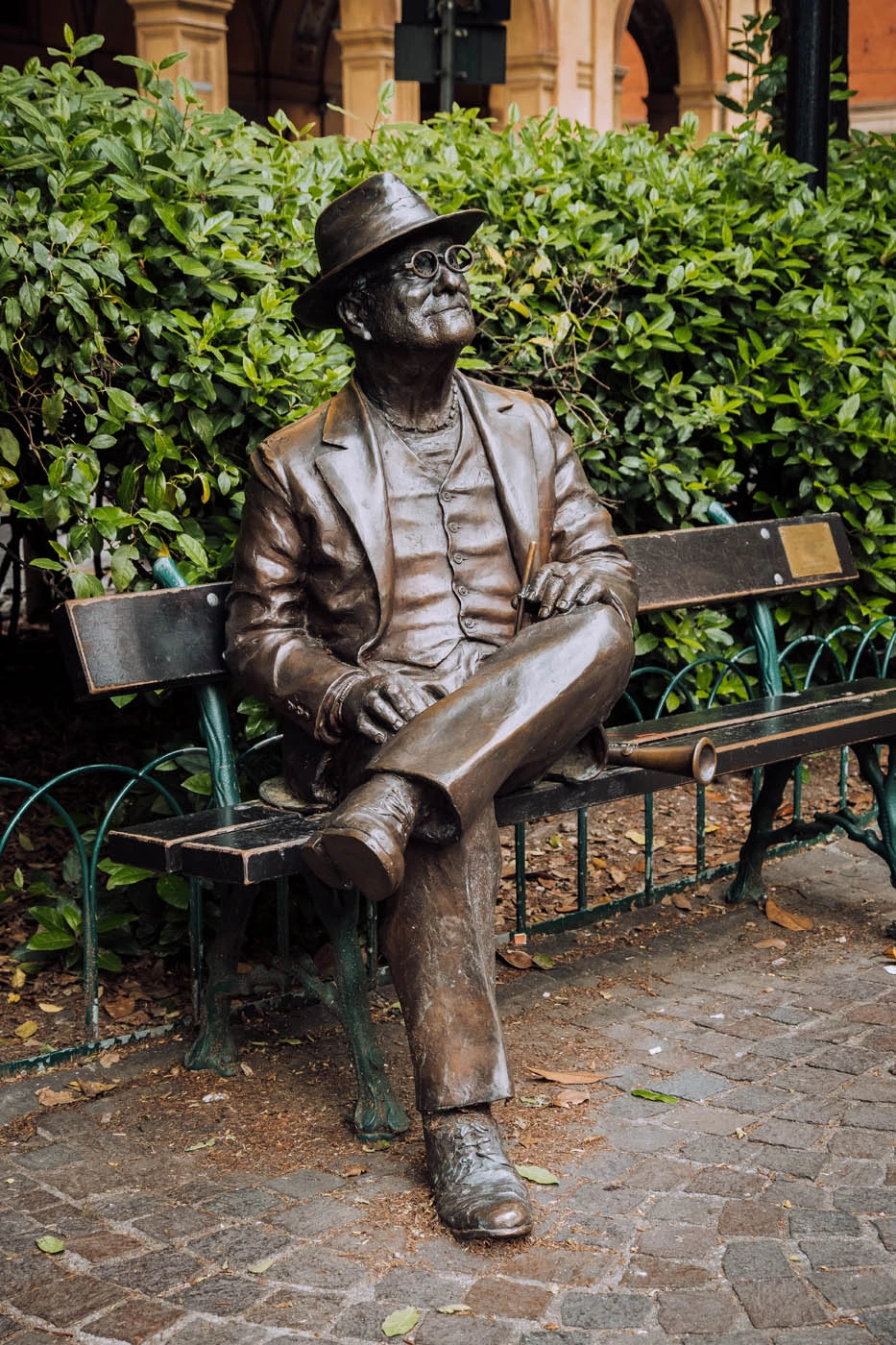
Lucio Dalla statue in Piazza Cavour
Lucio Dalla, a renowned Italian singer-songwriter famous for hits like “Caruso,” was born and raised in Bologna, and his hometown played a crucial role in both his personal and professional life. Bologna is home to several significant places that pay tribute to Lucio Dalla’s lasting legacy and the city’s thriving musical culture, including the Fondazione Lucio Dalla, which was once his home and is now a museum, and the historic Ristorante Da Cesari, where Lucio often dined with his mother.
44. The city’s Jewish Ghetto
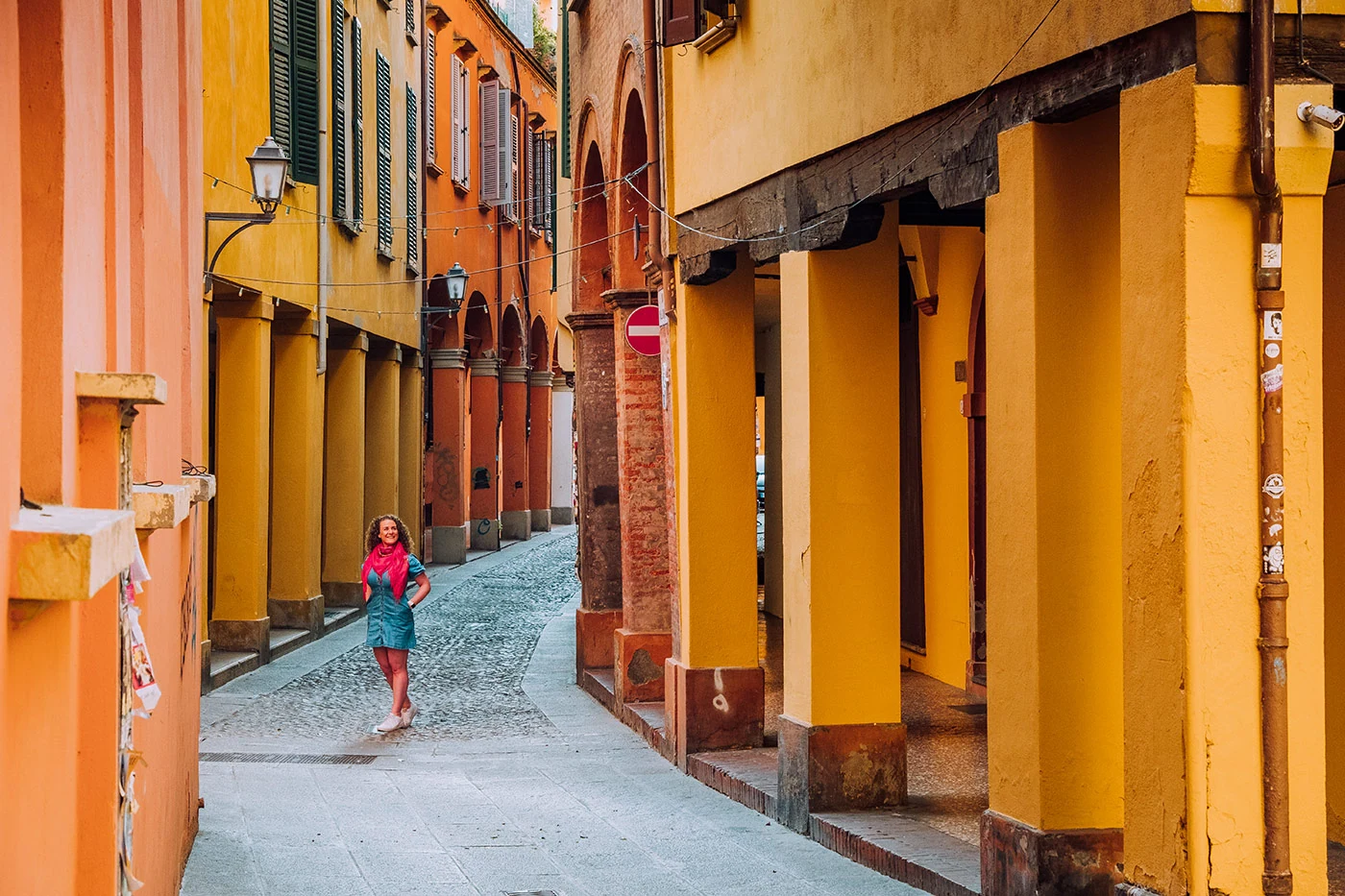
The Jewish Ghetto in Bologna is a unique and charming part of the city that has retained its medieval character. It was established in 1555 by Pope Paul IV, who decreed that the Jewish community should live in a segregated area away from the rest of the city. The area is distinguished by its original structures and lack of traffic, which contribute to its distinctive ambiance. The narrow alleyways, suspended passages, and craft shops of the ghetto still evoke its rich history and heritage to this day.
Things to do in Bologna with kids
If you’re visiting Bologna with kids, you’ll be pleased to know there are many things to do for little travelers.
45. Buses and mini trains
Are you on a family trip to Bologna and wondering how to keep your kids entertained? Hop aboard the City Red Bus! This hop-on-hop-off bus departs almost every hour from Piazza Maggiore and provides a fun and relaxing way to explore the city. The bus will take you up to the stunning San Michele in Bosco, where you can enjoy panoramic views of Bologna. If you want to explore the city’s narrow streets, try the CityBO electric mini train. Alternatively, you can take the San Luca Express, a mini train that follows the long portico from the city up to the Sanctuary of Madonna di San Luca.
46. Step into a time machine
The Time Machine in Bologna is an intriguing piece of technology that provides an unparalleled way to immerse yourself in history. Equipped with state-of-the-art VR headsets, you can venture into 3D simulations of various historical scenarios, including the ancient Roman streets of Bologna and the medieval settlements that were once scattered across the region. But that’s not all – this machine also features historical games, a glimpse into Tutankhamen’s tomb, and even a journey into Dante’s inferno!
47. Gelato Museum
Everybody loves a scoop of gelato! It’s not only creamy and colorful but also bursting with flavors that always leave us wanting more. And guess what? You can now experience the magic of gelato making by visiting the Gelato Museum in Bologna! This wonderland of all things gelato is located just outside the city. At the museum, you can explore the fascinating history and art of gelato making, learn how to whip up a batch yourself and indulge in a delicious tasting session. This is an experience that the whole family can enjoy!
48. Museum of Zoology
The Zoology Museum in Bologna is perfect for a thrilling animal adventure! This museum is home to over five million animal specimens, minerals, and fossils from around the world, making it a must-see attraction. Established in the 18th century, it’s one of Europe’s oldest and most significant zoological museums. Kids will have a blast exploring the collection, which features everything from tiny insects to massive mammals, including rare and endangered species. And the best part? It’s completely free!
49. Giardini Margherita
Giardini Margherita is Bologna’s largest and most beloved green oasis, spanning 26 hectares of lush greenery that make it a paradise for kids. The park offers a picturesque lake with a bridge, delightful playgrounds, and vast lawns where children can frolic freely. On bustling weekends, it’s a prime spot for people-watching. To recharge your batteries, visit the Chalet dei Giardini Margherita, a charming bar located on an island in the middle of the lake that adds a touch of magic to your visit.
50. The rides at Luna Farm in FICO
Luna Farm is a farm-themed amusement park located in FICO Eataly World where children can join Gianni the farmer and his animal friends. This fantastic park offers 14 exciting attractions, such as flying pigs, bumper cars, and a labyrinth, making it a perfect world for families to explore. In addition, there are immersive virtual reality experiences and interactive workshops that celebrate Italy’s rich agricultural heritage.
51. Geological Museum Giovanni Capellini
One of the things to do in Bologna that’s guaranteed to impress your kids is to visit the Geological Museum of the University of Bologna. This museum was founded in 1860 by Giovanni Capellini, a famous geologist who was the first to hold a chair of Geology in Italy. It boasts a collection of almost one million exhibits, covering over 500 years of educational activities and scientific research. Your kids can explore various rocks, plants, and fossils, and even get a glimpse of some of the ancient creatures that roamed our planet millions of years ago.
Delve into the region’s famous Motor Valley
Bologna and the Emilia Romagna region hold the key to Italy’s legendary sports car brands; thus, embarking on a journey through their fascinating museums is among the best things to do while in Bologna.
52. Ferrari Museum in Maranello
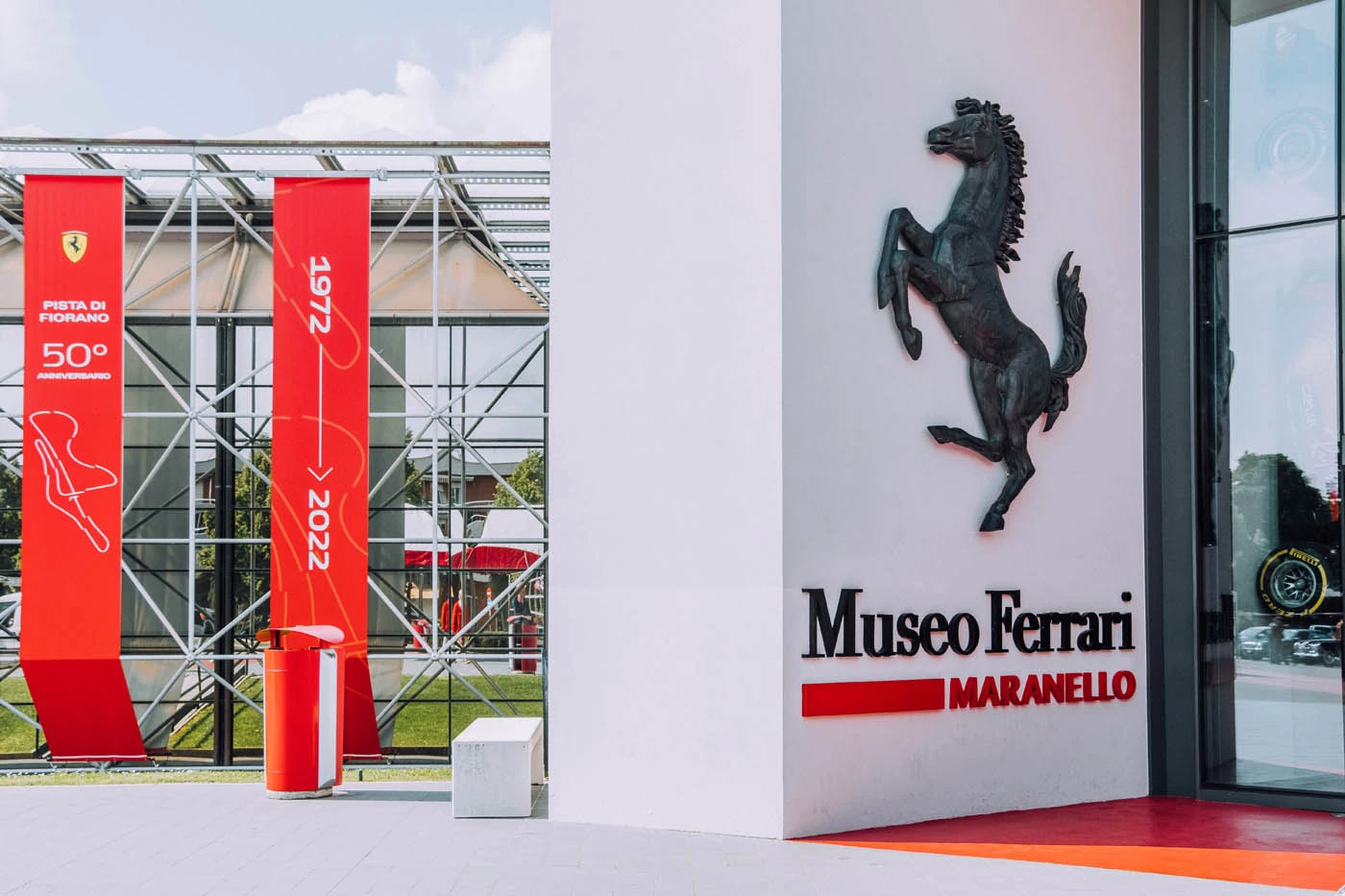
 The Ferrari Museum in Maranello is a dream come true if you love the unmistakable allure of the red automotive queen. You can take a trip through the captivating history of this iconic brand, with unforgettable cars on display, engaging exhibits bringing you into the thrilling world of Formula 1, tailored experiences, and a scenic shuttle ride around the Fiorano Track and Enzo Ferrari Avenue. Booking in advance is essential. Unfortunately, no photography is allowed on their private tours of the Ferrari complex, which offers a fascinating behind-the-scenes glimpse of this world-famous motor company.
The Ferrari Museum in Maranello is a dream come true if you love the unmistakable allure of the red automotive queen. You can take a trip through the captivating history of this iconic brand, with unforgettable cars on display, engaging exhibits bringing you into the thrilling world of Formula 1, tailored experiences, and a scenic shuttle ride around the Fiorano Track and Enzo Ferrari Avenue. Booking in advance is essential. Unfortunately, no photography is allowed on their private tours of the Ferrari complex, which offers a fascinating behind-the-scenes glimpse of this world-famous motor company.
53. Enzo Ferrari House Museum in Modena
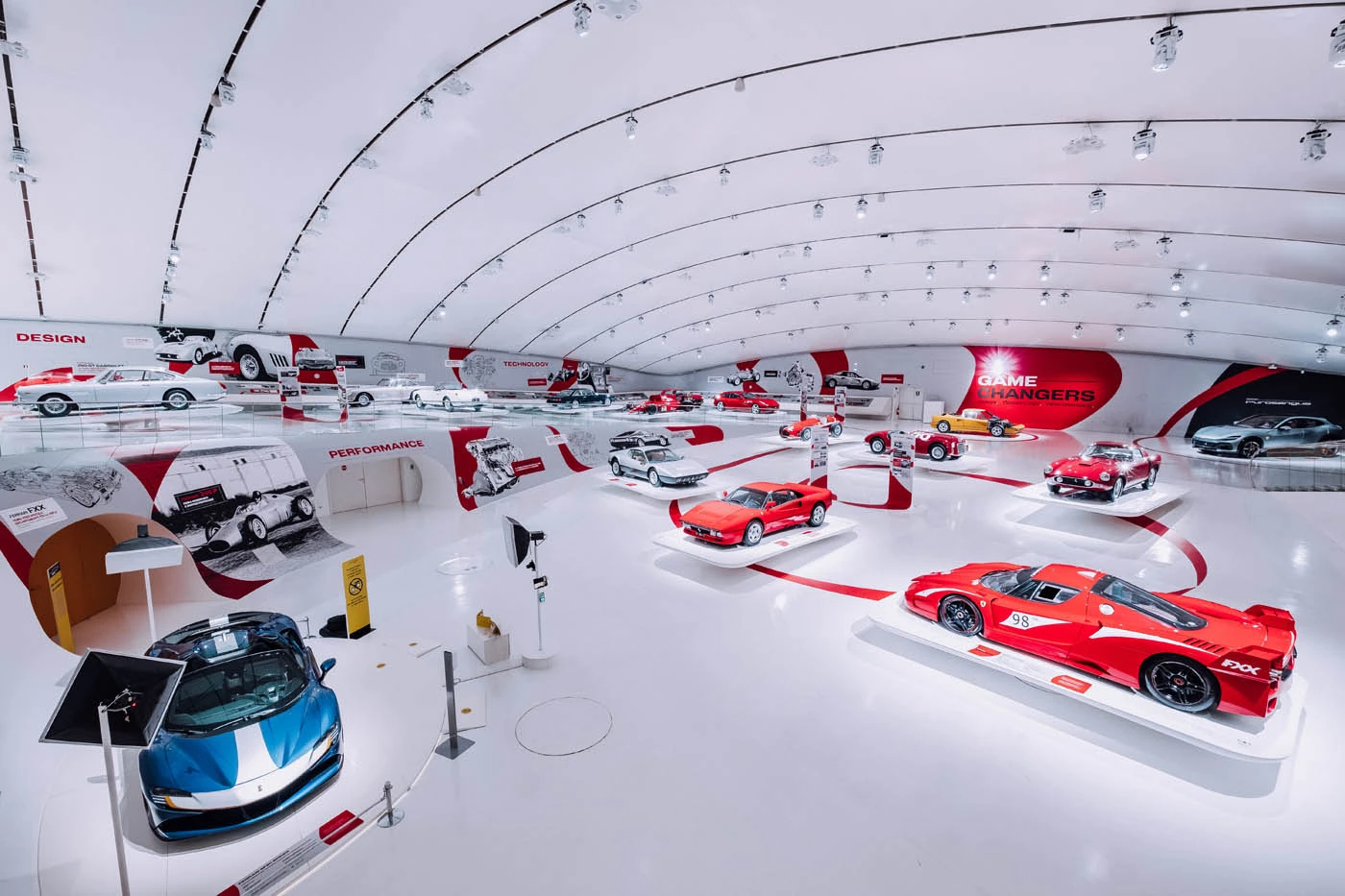

Michael Schumacher’s Formula 1 car
Perhaps lesser-known but definitely worth visiting, is the Enzo Ferrari House Museum in Modena. A short 30-minute train ride from Bologna Centrale will take you to Modena Centrale. From here it’s just a 7-minute walk to this museum dedicated to the mastermind and life of Enzo Ferrari.
In true Ferrari style, they’ve thought of everything, offering a free shuttle service that connects the Enzo Ferrari House Museum in Modena city centre to the Ferrari Museum in Maranello, some 30 minutes by car/shuttle or over an hour with public transport.
The Enzo Ferrari House Museum in Modena offers a unique glimpse into the life and achievements of Enzo Ferrari, the legendary founder of the Ferrari brand. This museum, located within the birthplace of Enzo Ferrari, provides an intimate setting to explore his personal history and his contributions to the world of automotive excellence.
Inside the museum, you can explore a range of exhibits and artifacts that showcase Enzo Ferrari’s life, including personal belongings, photographs, and documents. One of the highlights is the opportunity to see Michael Schumacher’s Formula 1 car, a testament to Ferrari’s racing legacy.
The Enzo Ferrari House Museum provides an immersive experience where you’ll learn about Enzo’s passion for racing, his entrepreneurial spirit, and his relentless pursuit of excellence. Through interactive displays and multimedia presentations, visitors can delve into the world of Ferrari and gain a deeper understanding of the brand’s legacy and development of its logo throughout the years.
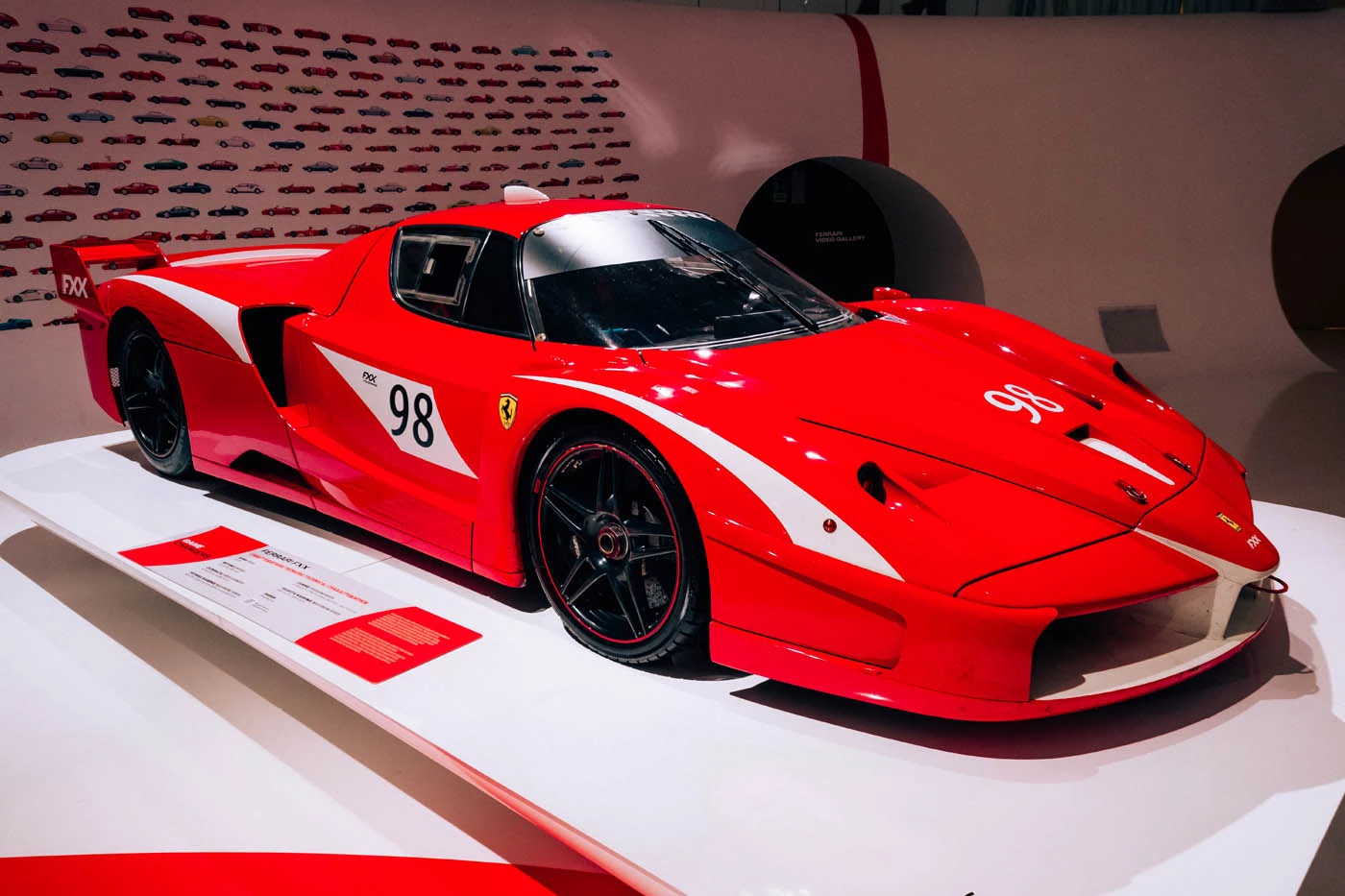
Ferrari FXX 98
 54. Lamborghini Museum
54. Lamborghini Museum
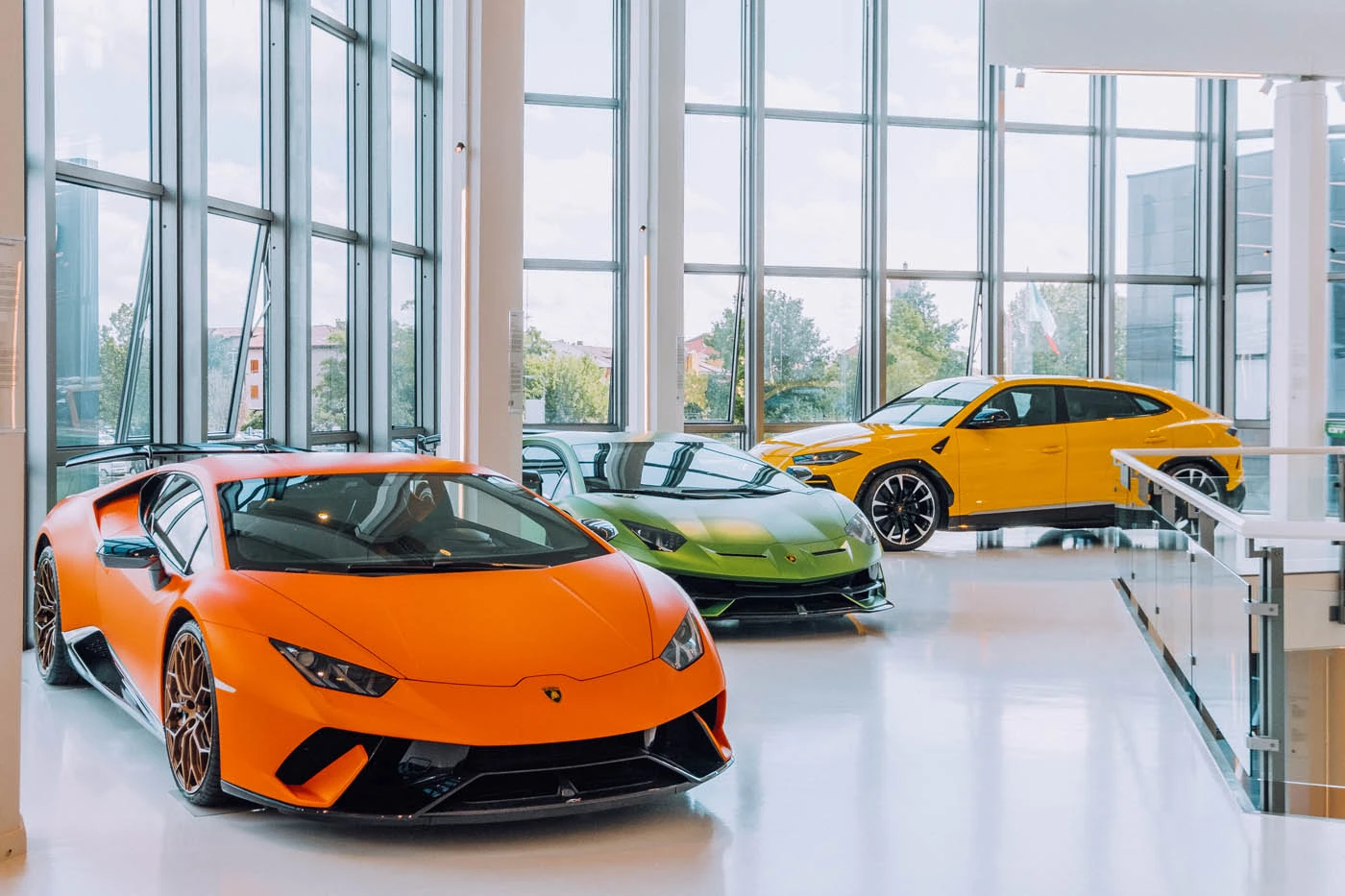
 The Lamborghini Museum houses a sleek collection of iconic Lamborghini models, showcasing the evolution of unparalleled design and engineering prowess. What started as a tractor-building activity evolved into an iconic brand symbol of Made in Italy design and style. As you step inside, you’ll be transported through a fascinating journey from the first 350 GT to the latest cutting-edge Huracán, along with multimedia installations and exclusive memorabilia.
The Lamborghini Museum houses a sleek collection of iconic Lamborghini models, showcasing the evolution of unparalleled design and engineering prowess. What started as a tractor-building activity evolved into an iconic brand symbol of Made in Italy design and style. As you step inside, you’ll be transported through a fascinating journey from the first 350 GT to the latest cutting-edge Huracán, along with multimedia installations and exclusive memorabilia.

55. Ducati Museum
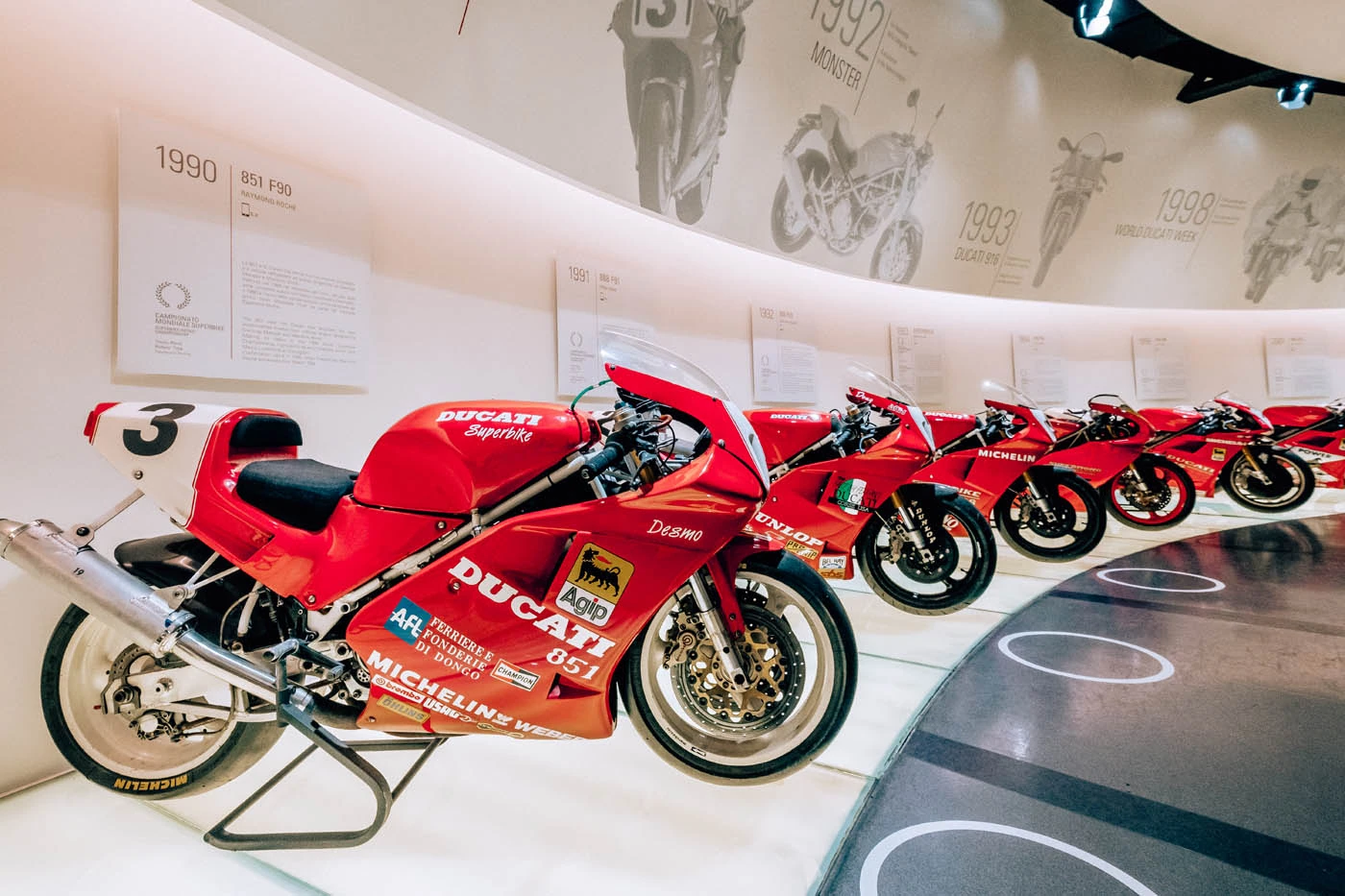
Established in 1926 as a manufacturer of radios and adding machines, Ducati has grown to become the most prominent motorcycle brand in Italy. Situated just outside the historical center of Bologna, their factory headquarters houses the Ducati Museum, which exhibits the evolution of Ducati motorcycles. The collection features legendary models, rare prototypes, and limited editions. Additionally, you can enjoy an immersive experience with interactive displays and a virtual reality room.
Experience the ultimate thrill of a lifetime on a Ferrari, Ducati, and Lamborghini tour in Bologna or join this cars and food tour in Bologna for a taste of the region’s famous products!
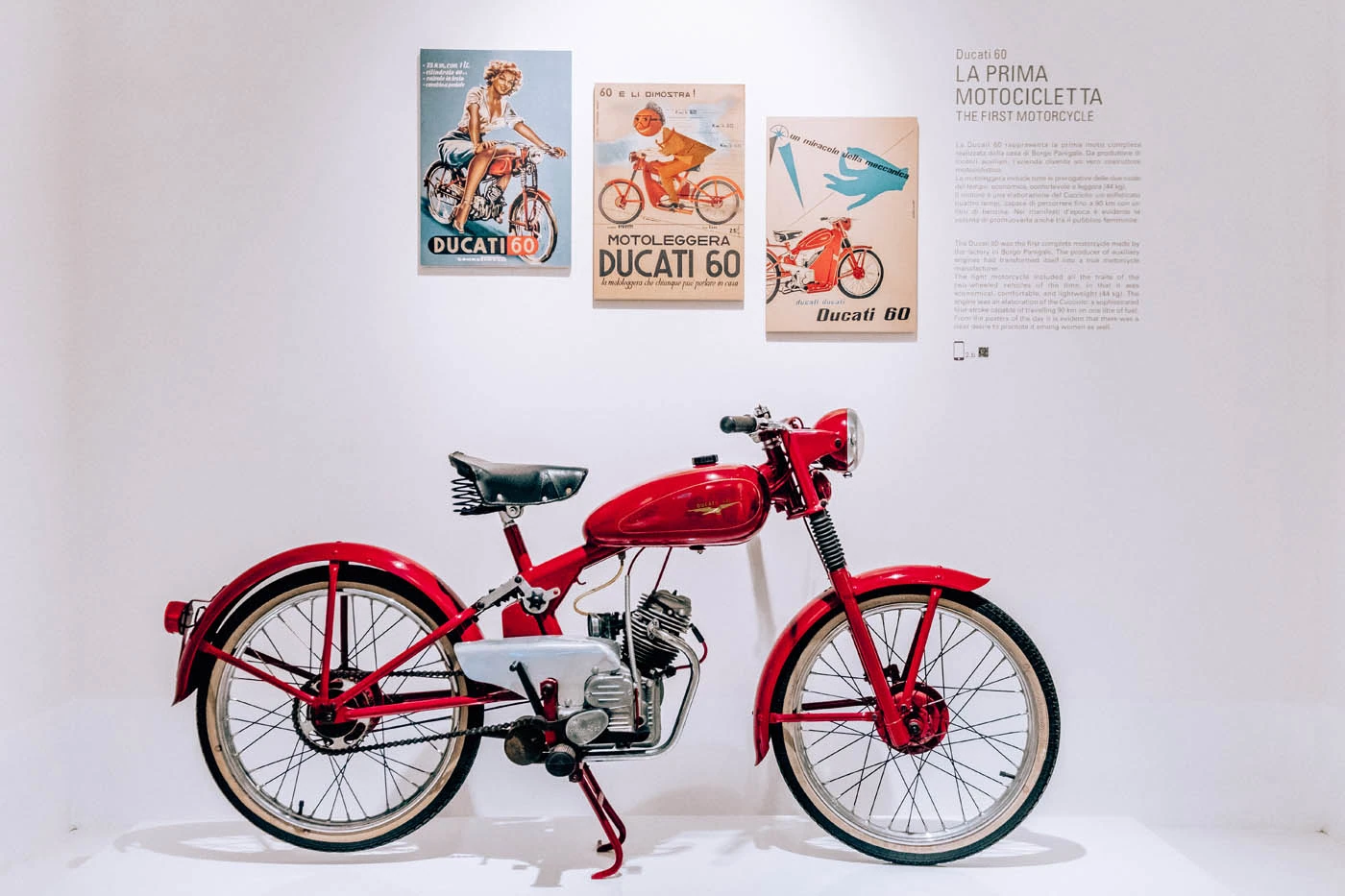

Where to stay in Bologna
 Bologna is a city where you’ll have no problem finding accommodations that suit your needs. Here are a few ideas:
Bologna is a city where you’ll have no problem finding accommodations that suit your needs. Here are a few ideas:
Luxury Accommodation in Bologna
At the Grand Hotel Majestic, the top-rated hotel in the city, you’ll be transported to a bygone era of opulence and elegance. For a more intimate and cozy stay, the Art Hotel Commercianti is a stunning boutique hotel nestled inside a 12th-century building that once served as the local government. And if you’re looking for a unique experience, the Palazzo di Alcina is a luxury B&B situated in a 17th-century palace adorned with Renaissance art and breathtaking antiques.
Mid-Range Accommodation in Bologna
Hotel Porta di San Mamolo is conveniently situated near all the popular attractions and features a charming, leafy courtyard. If you choose B&B Casa Faccioli, you’ll be staying in the former residence of a prominent artist from Bologna, and can enjoy stunning views of the city’s iconic towers from your room’s balcony. Alternatively, Casa Bertagni is a unique and stylish guesthouse located in the university district, where you can immerse yourself in a blend of art, history, and culture.
Budget Accommodation in Bologna
The Dopa Hostel is a charming lodging situated in the heart of Bologna’s historic center, boasting a distinctive and lively ambiance, thanks to the unique and handmade furnishings. If you’re seeking a simple accommodation for a good night’s rest, then Hotel Perla or Hotel Panorama are perfect options. These hotels offer clean and comfortable rooms that come equipped with all the essentials.
Family Accommodation in Bologna
The Starhotels Excelsior is a gorgeous 4-star hotel close to the train station with spacious family rooms and plenty of amenities to keep your little ones entertained. Meanwhile, Hotel Touring is near the Basilica of San Domenico and offers a variety of services that are geared towards families, such as babysitting and stroller rental (plus a stunning panoramic terrace). Lastly, if you need more space, the Nuovo Hotel del Porto has convenient studios that can accommodate up to 5 guests.
Apartments in Bologna
Meet Me in Bologna is a modern studio apartment just a stone’s throw away from Piazza Maggiore, while Che Bello is a comfortable two-level apartment for up to 4 guests close to museums and theatres. If you’re planning on taking day trips, then Brilliant in Burgundy near the train station is ideal and features a charming balcony for drinks under the stars.
If you’re unsure about which area to choose for your stay, check out this guide for recommendations on where to stay in Bologna
Don’t be treated like a tourist. Learn Italian with my 80/20 method
Travelling to Italy? Don’t be treated like a tourist! Live your best travel experiences and learn Italian for less than the cost of eating at a tourist trap restaurant or a taxi driver who has “taken you for a ride”. I’ve made it easy for you to master the Italian language so you can create lifelong memories as you mingle with locals, get local tips, avoid tourist traps, and make new friends. Who knows, you might even be invited over for afternoon tea by a lovely Sicilian family like I was! Read all about how speaking Italian changed my life and check out my online Italian video course here.
Here’s what my students are saying:

I really enjoyed the Intrepid Italian course, it certainly exceeded my expectations. The learning methodology is great,and easy to follow and found that Iprogressed much faster in the last 4 weeks than I ever did on my own or using other language apps. Grazie mille Michele, I can’t wait until I can put my new skills into action!- Roma Small
Join now and learn anywhere, anytime
Planning a trip and need travel insurance? Get a free quote from World Nomads here.
Don’t miss these guides to Bologna and Emilia-Romagna
- What to Eat in Bologna: 15 MUST-Try Traditional Food and Drink in Emilia-Romagna
- What to Do in Bologna in a Day (The PERFECT Bologna Day Trip Itinerary)
- Where to Stay in Bologna: Best Hotels & Apartments By Neighbourhood
- The BEST EMILIA ROMAGNA Food Tour // Tastings, Cooking Classes & Factory Tours
- 31 BEST Things to do in Parma, Italy
- 15 BEST Hotels in Parma, Italy // Where to Stay in Parma for Every Budget
Like it? Pin it for later!
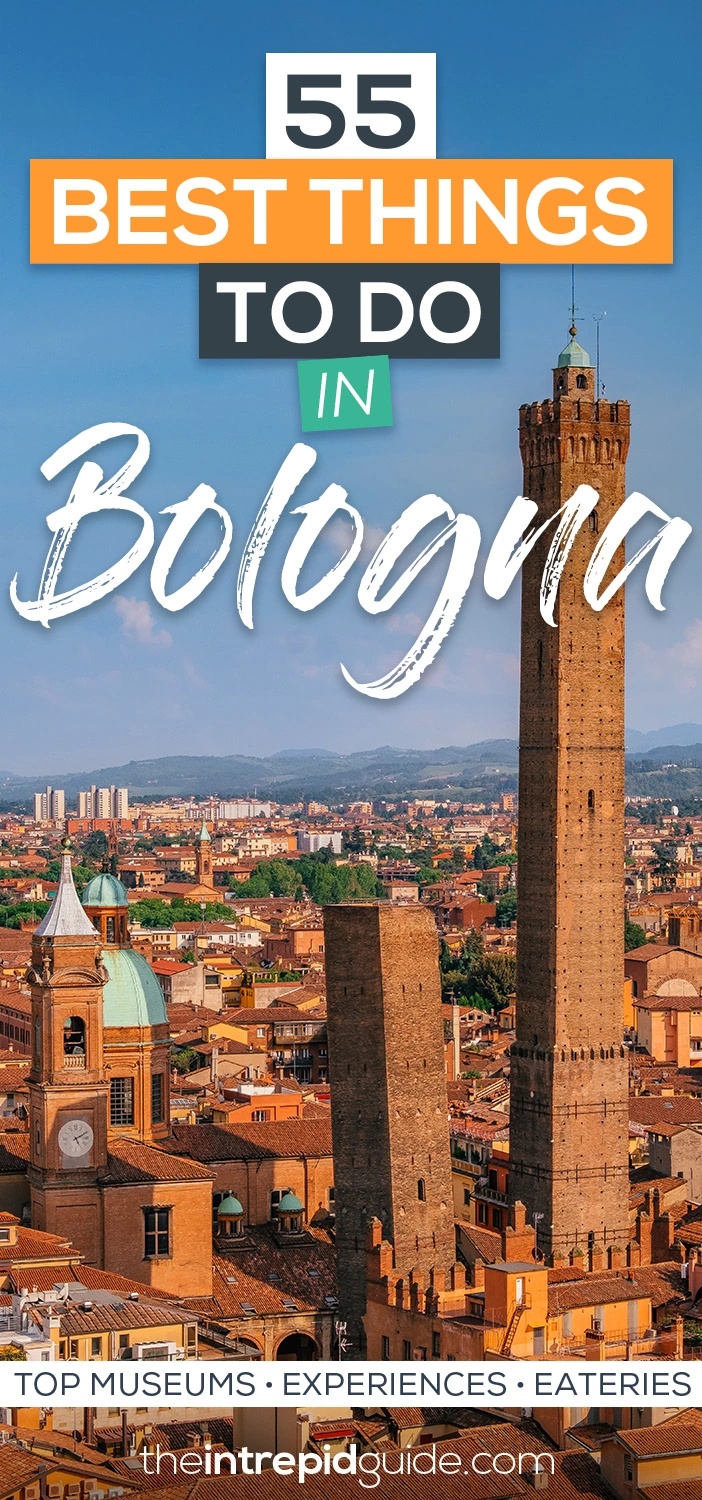
Over to you!
Did you enjoy this guide? Let me know using the comments section below or join me on social media to start a conversation.
Thanks for reading and I hope you enjoyed this post.
Like what you see? Subscribe using the form below to have all of my posts delivered directly to your email.

